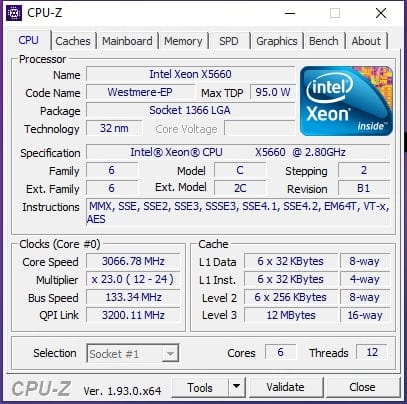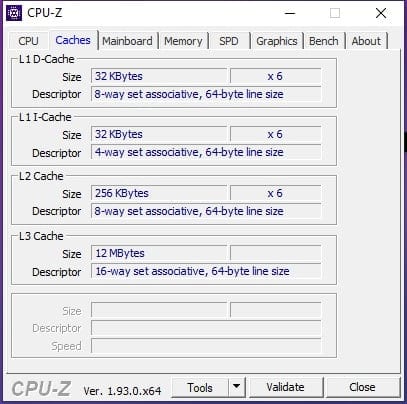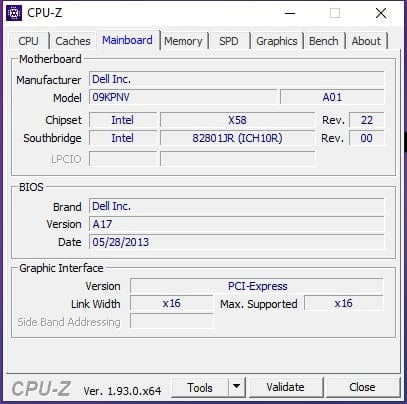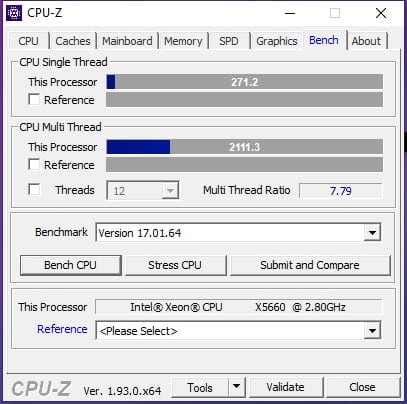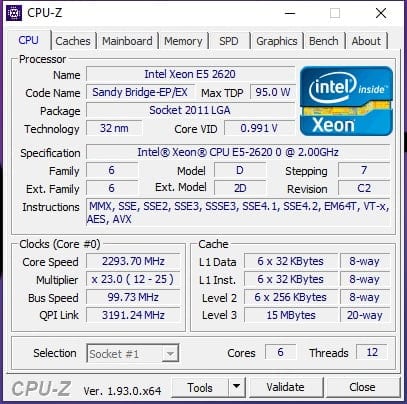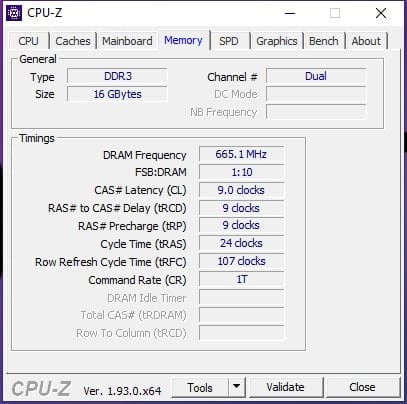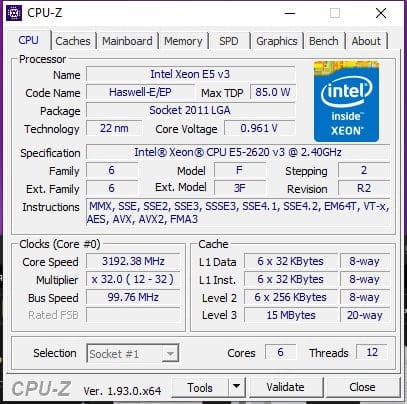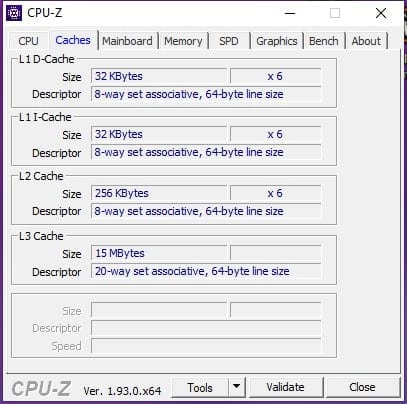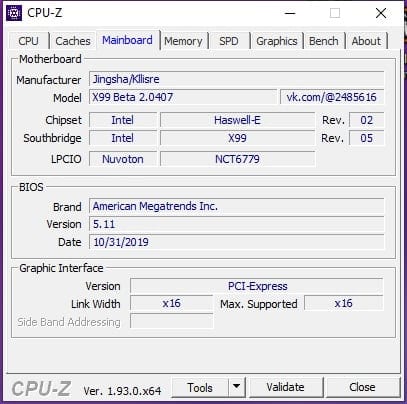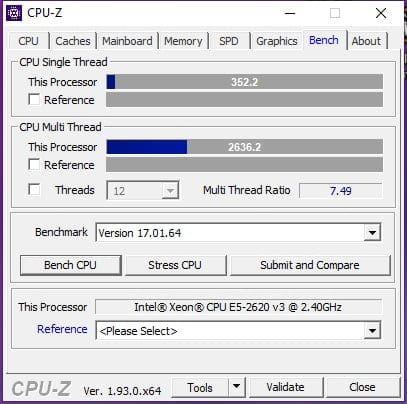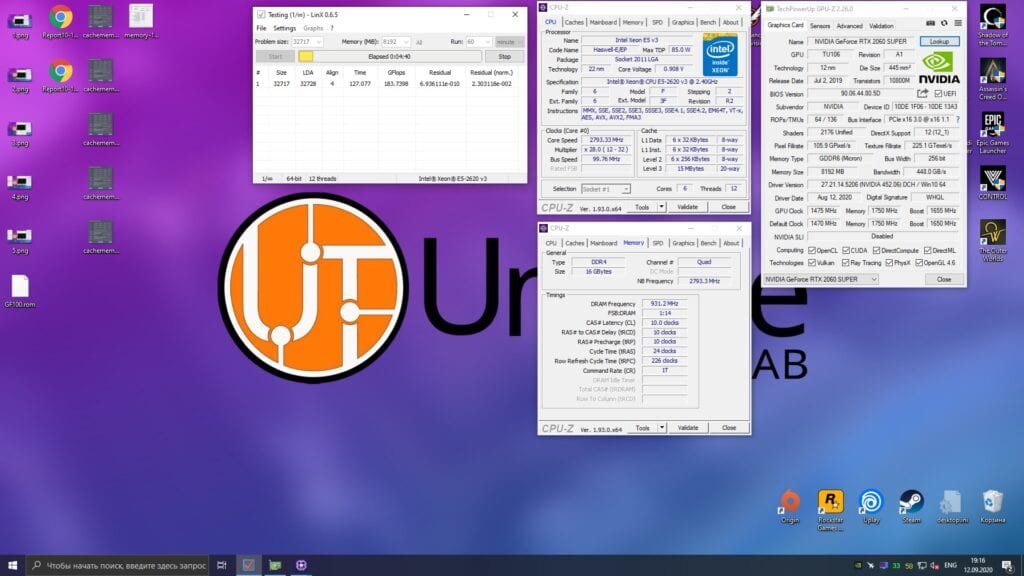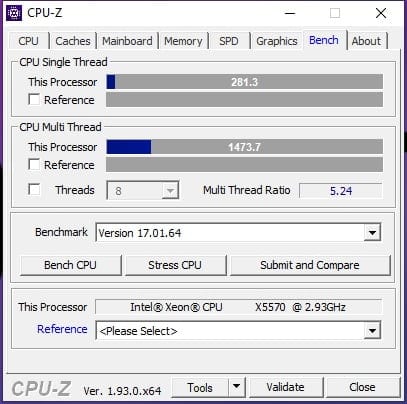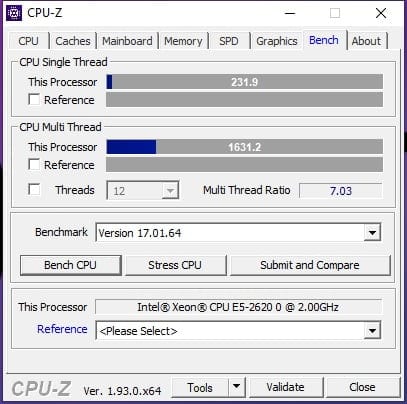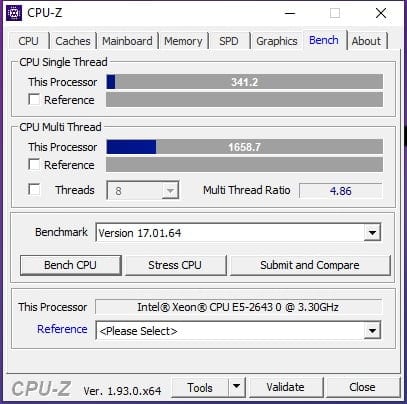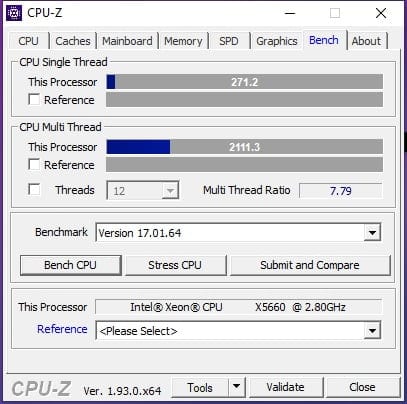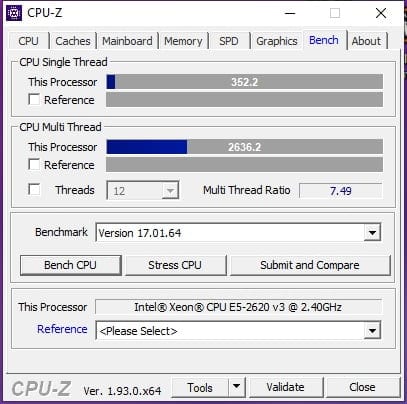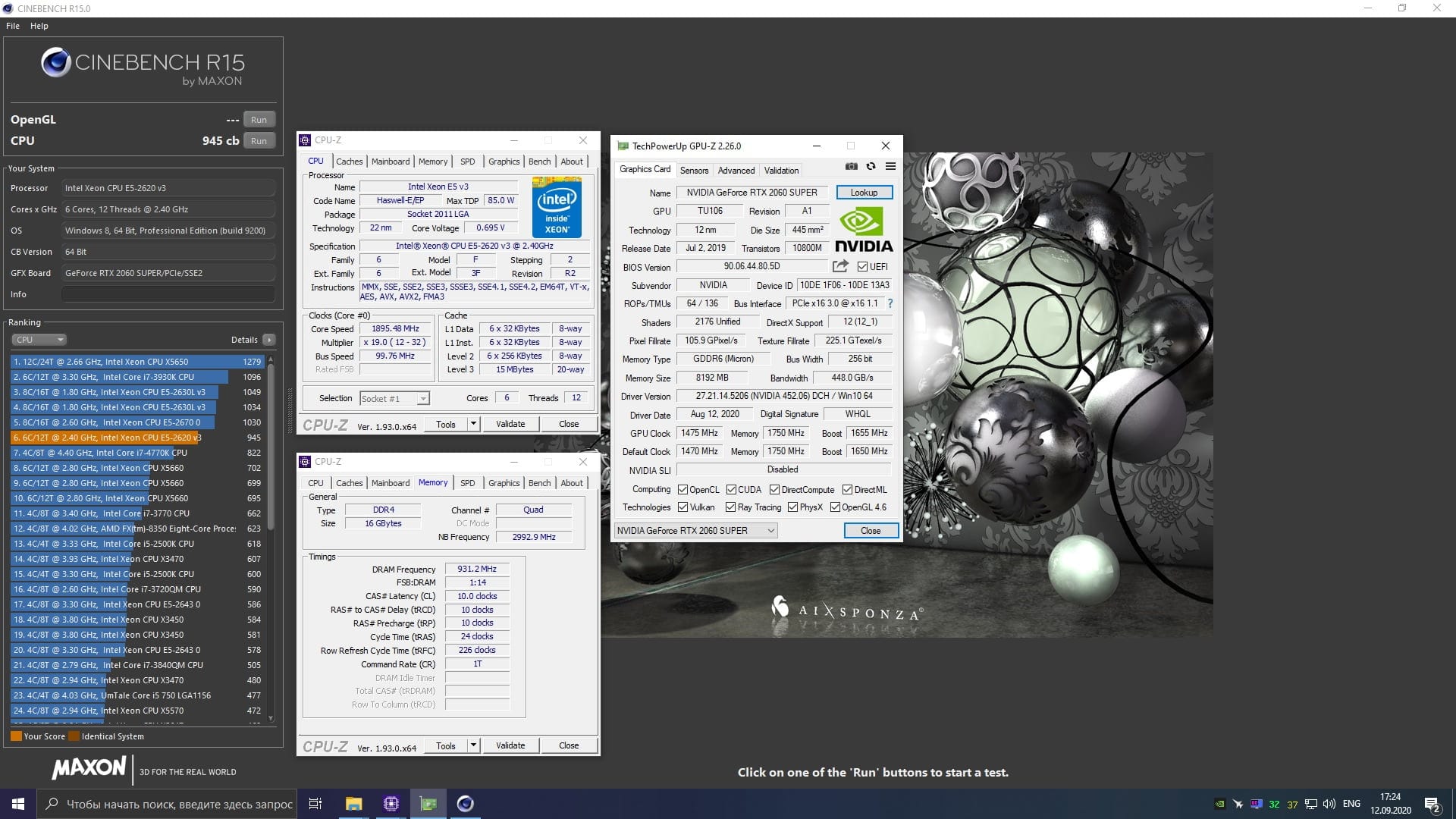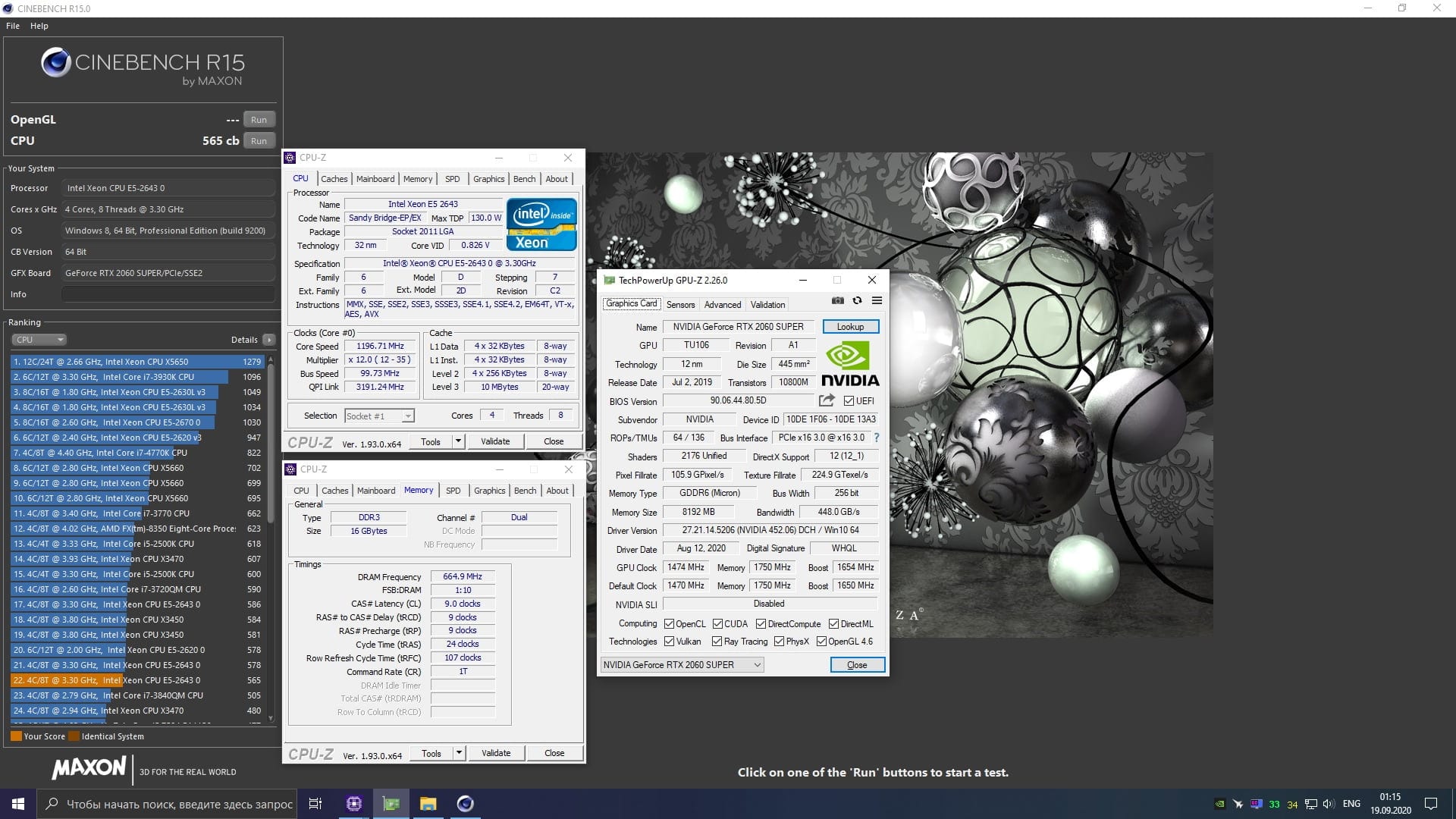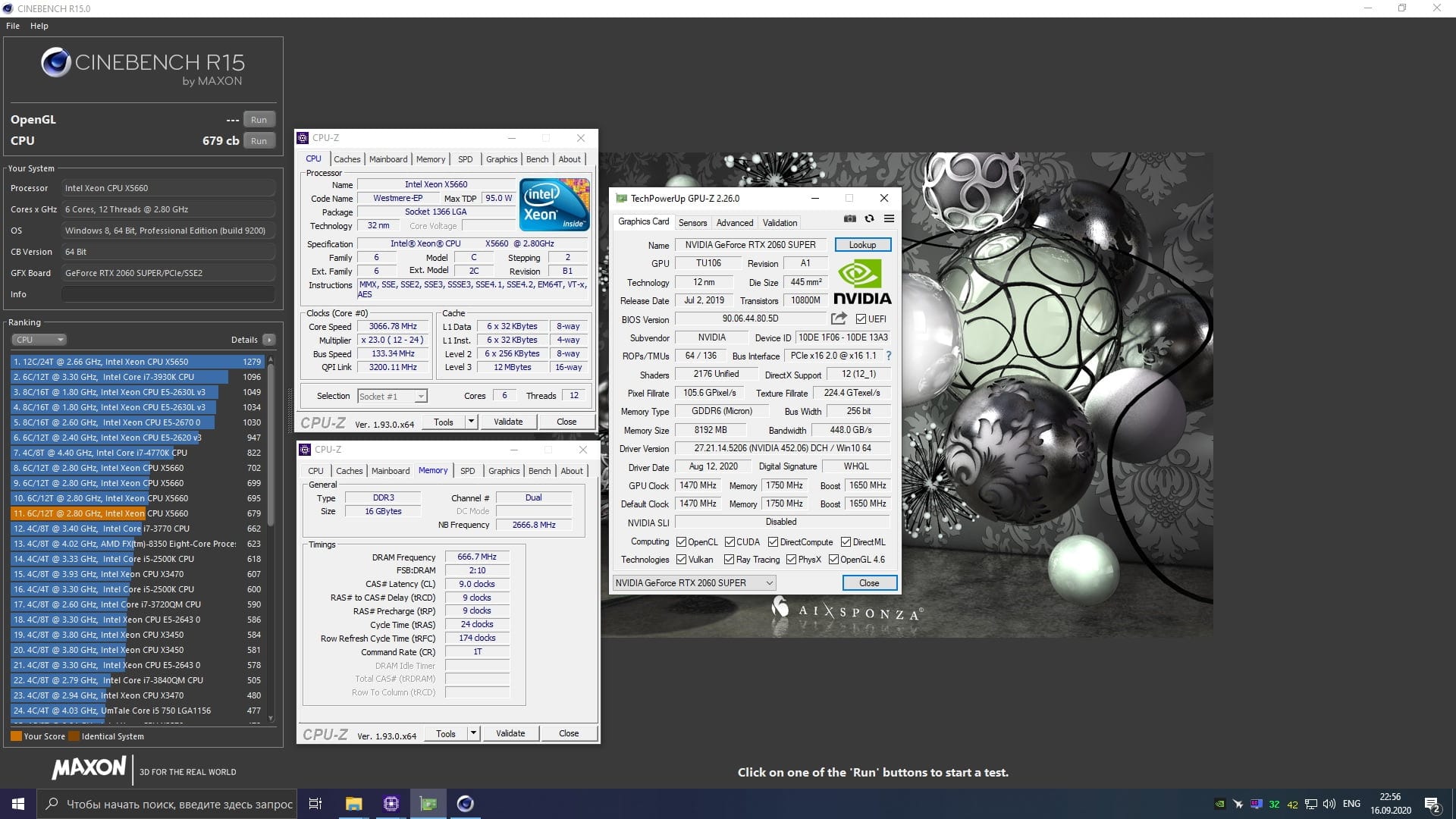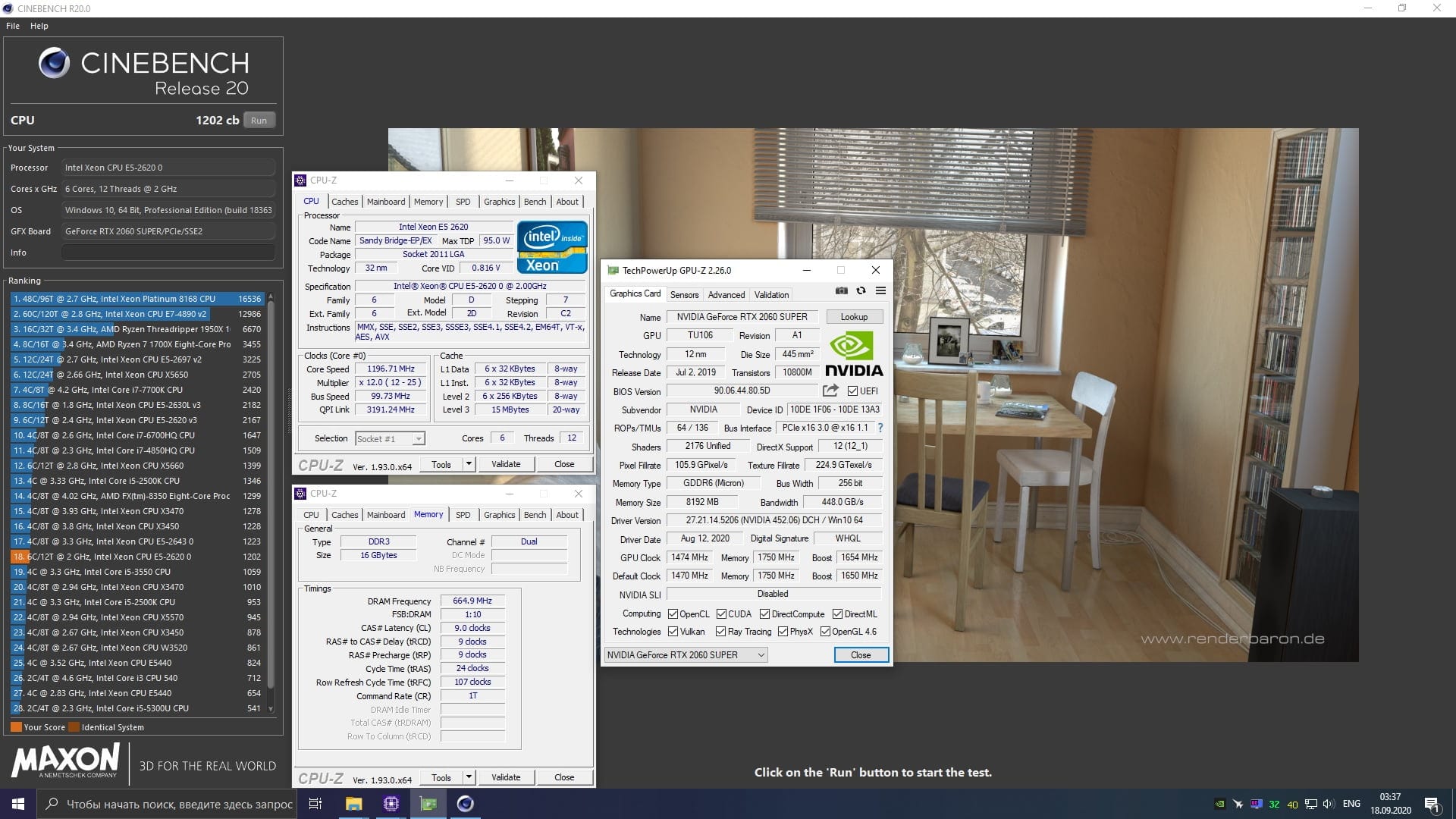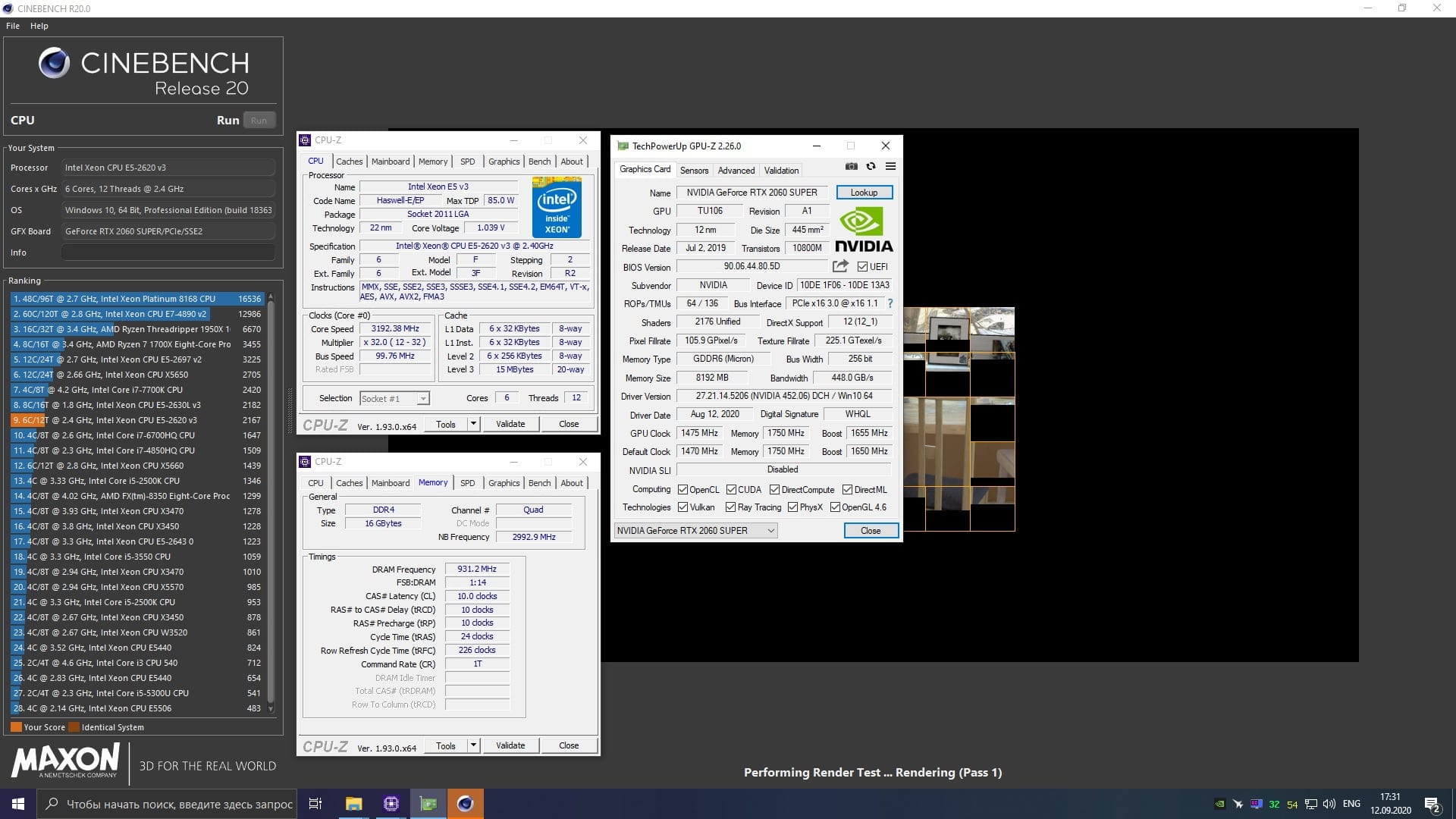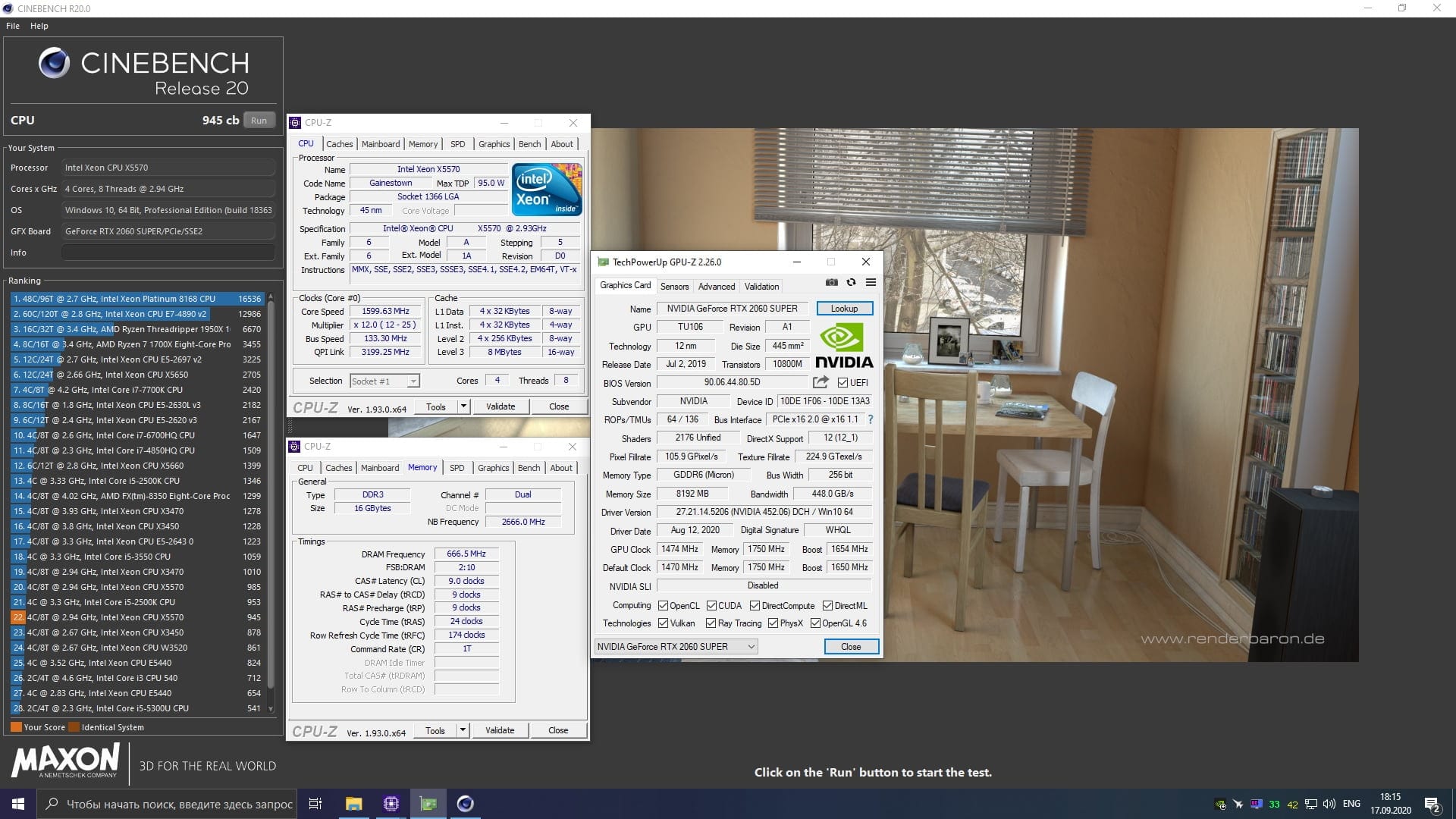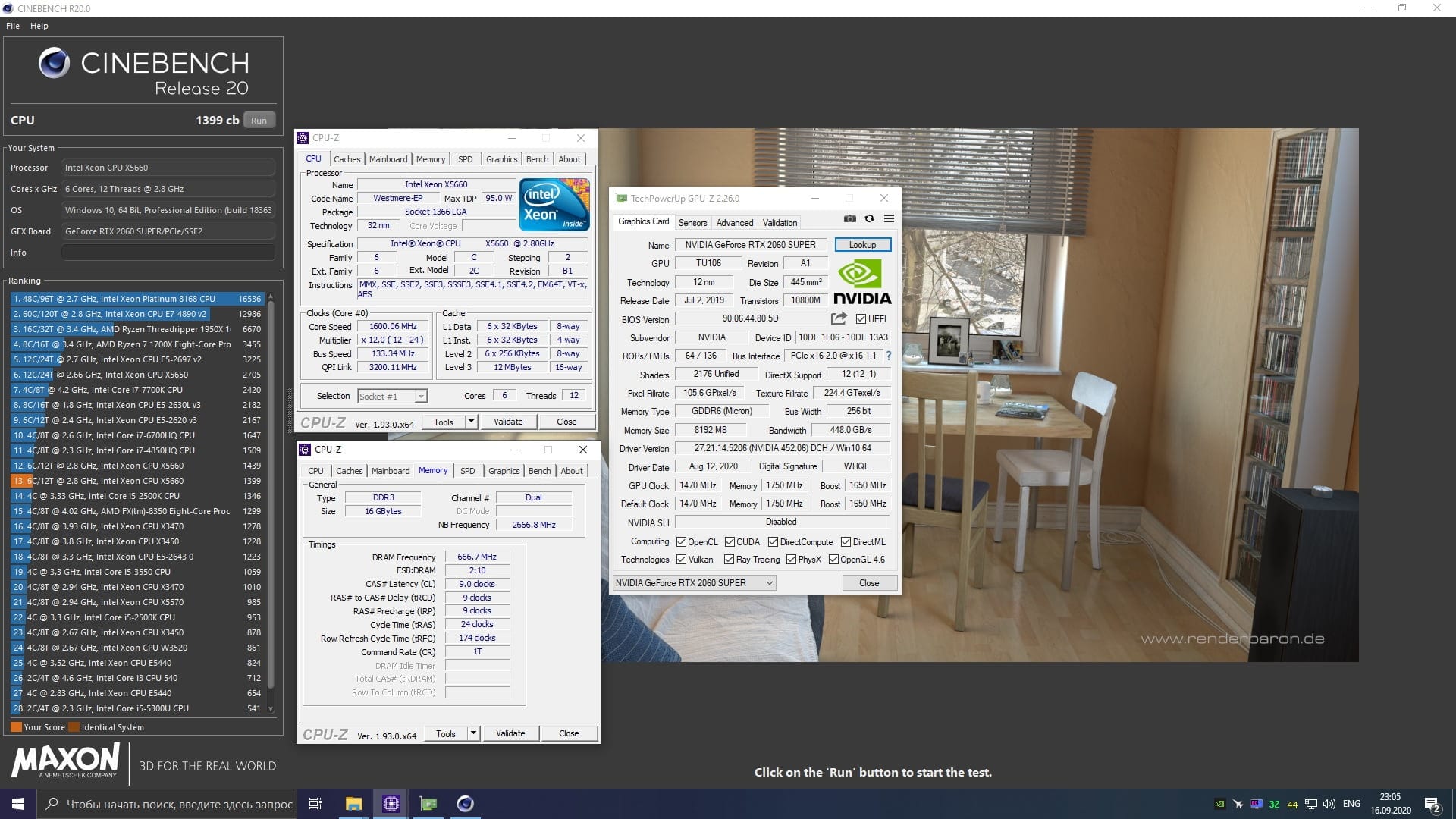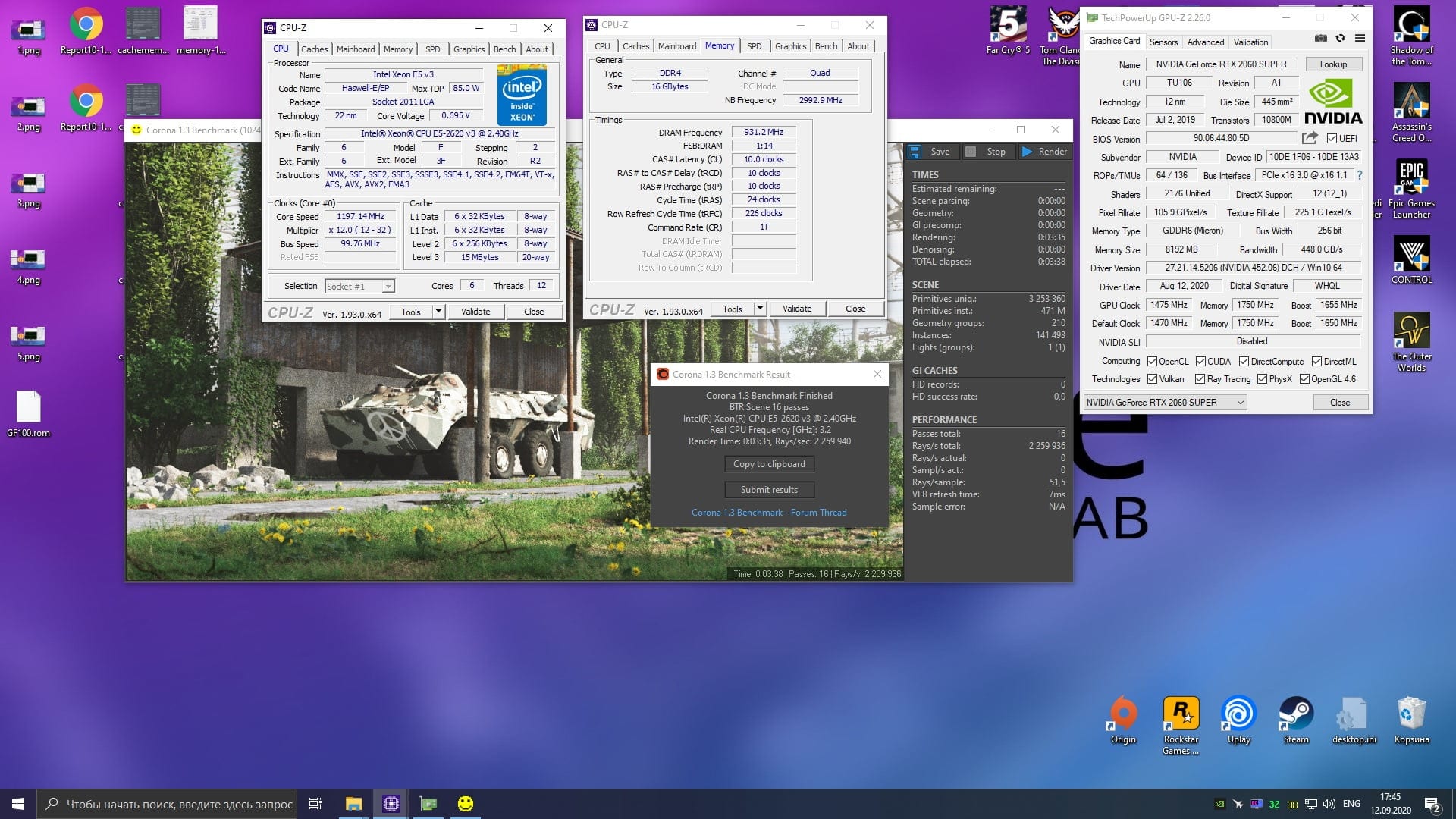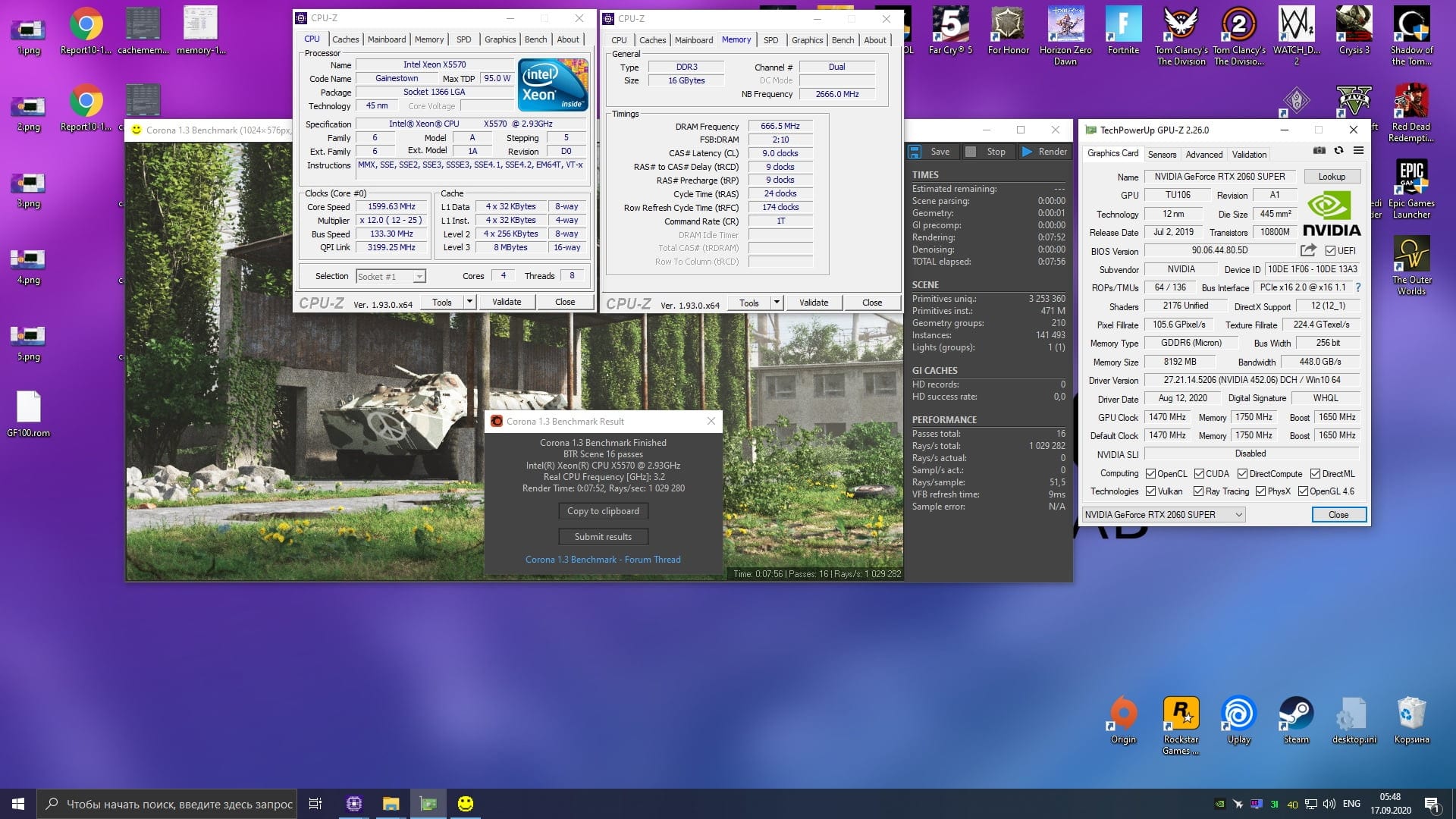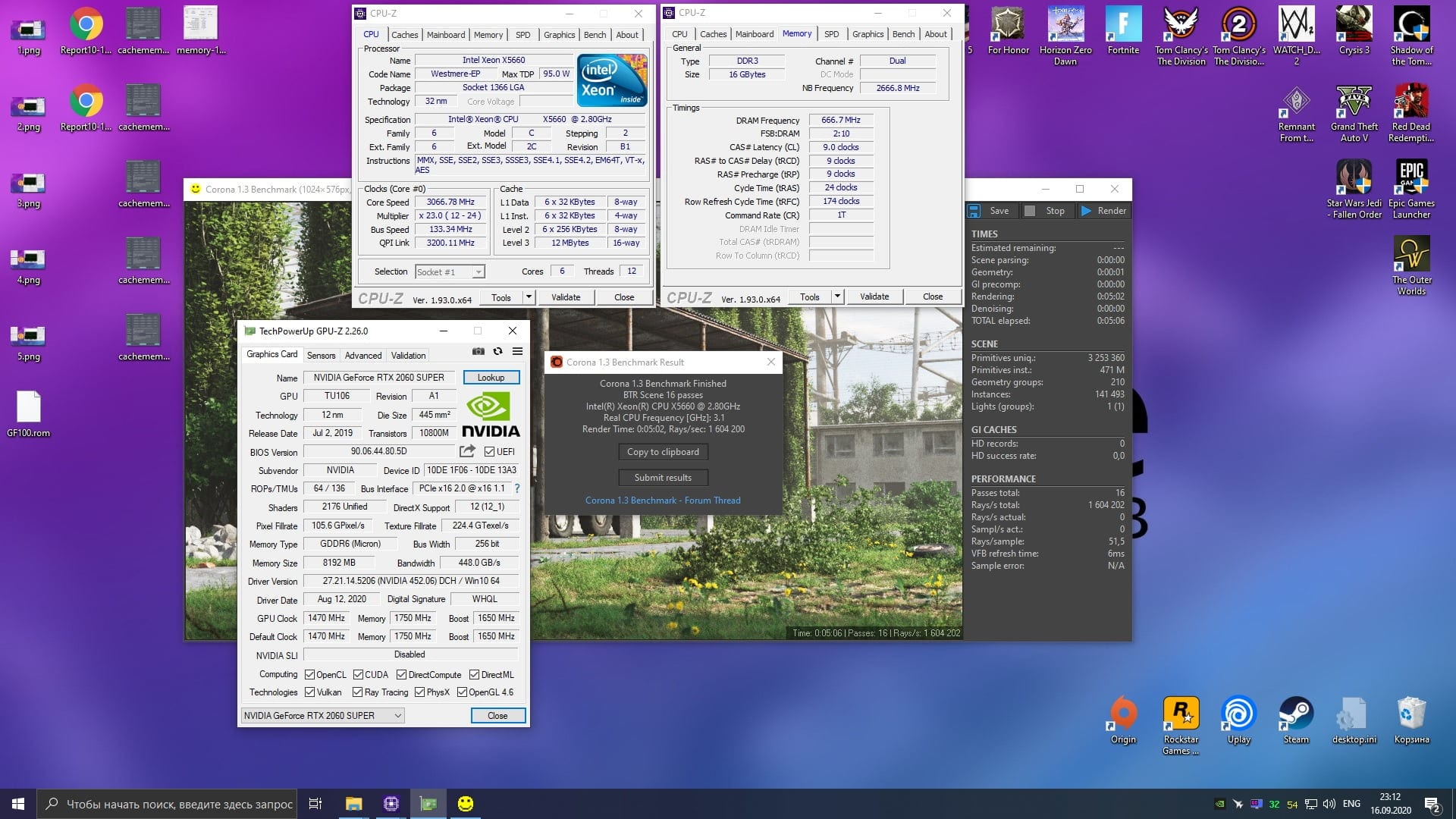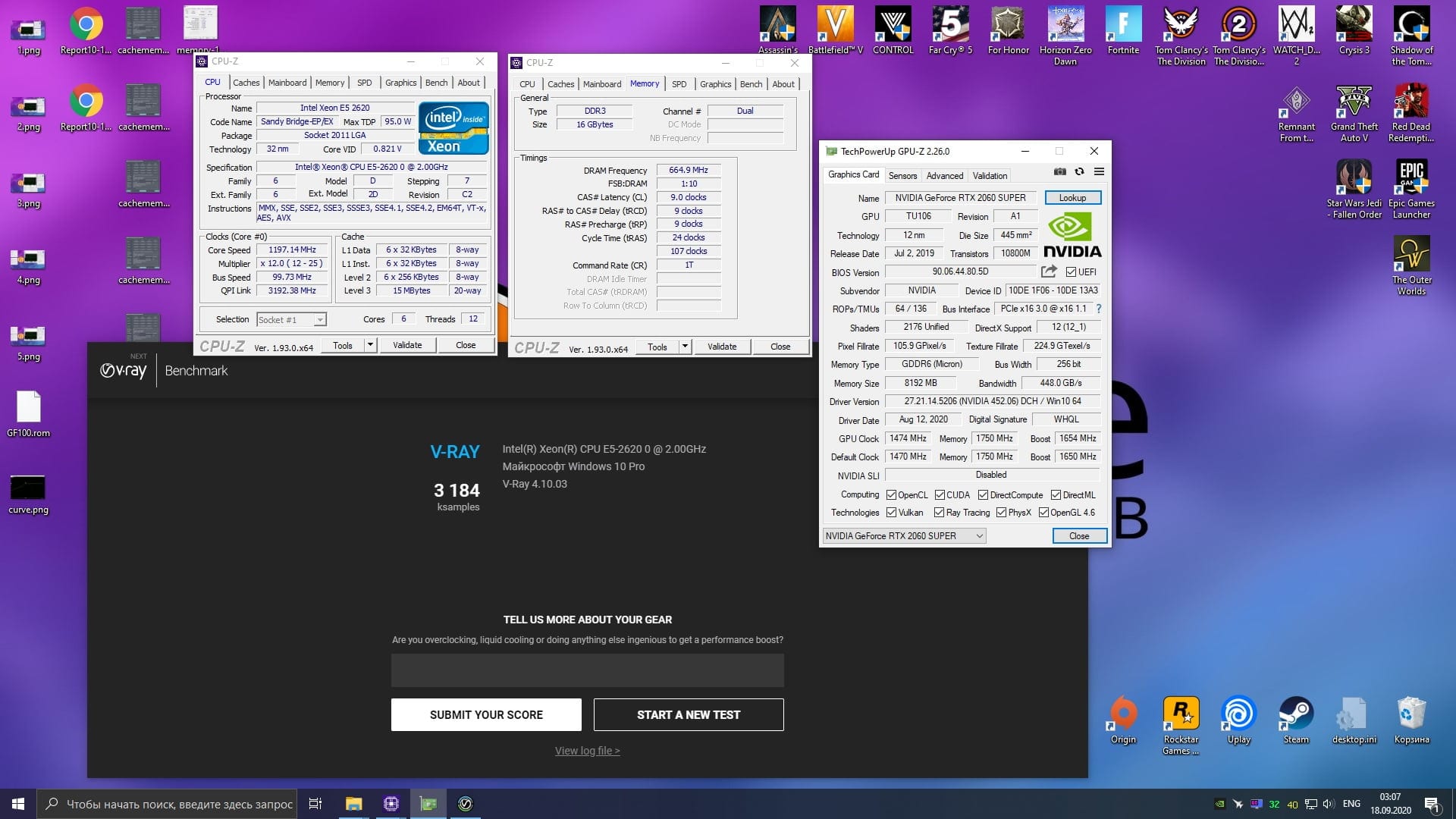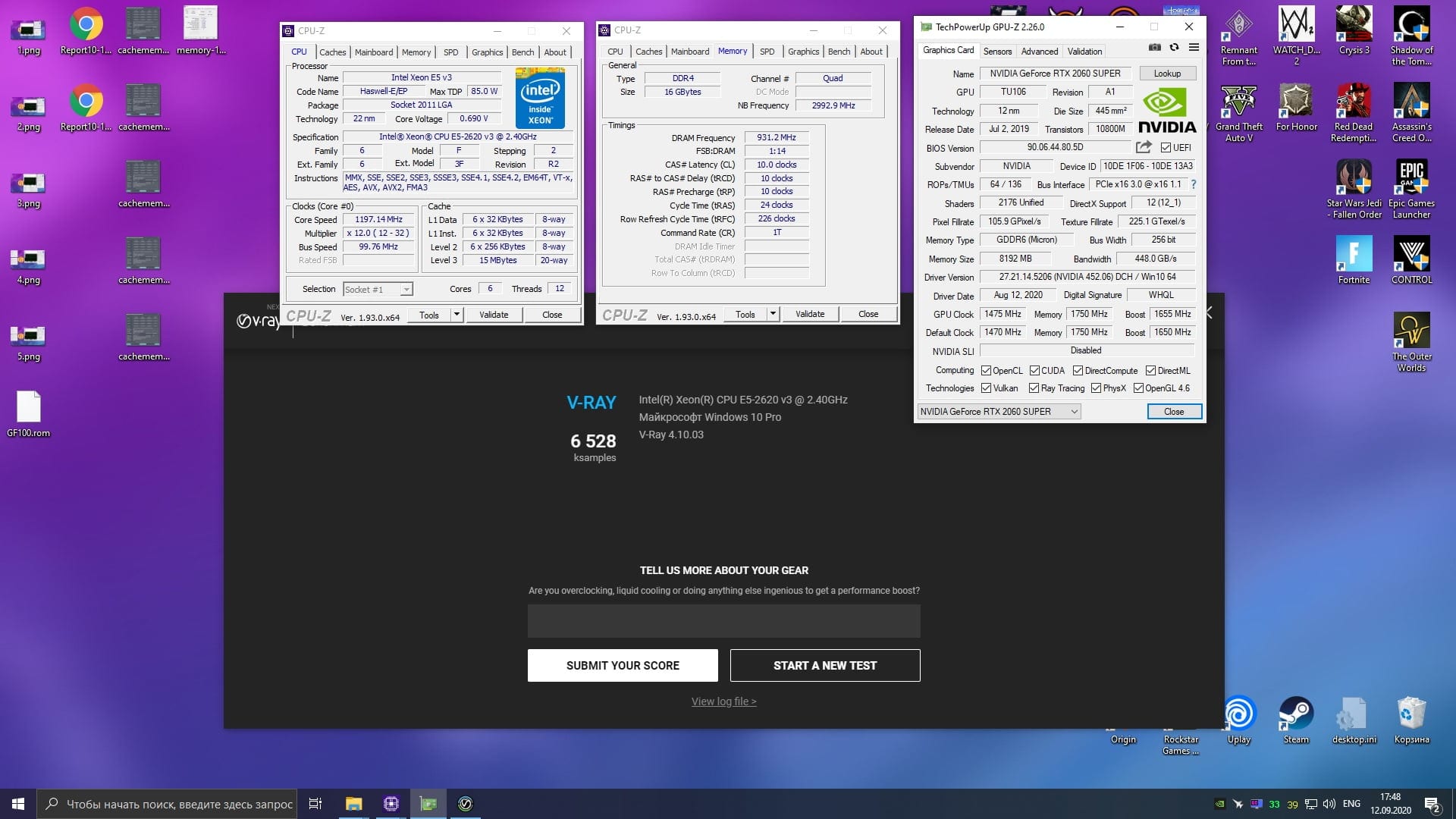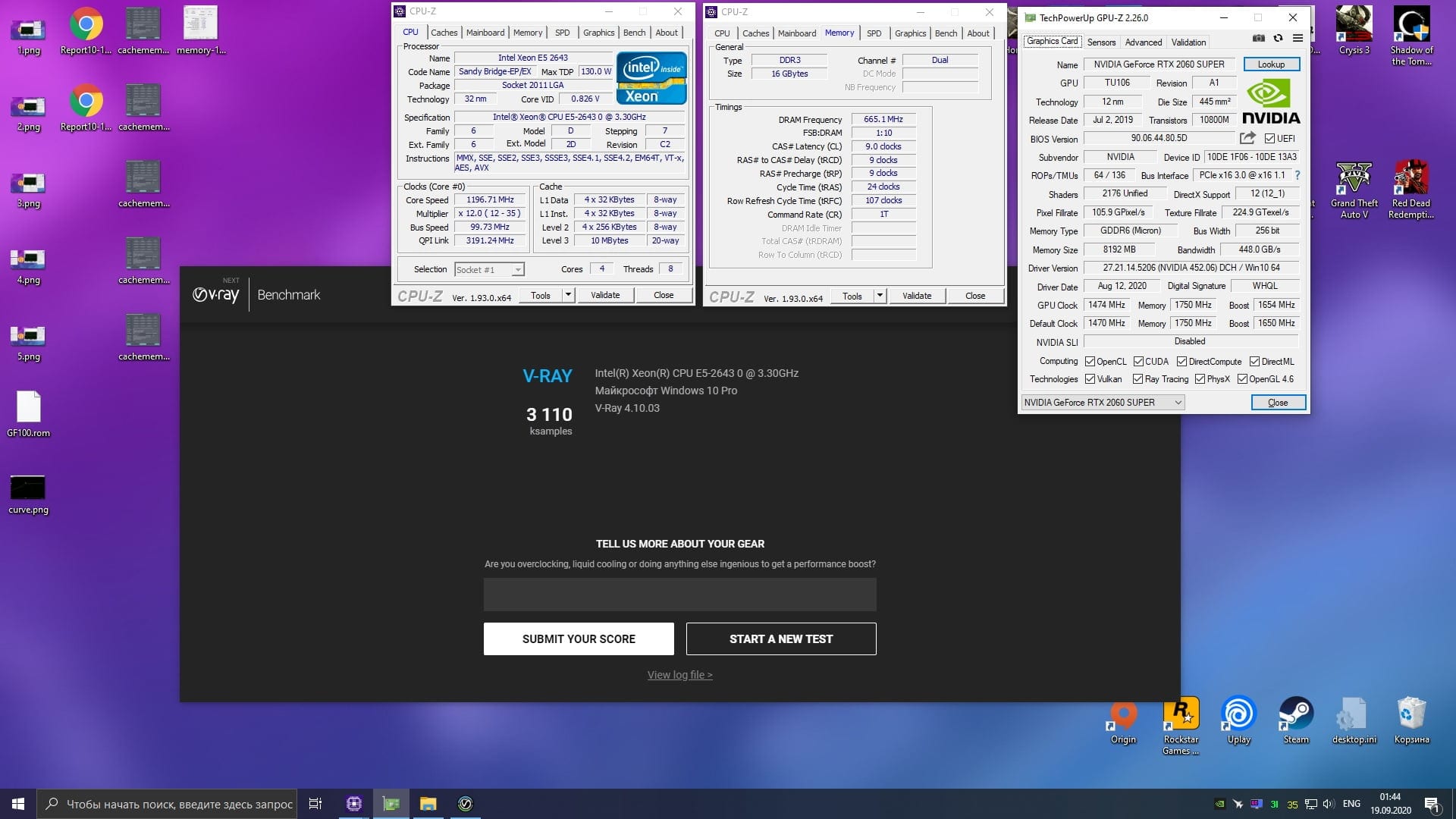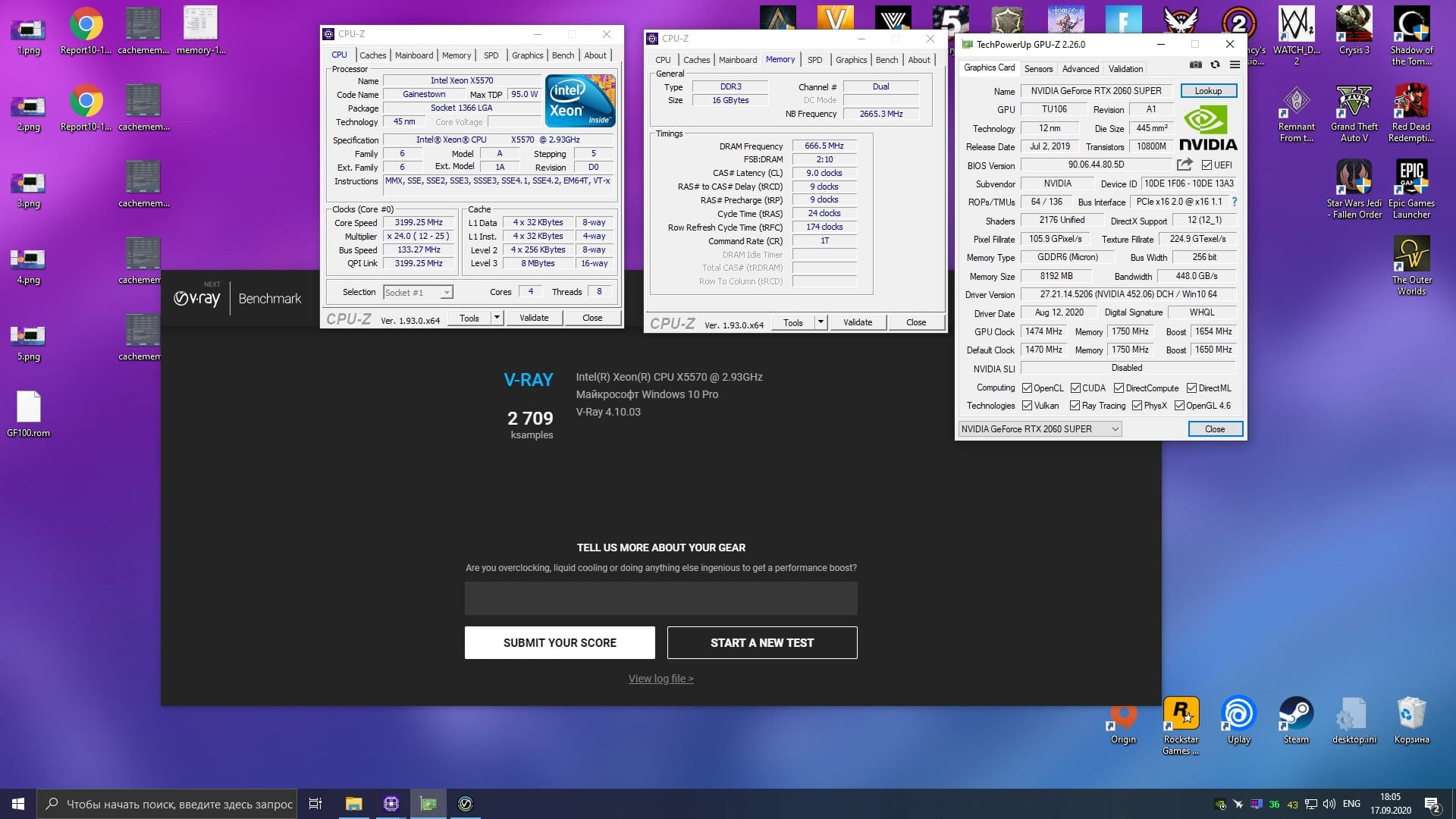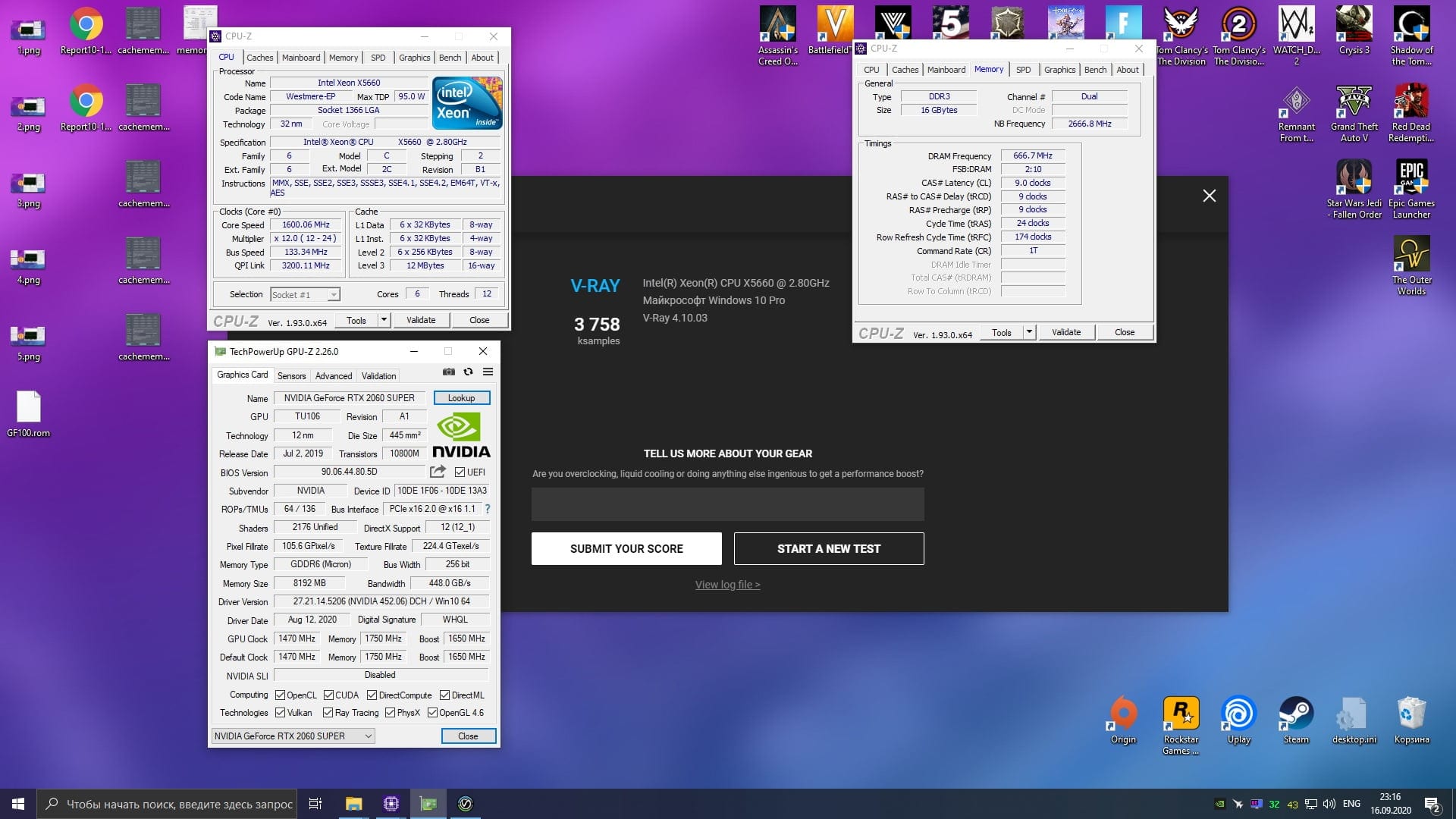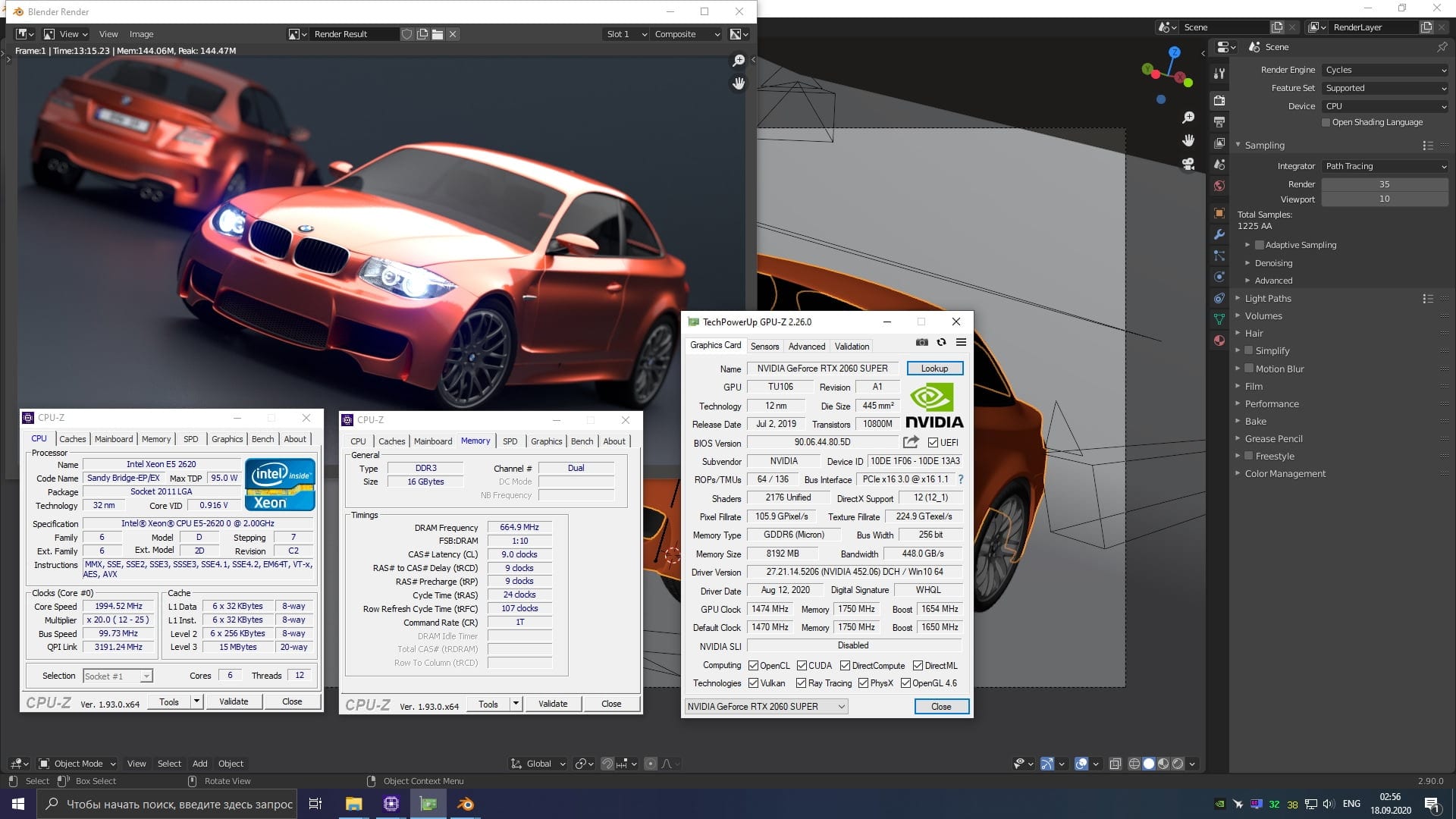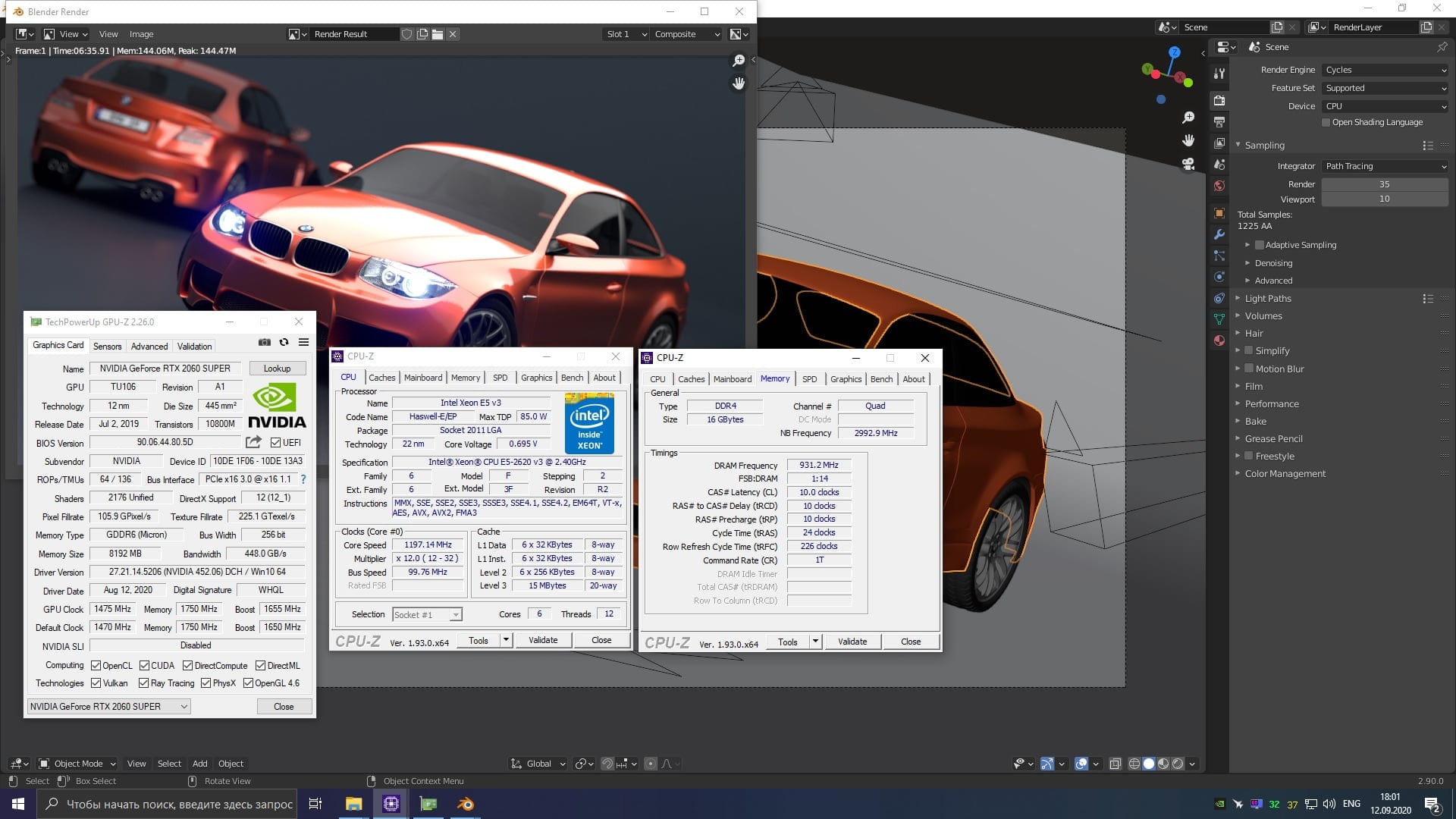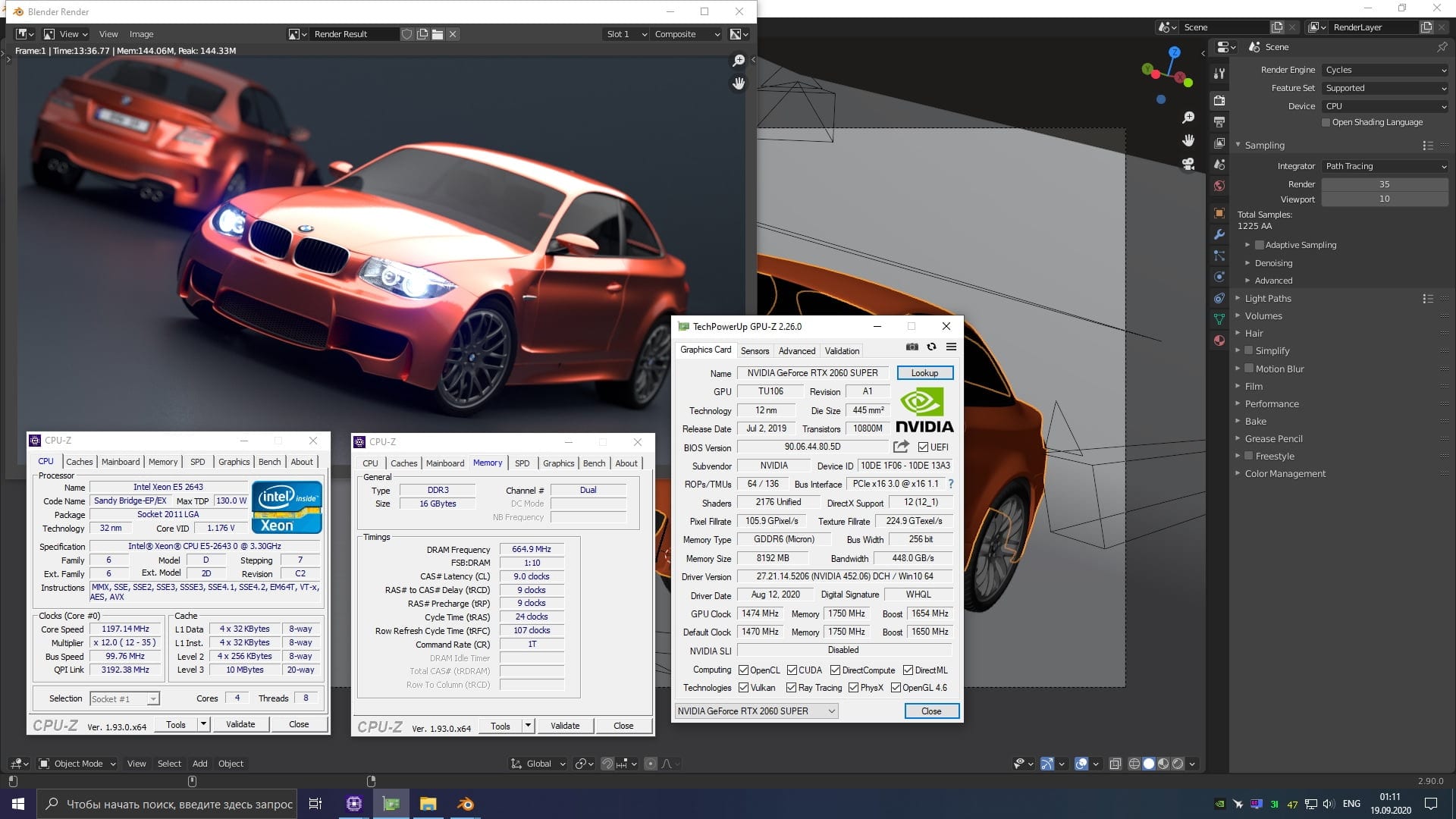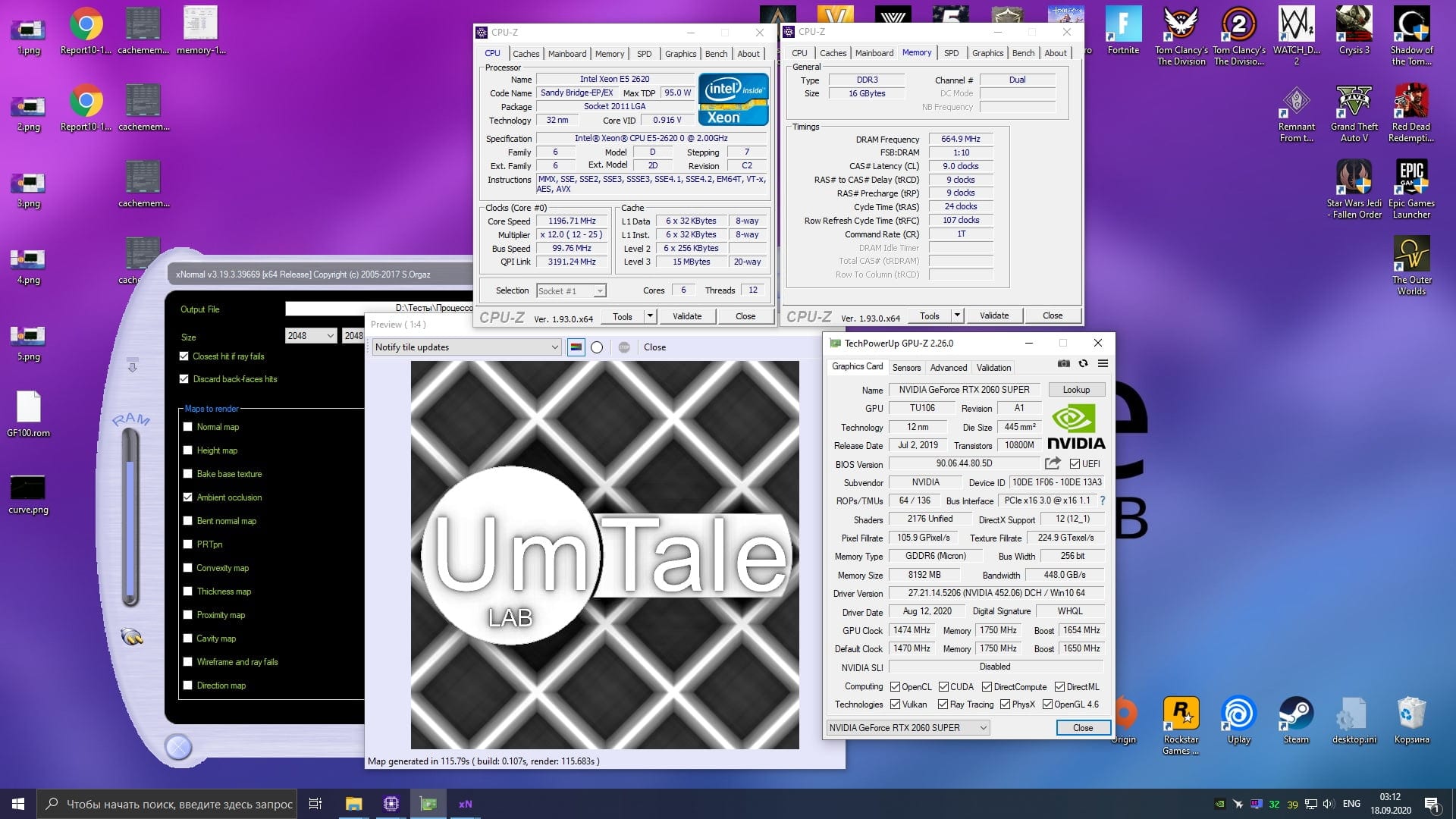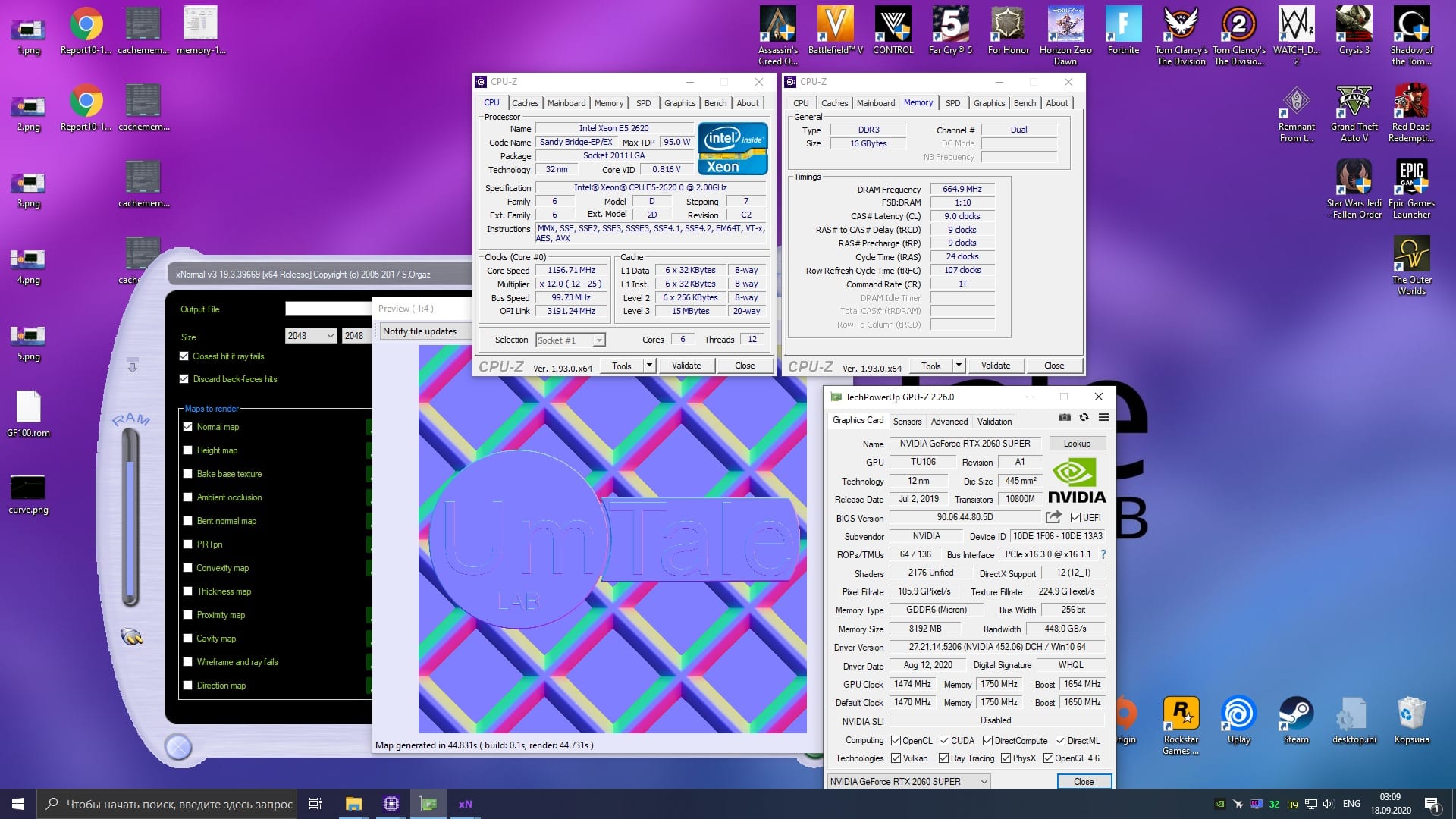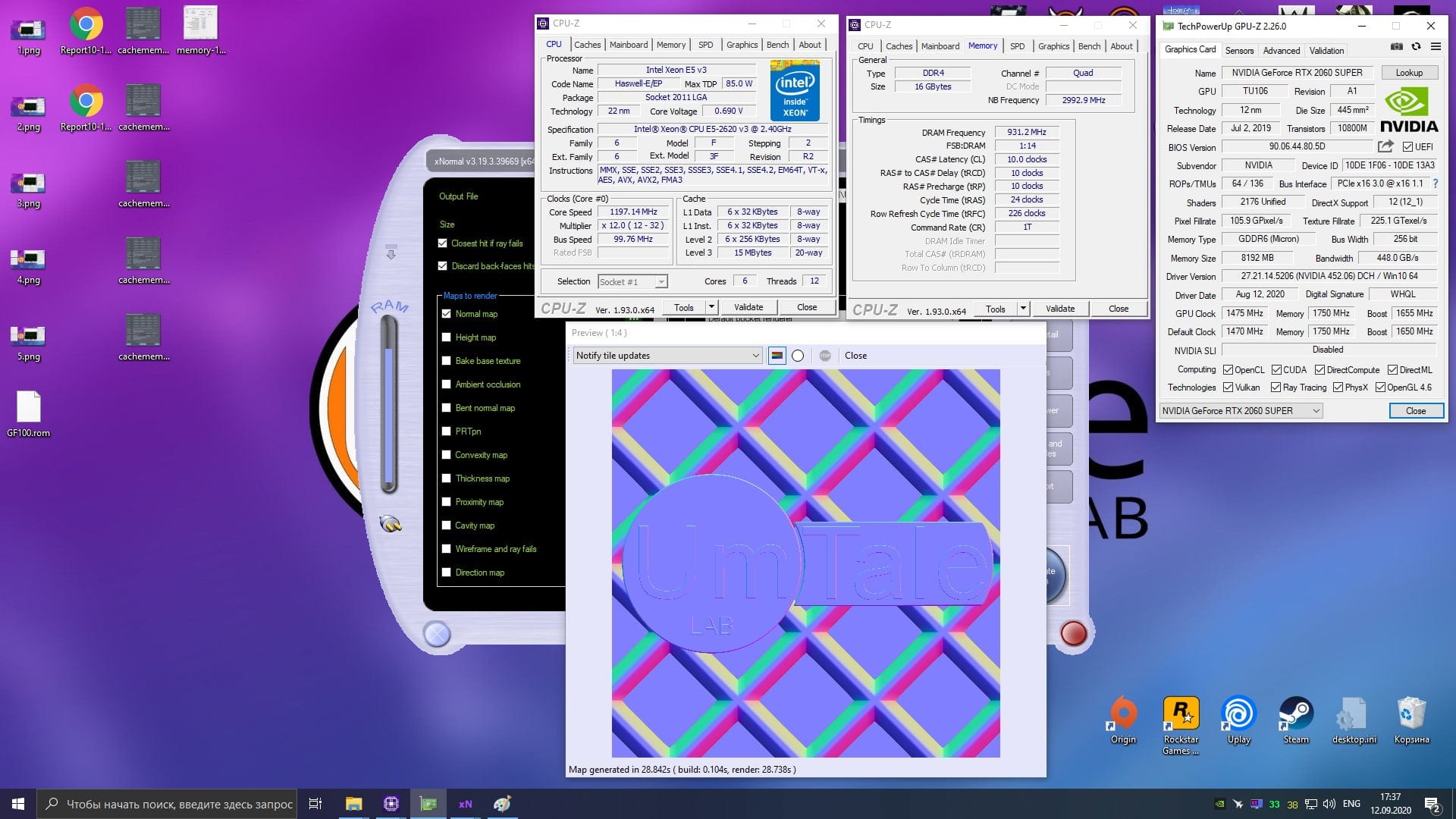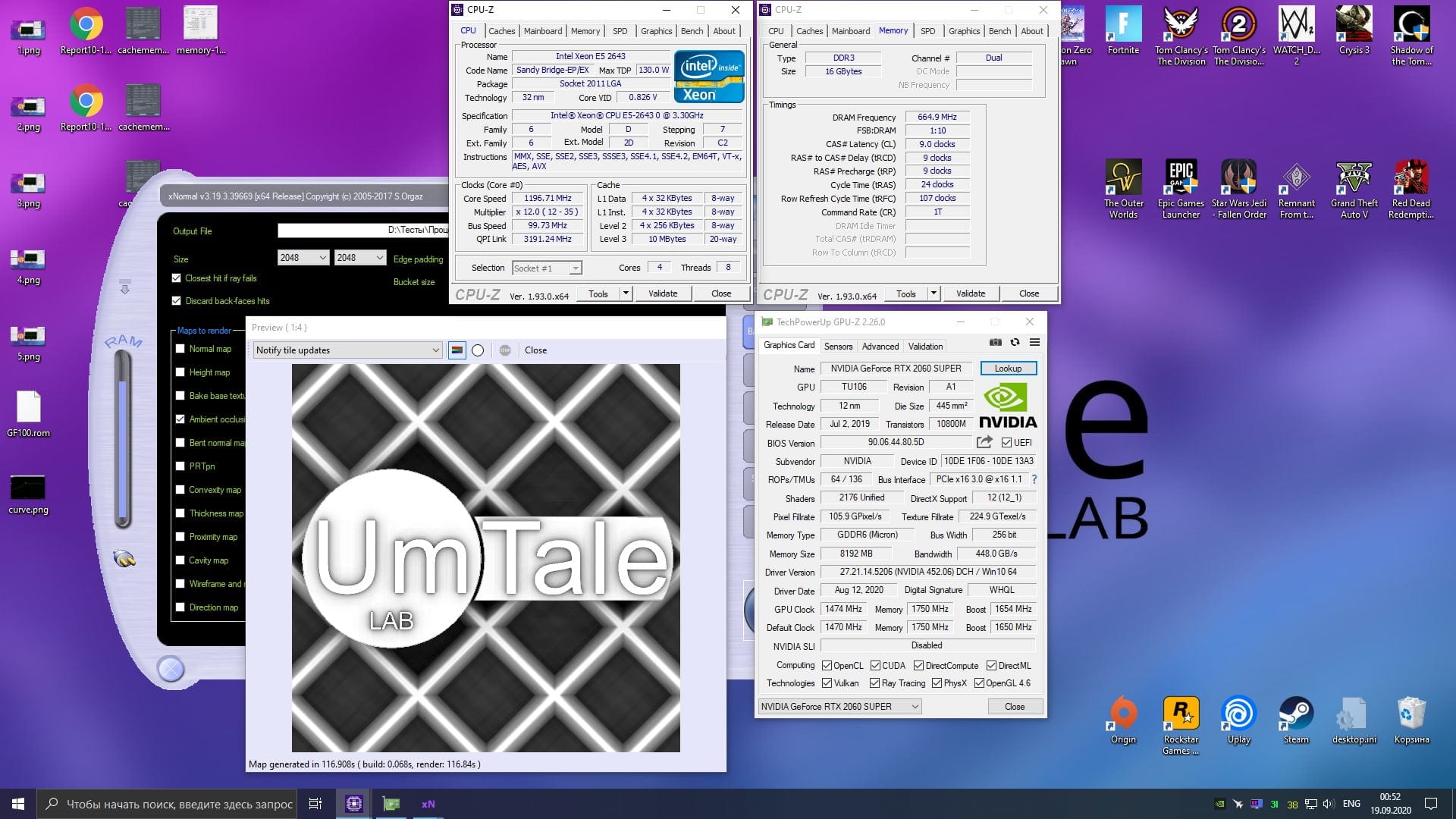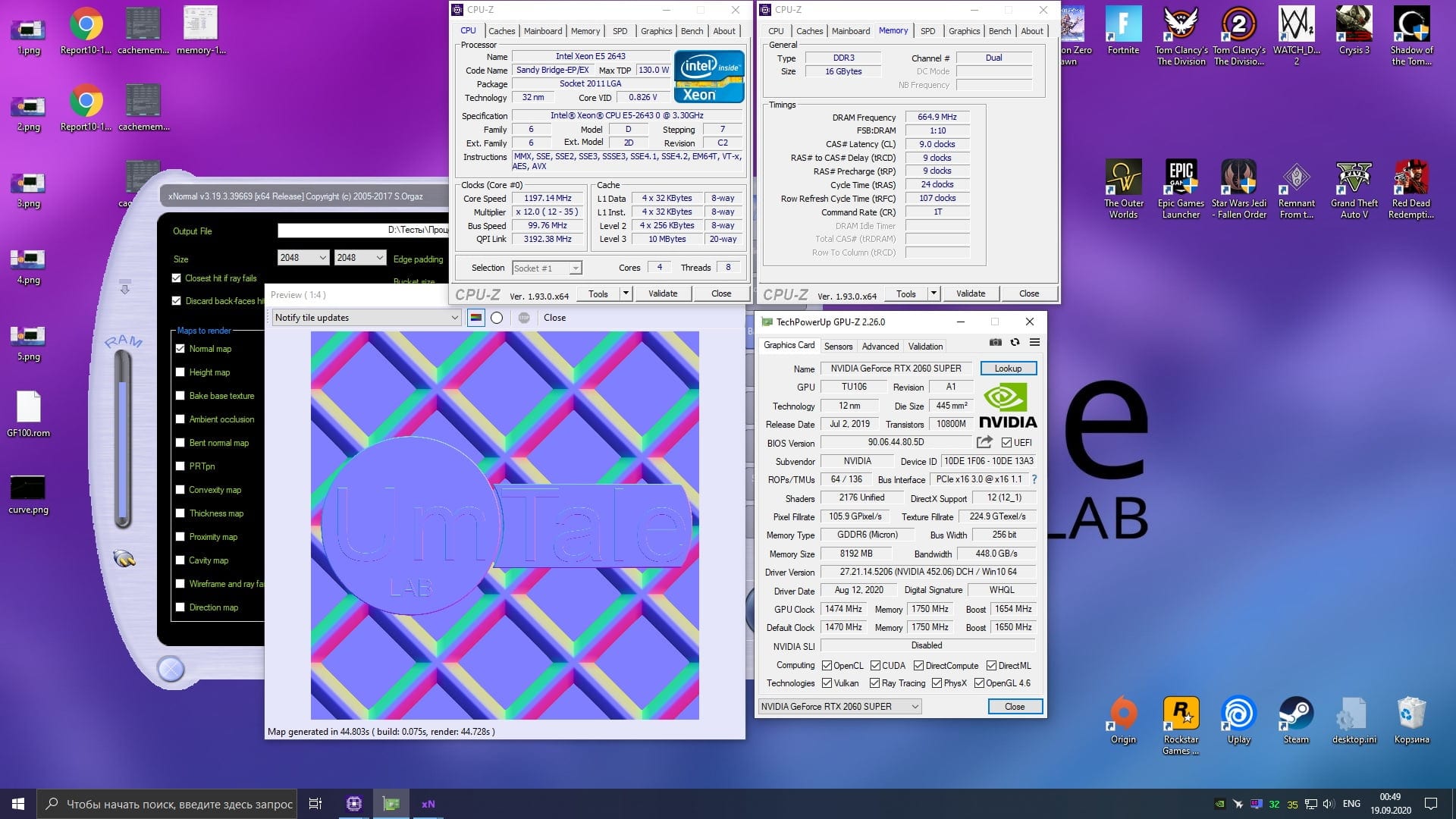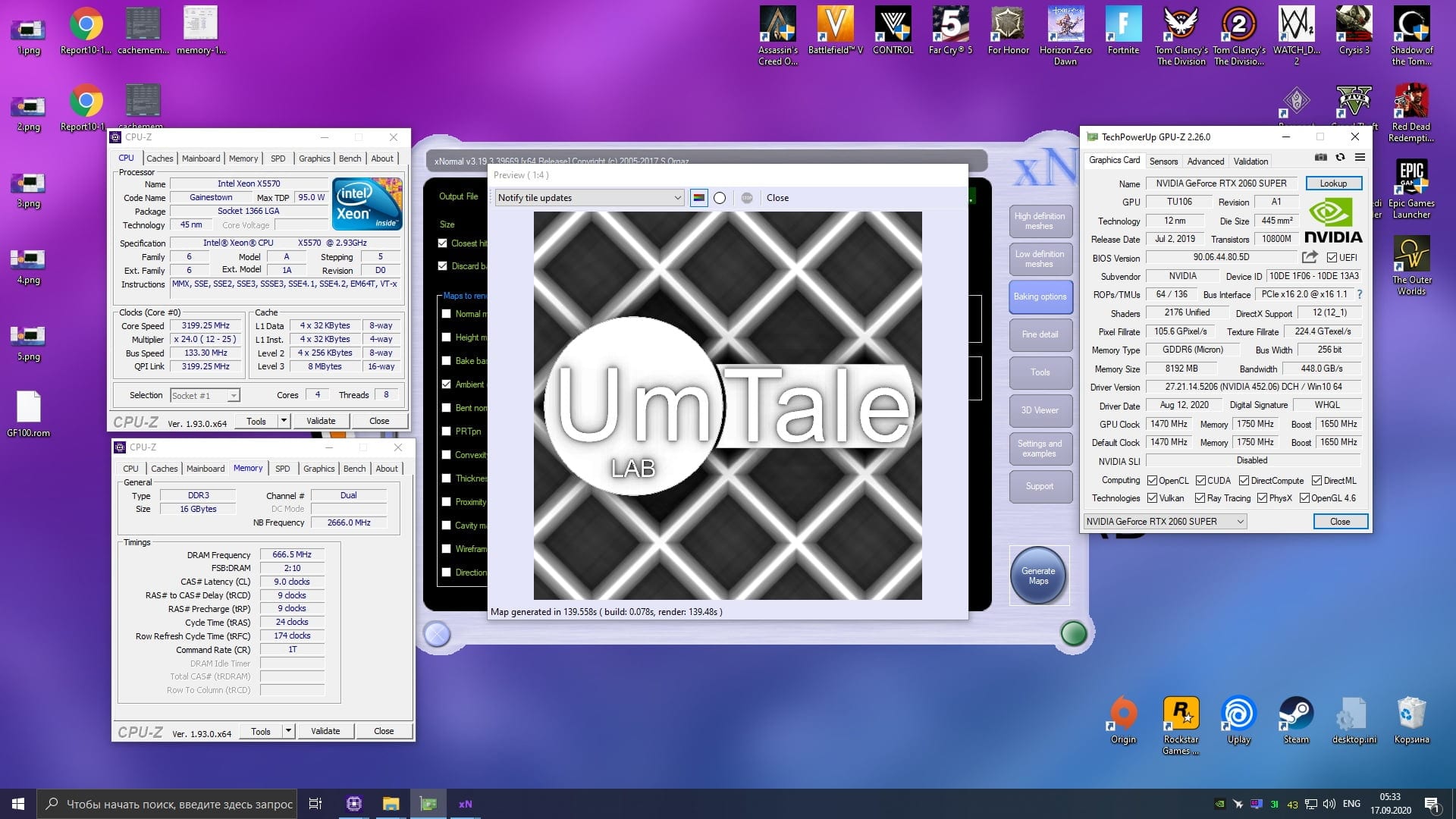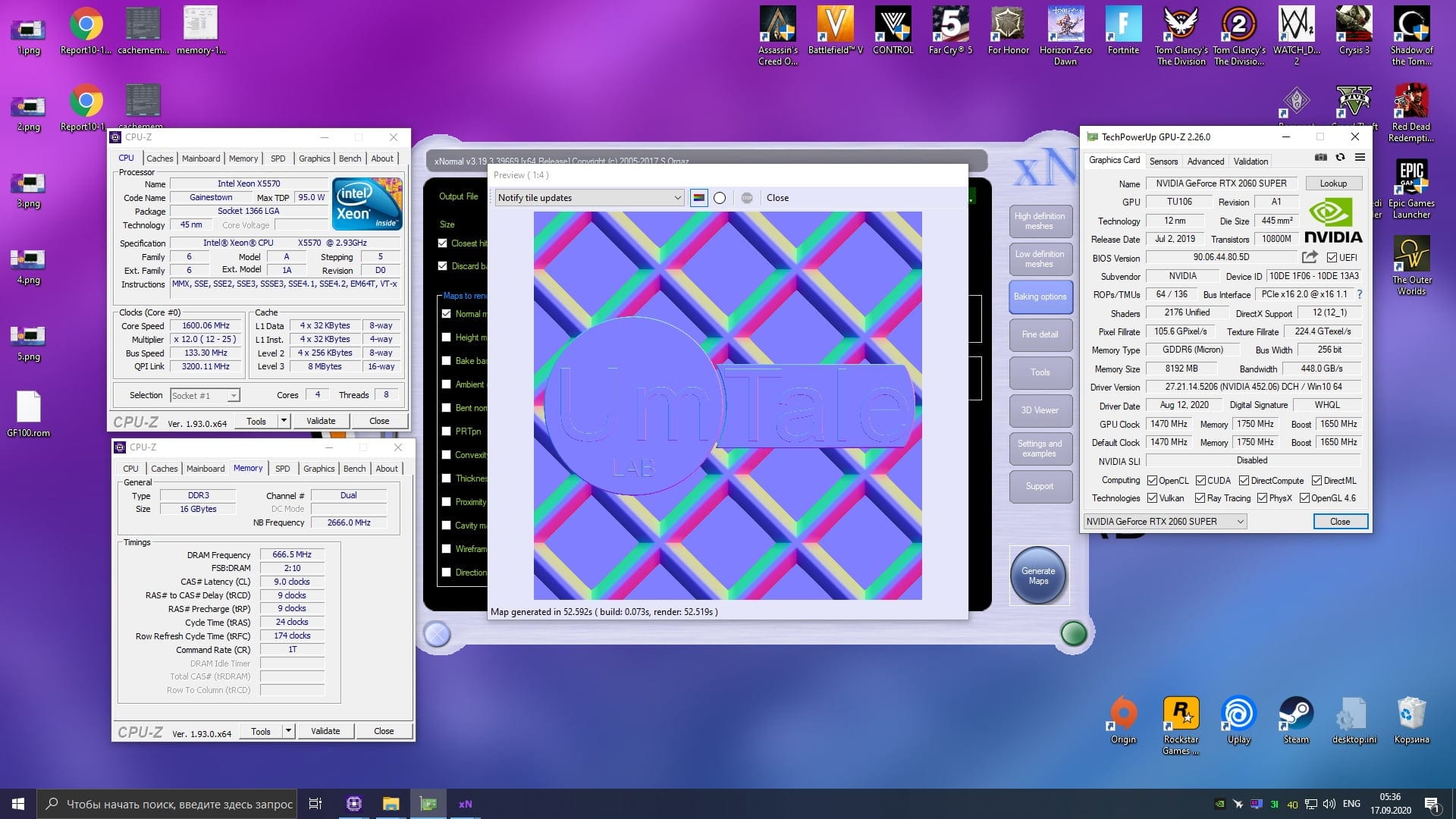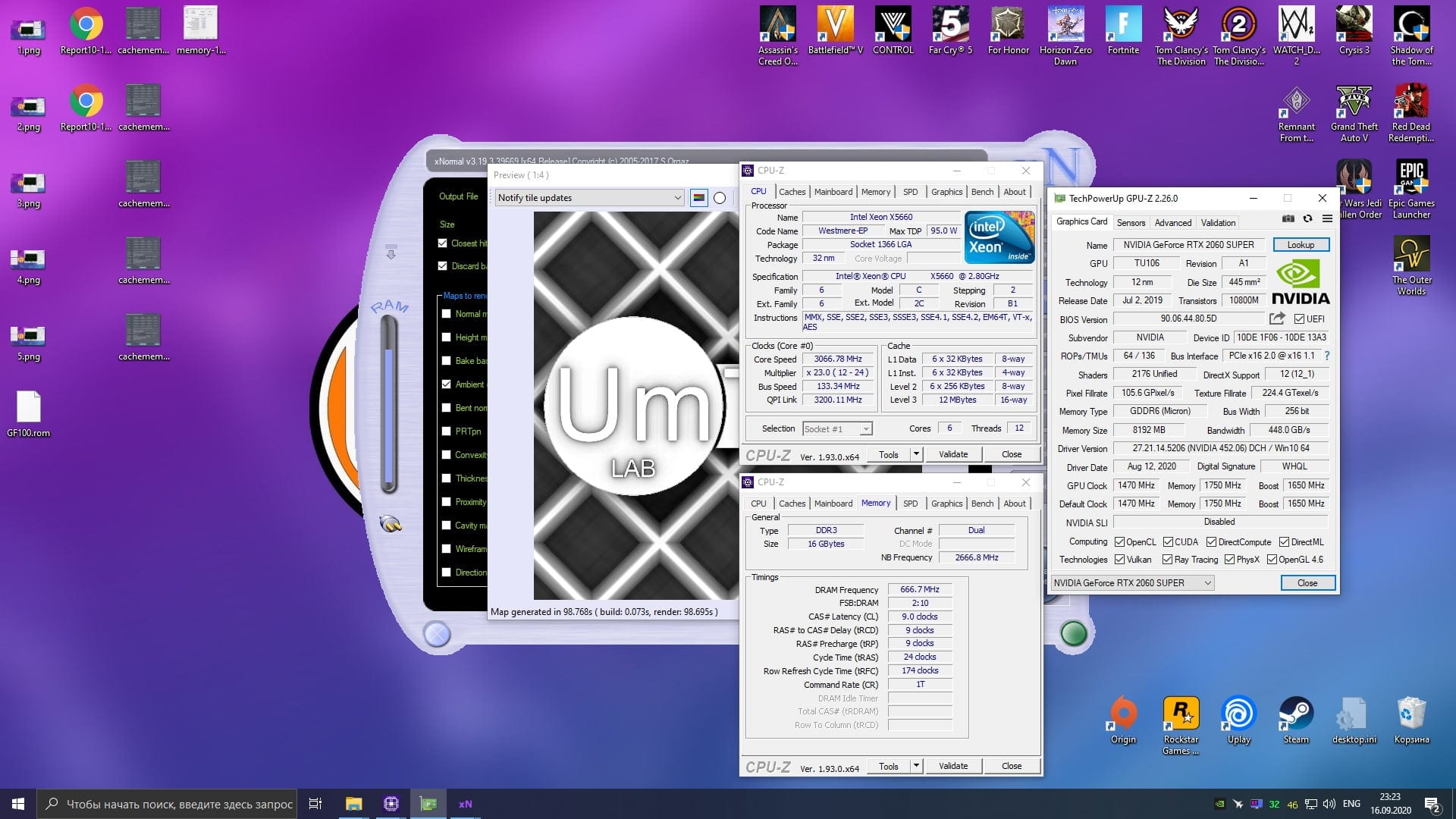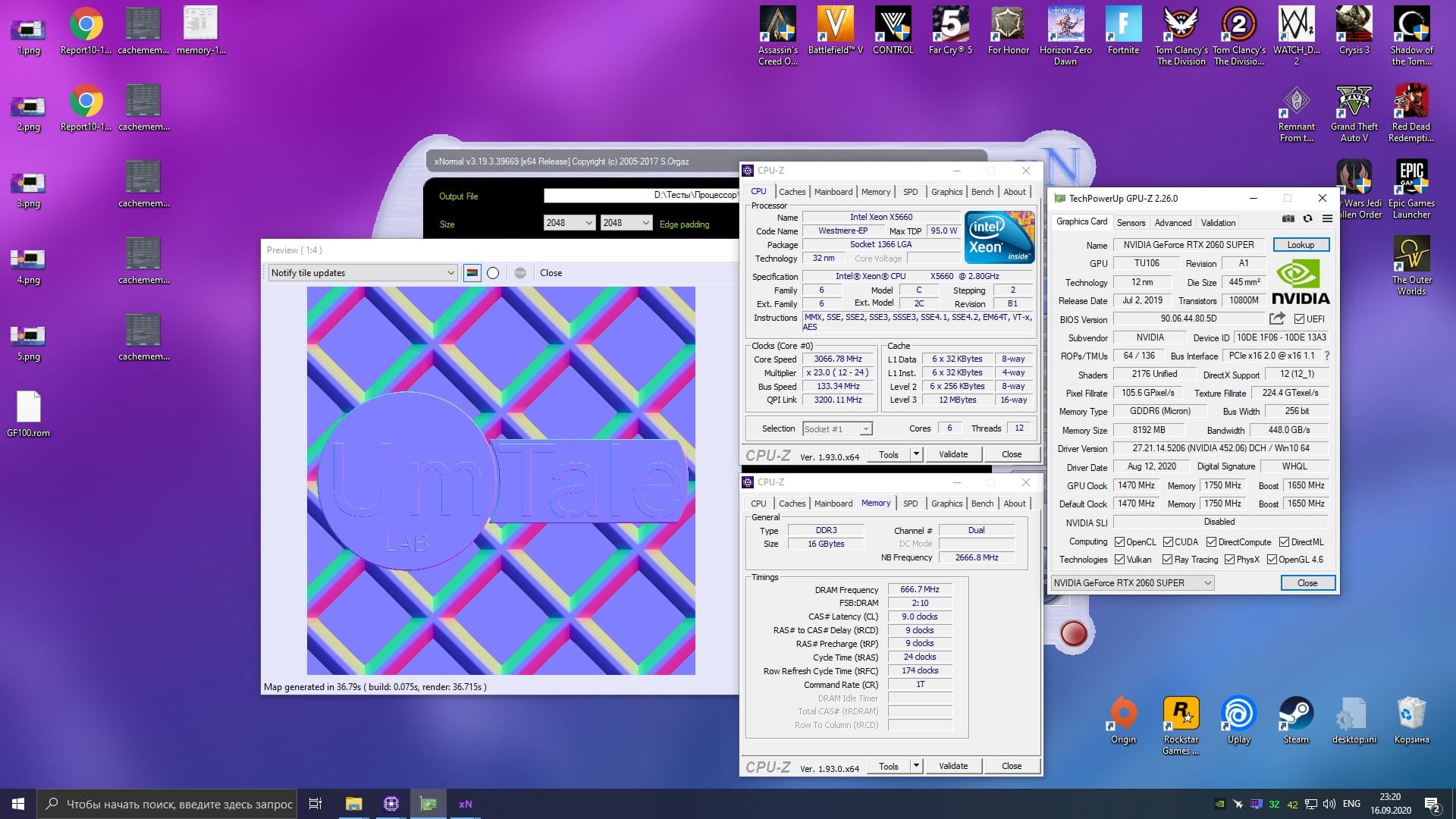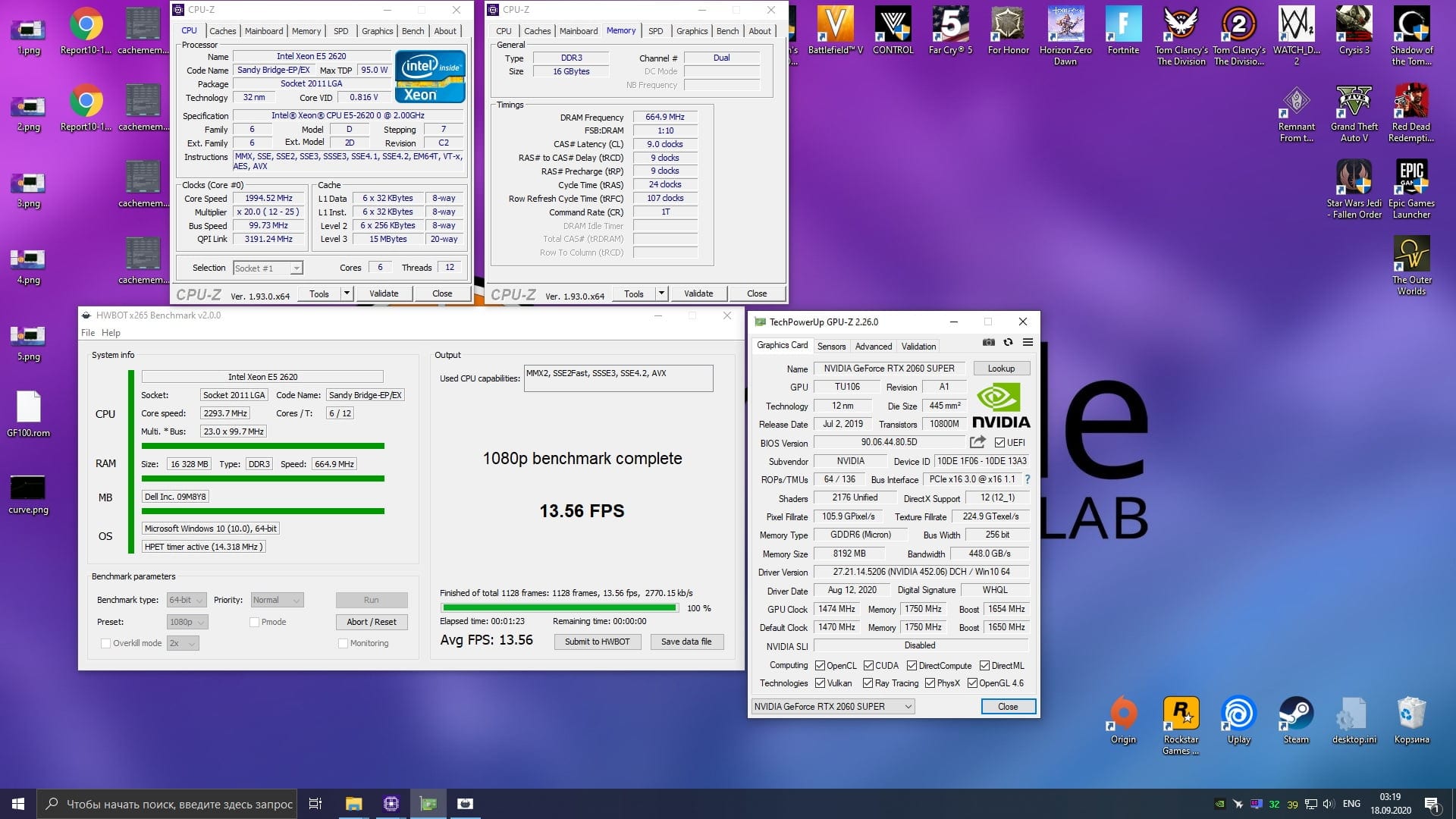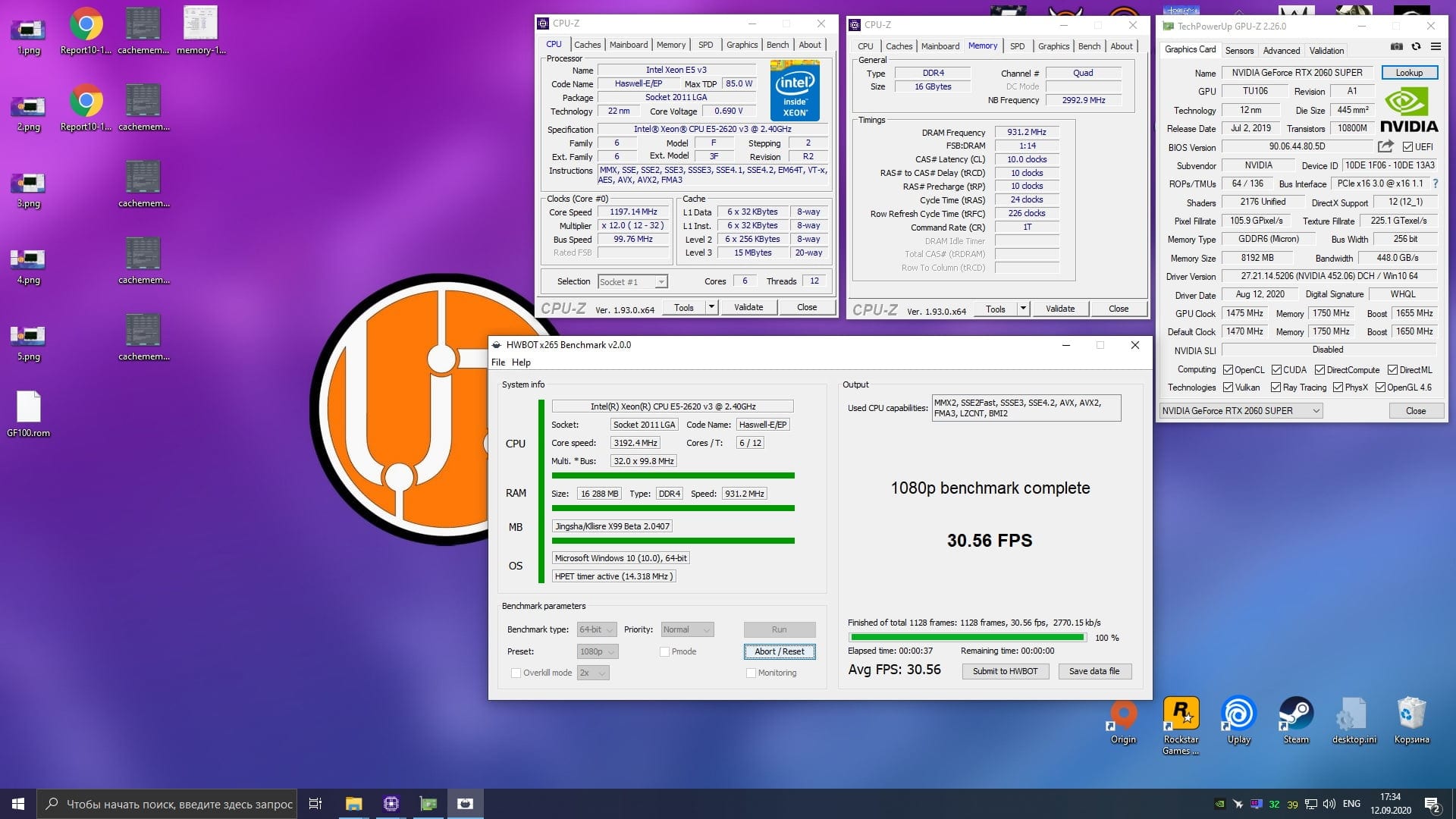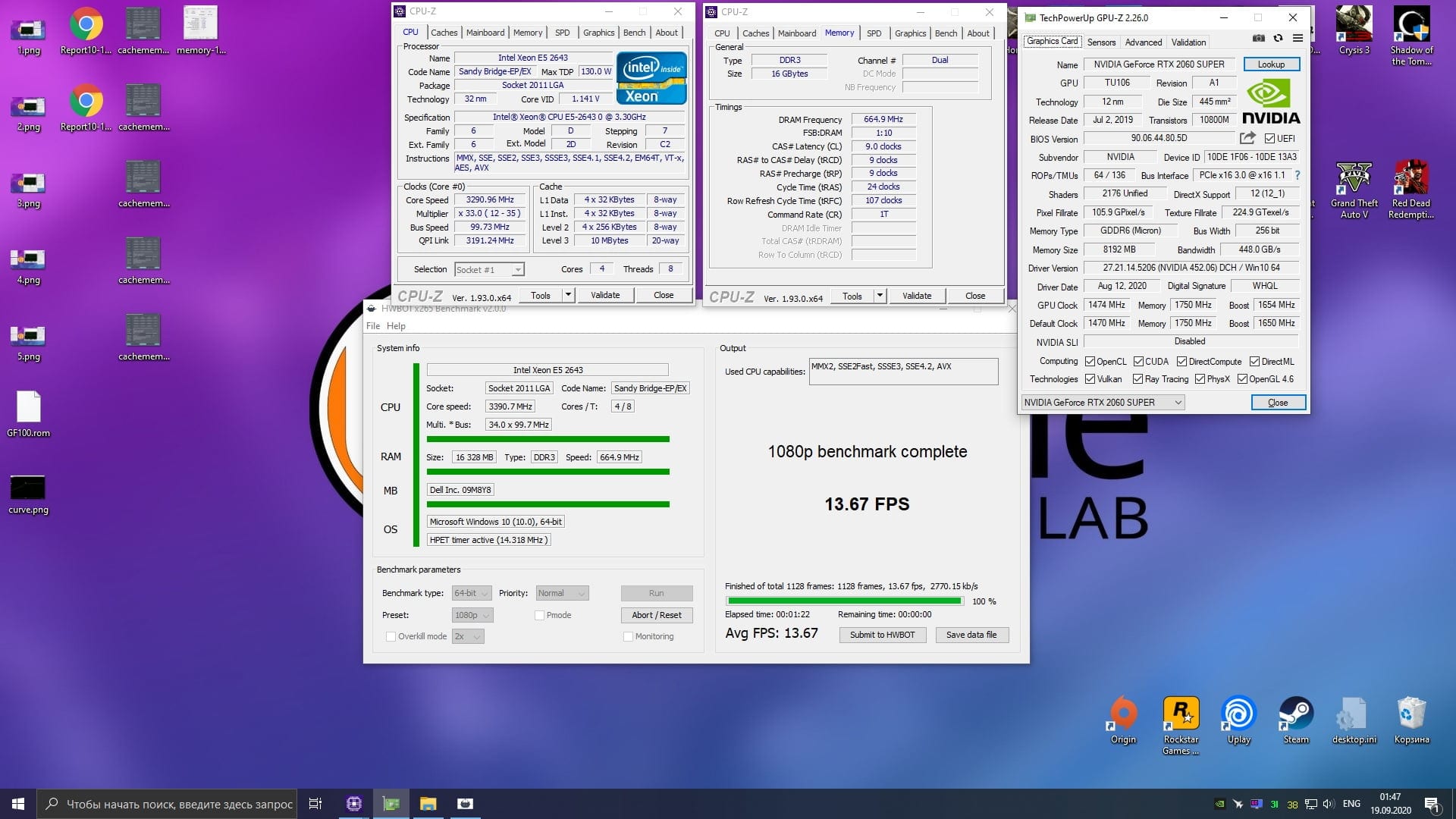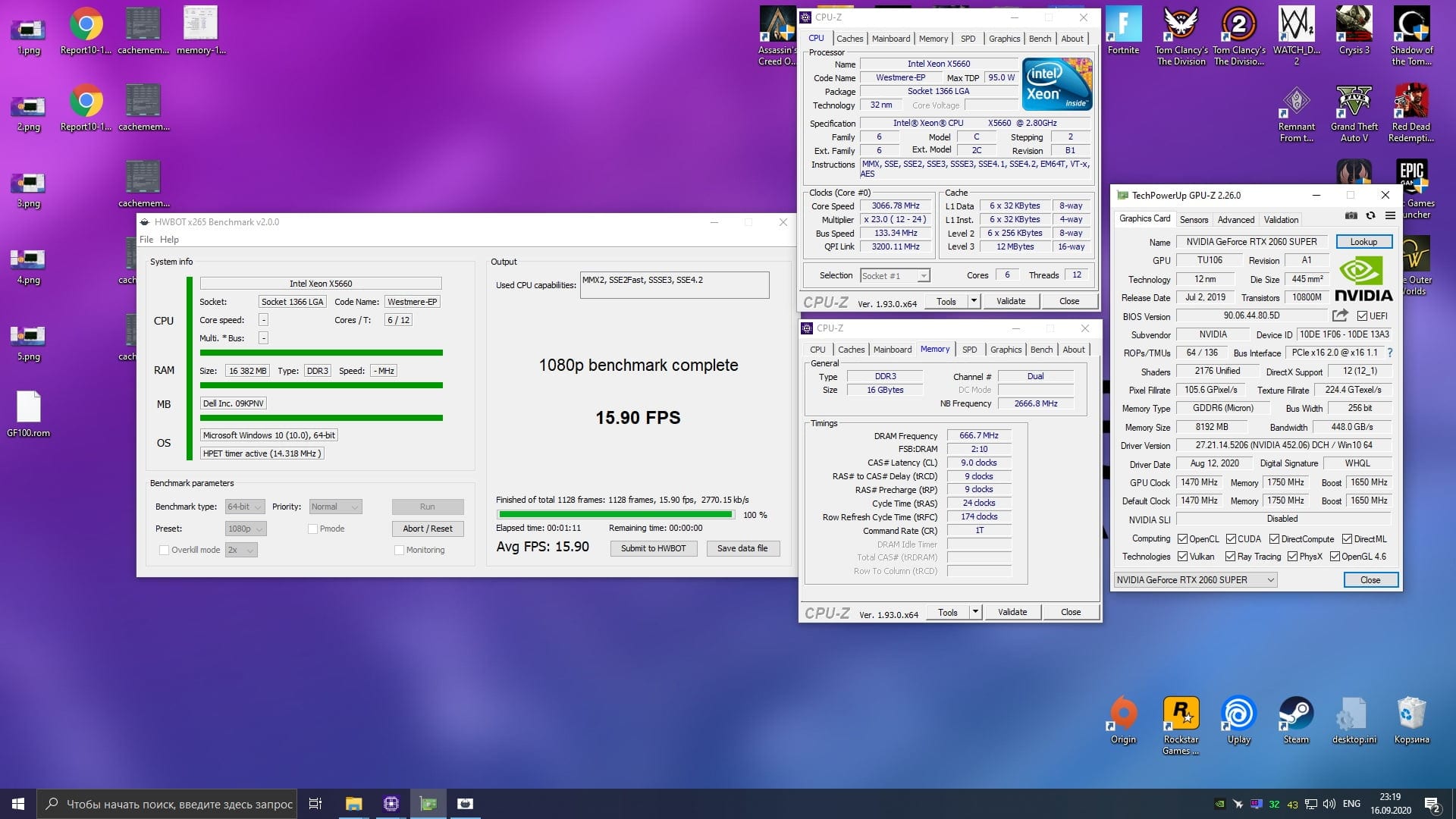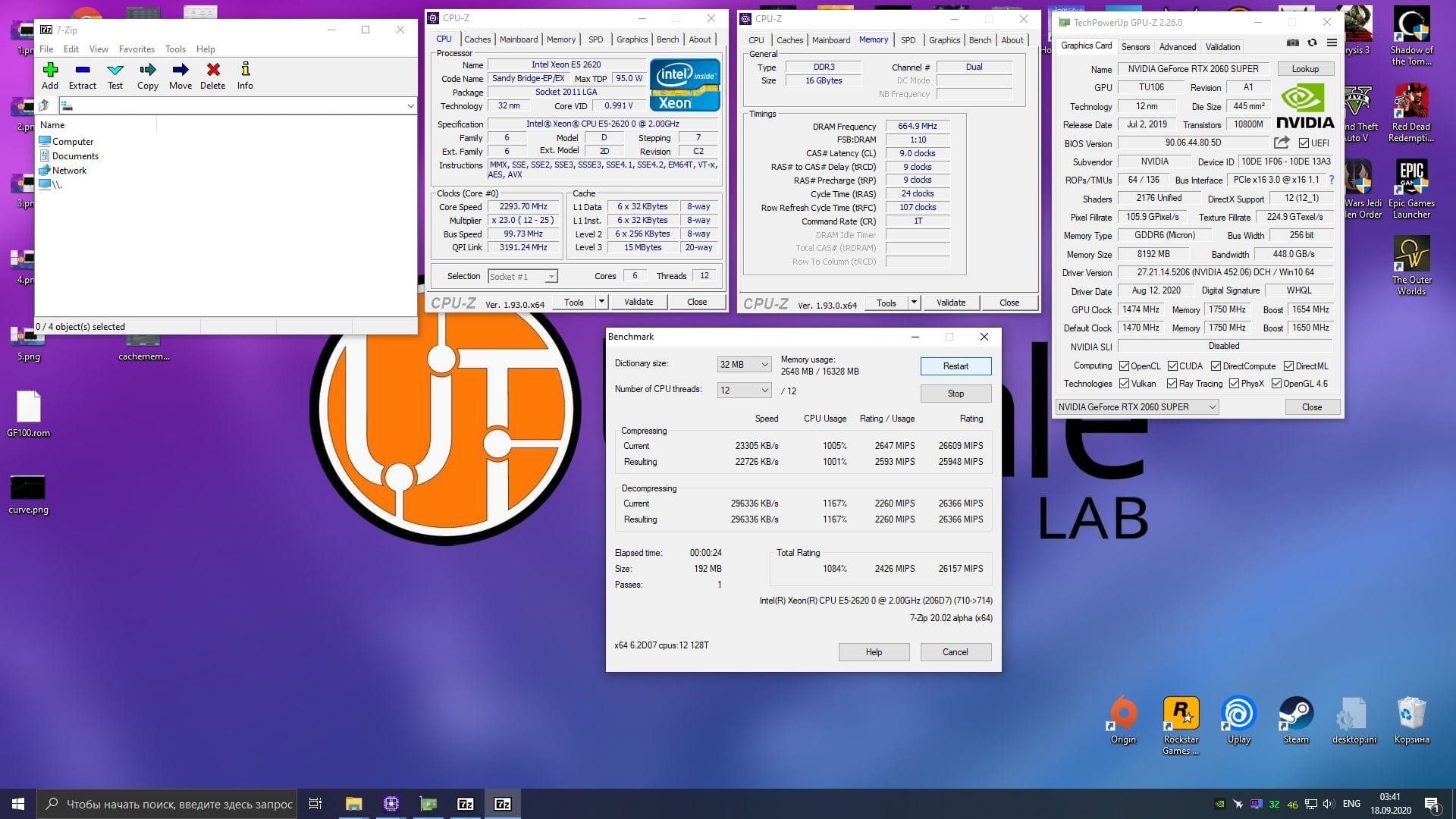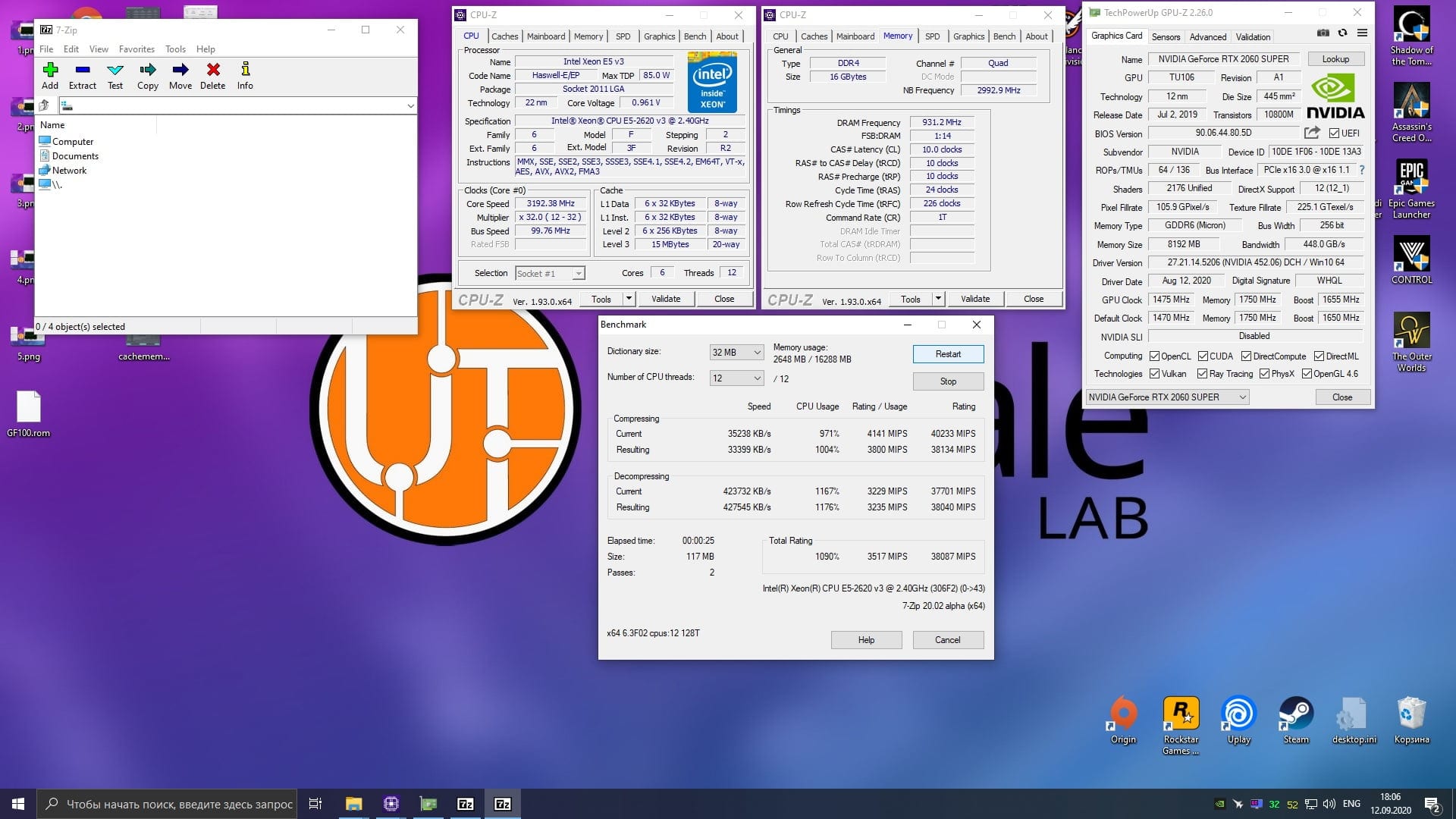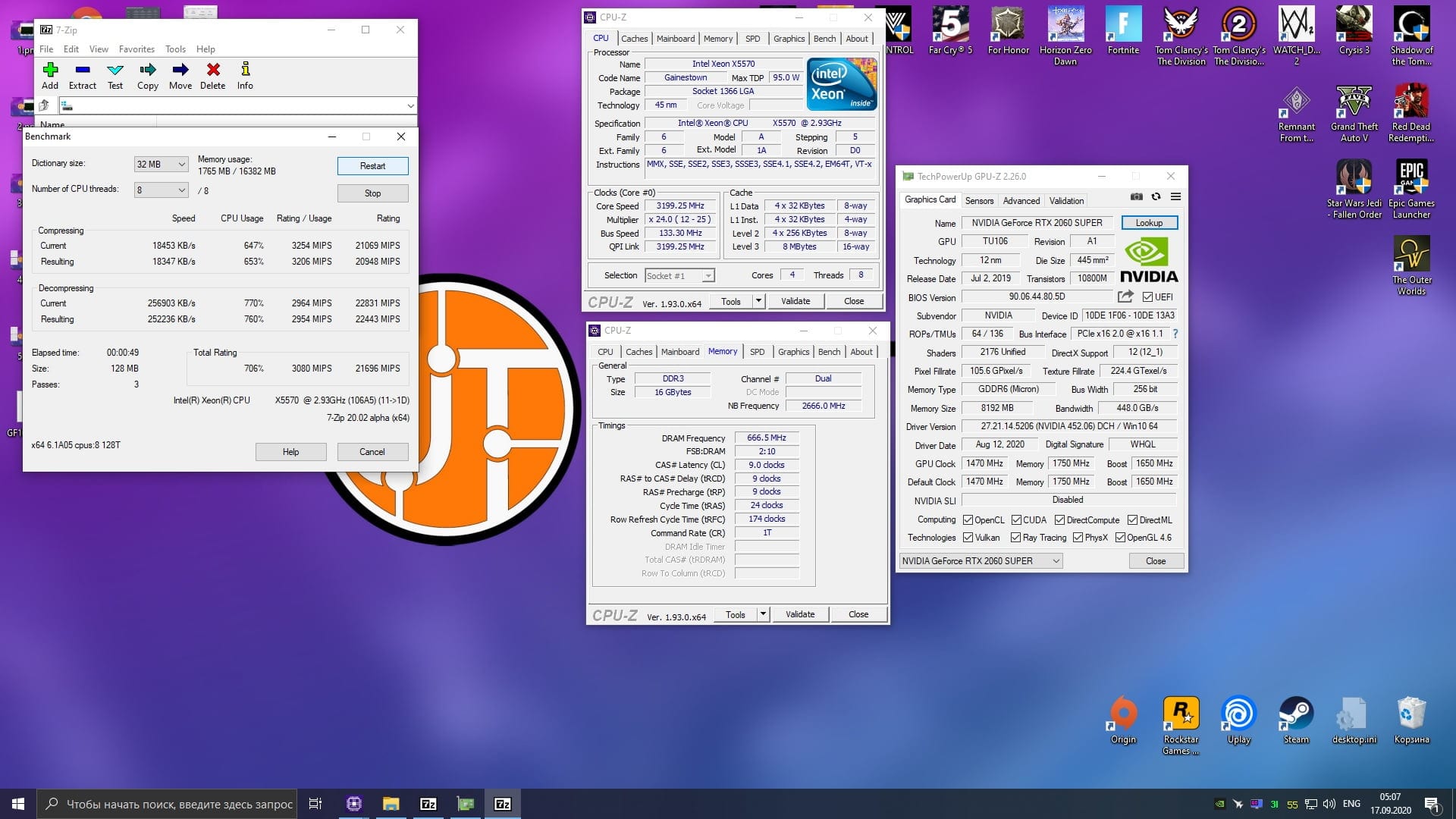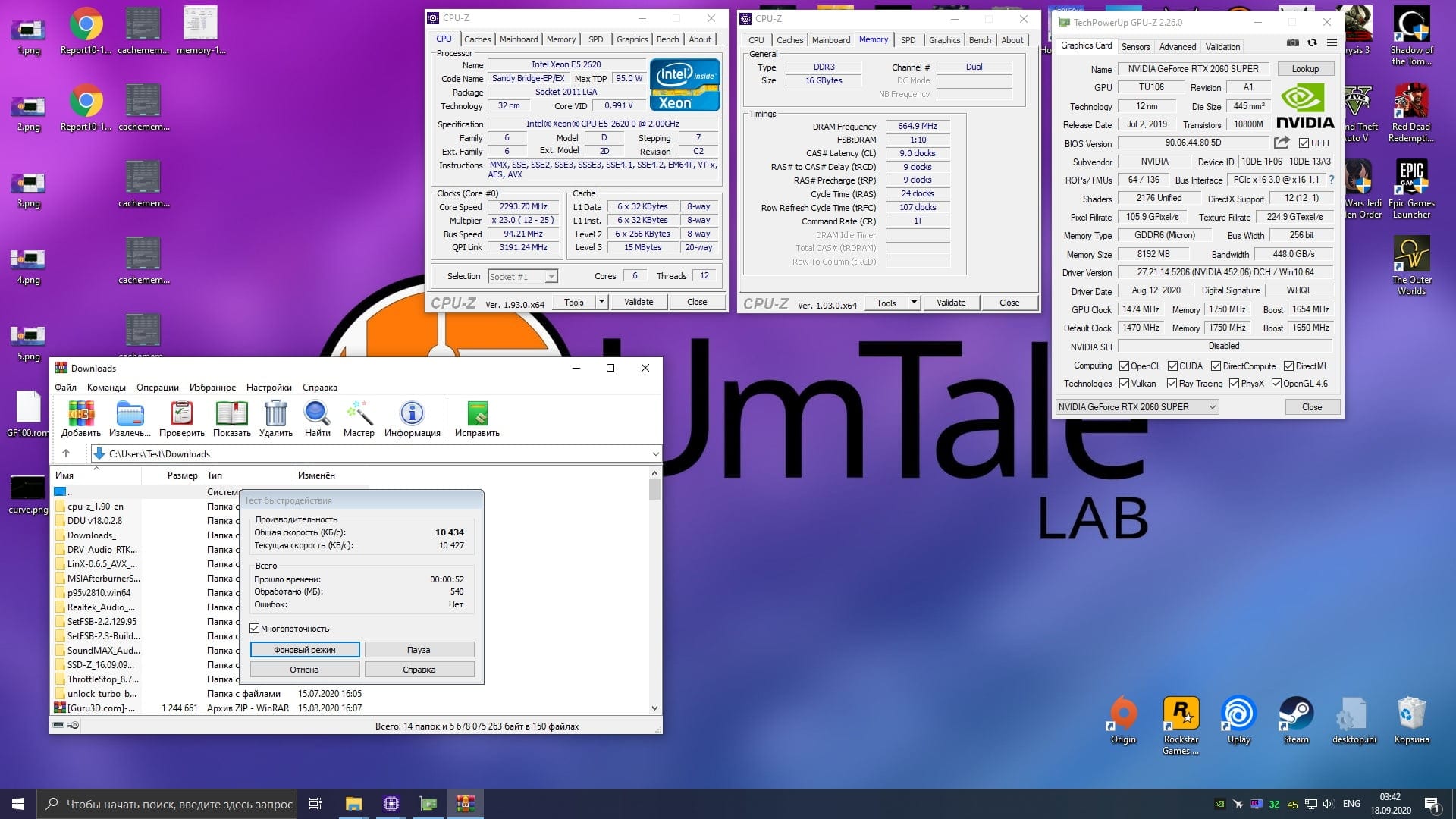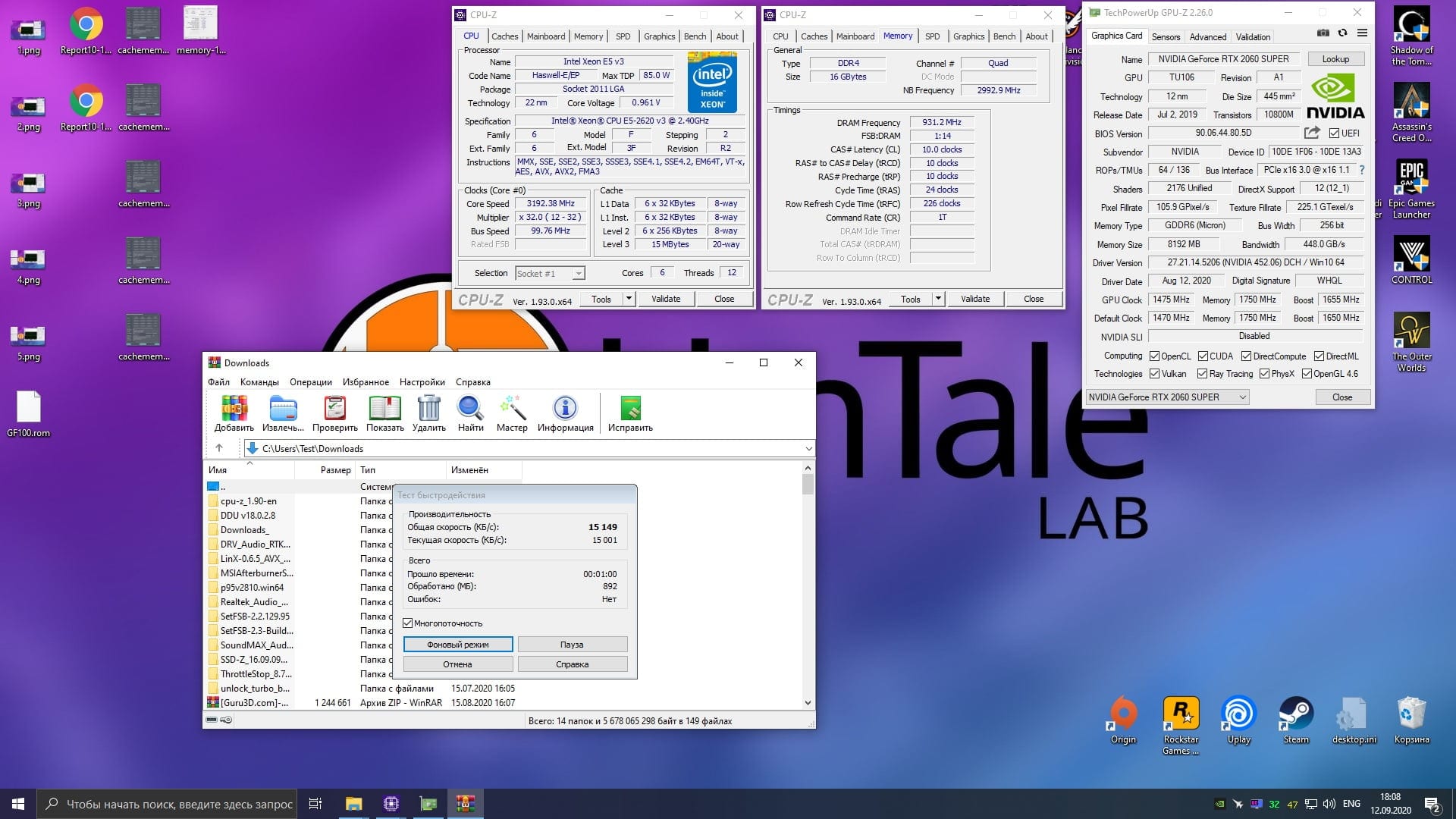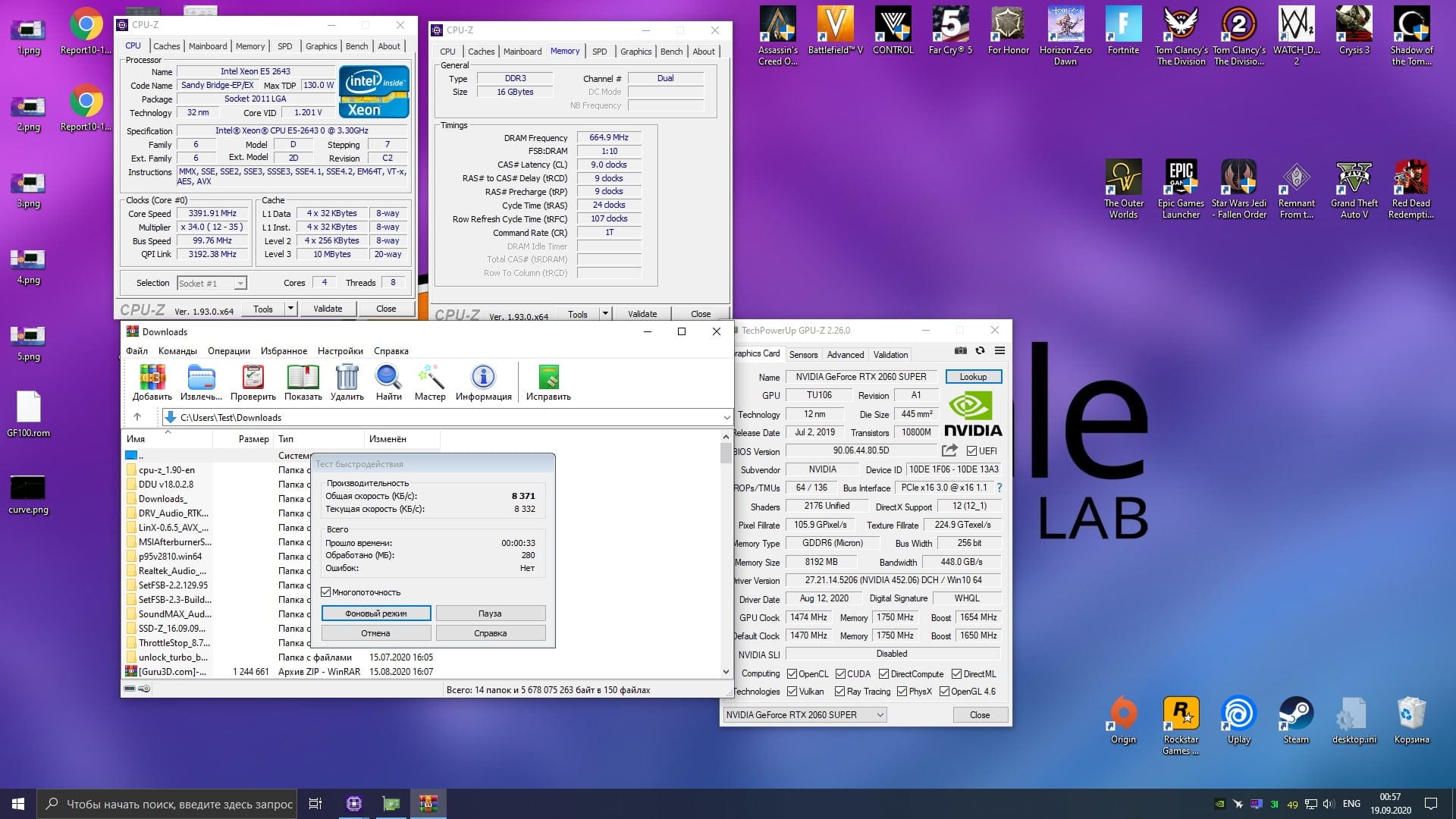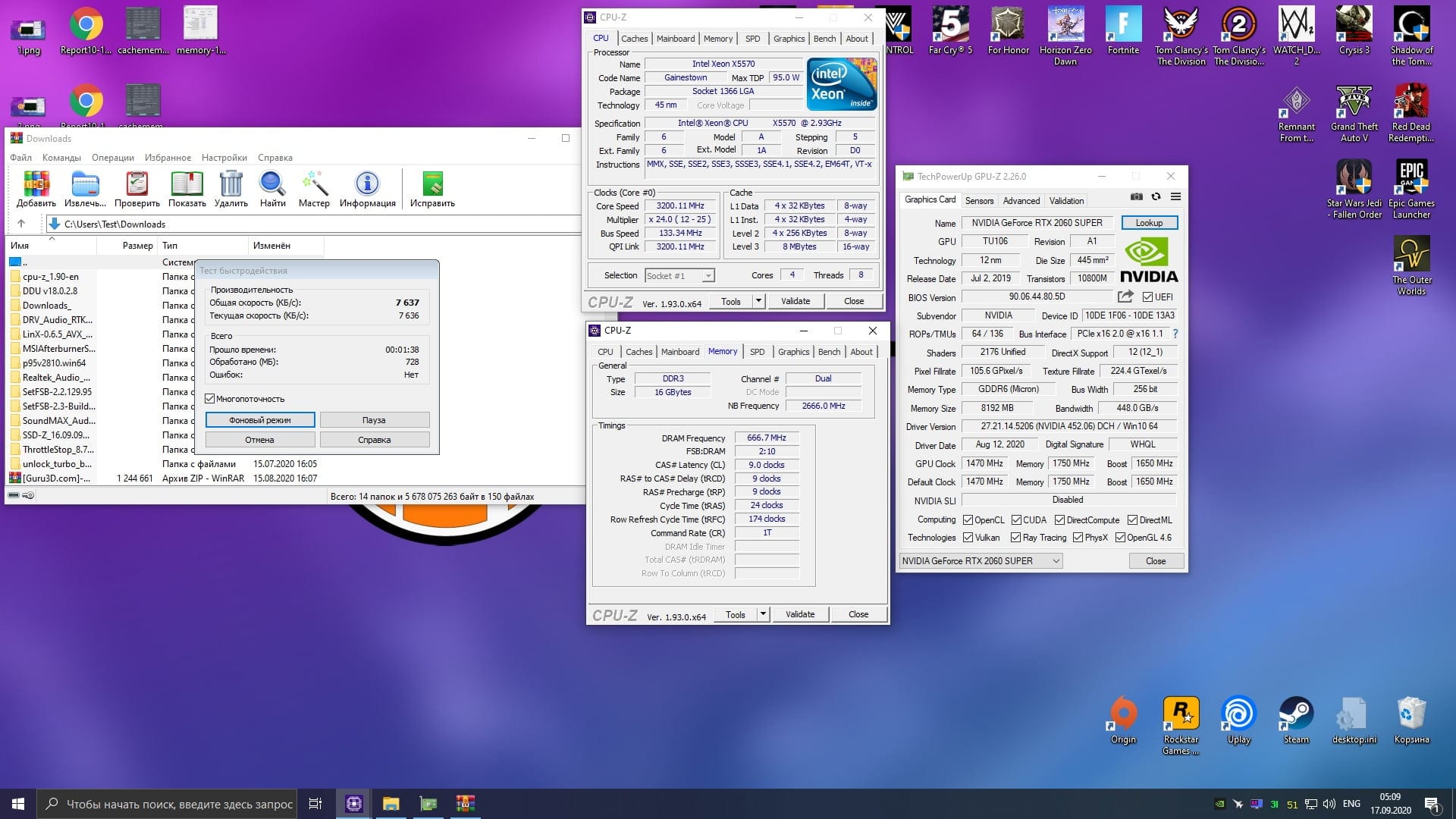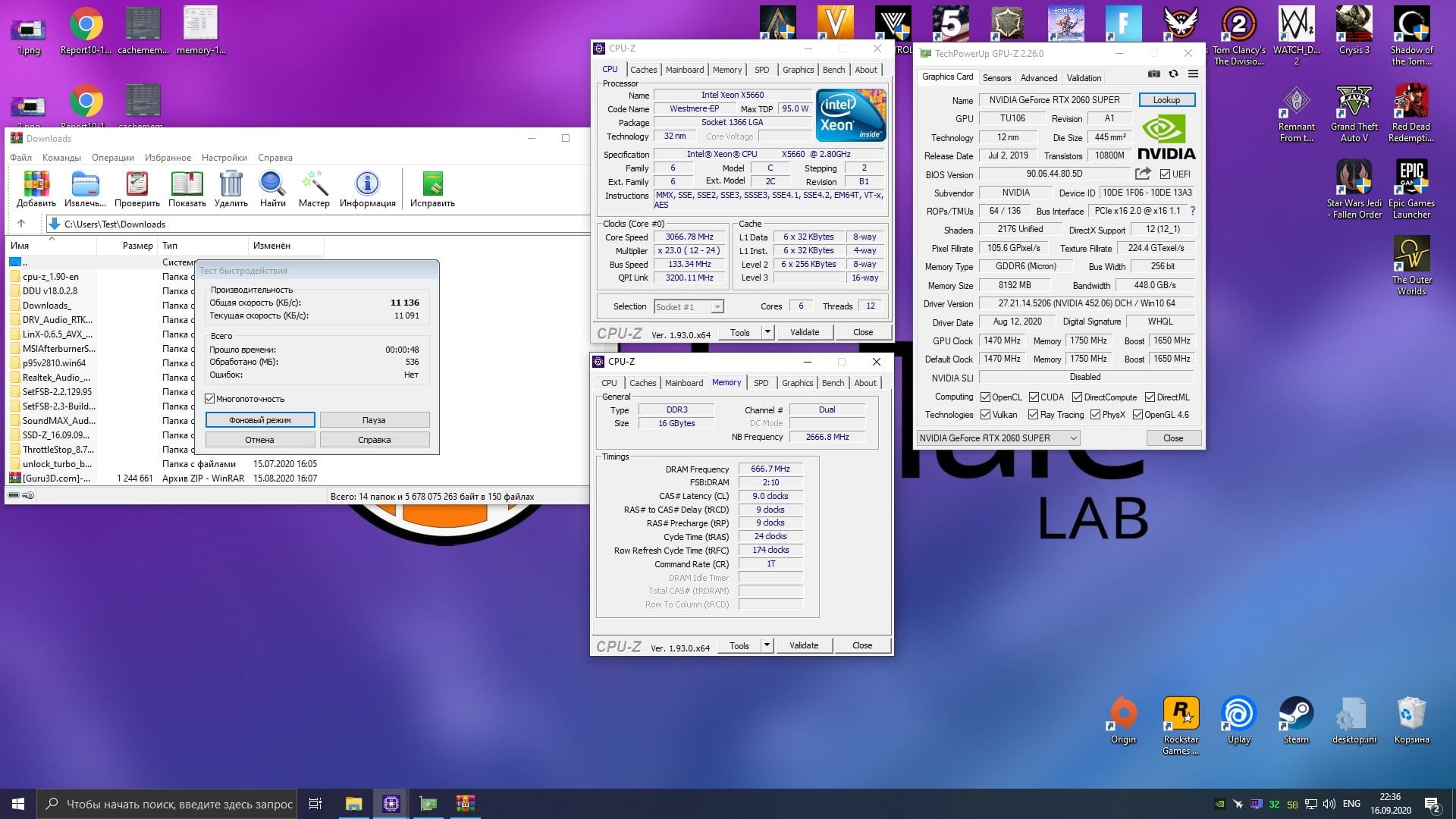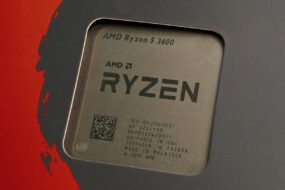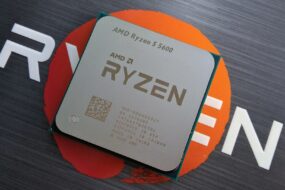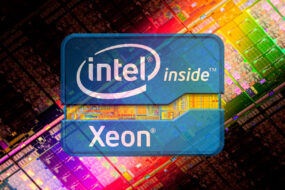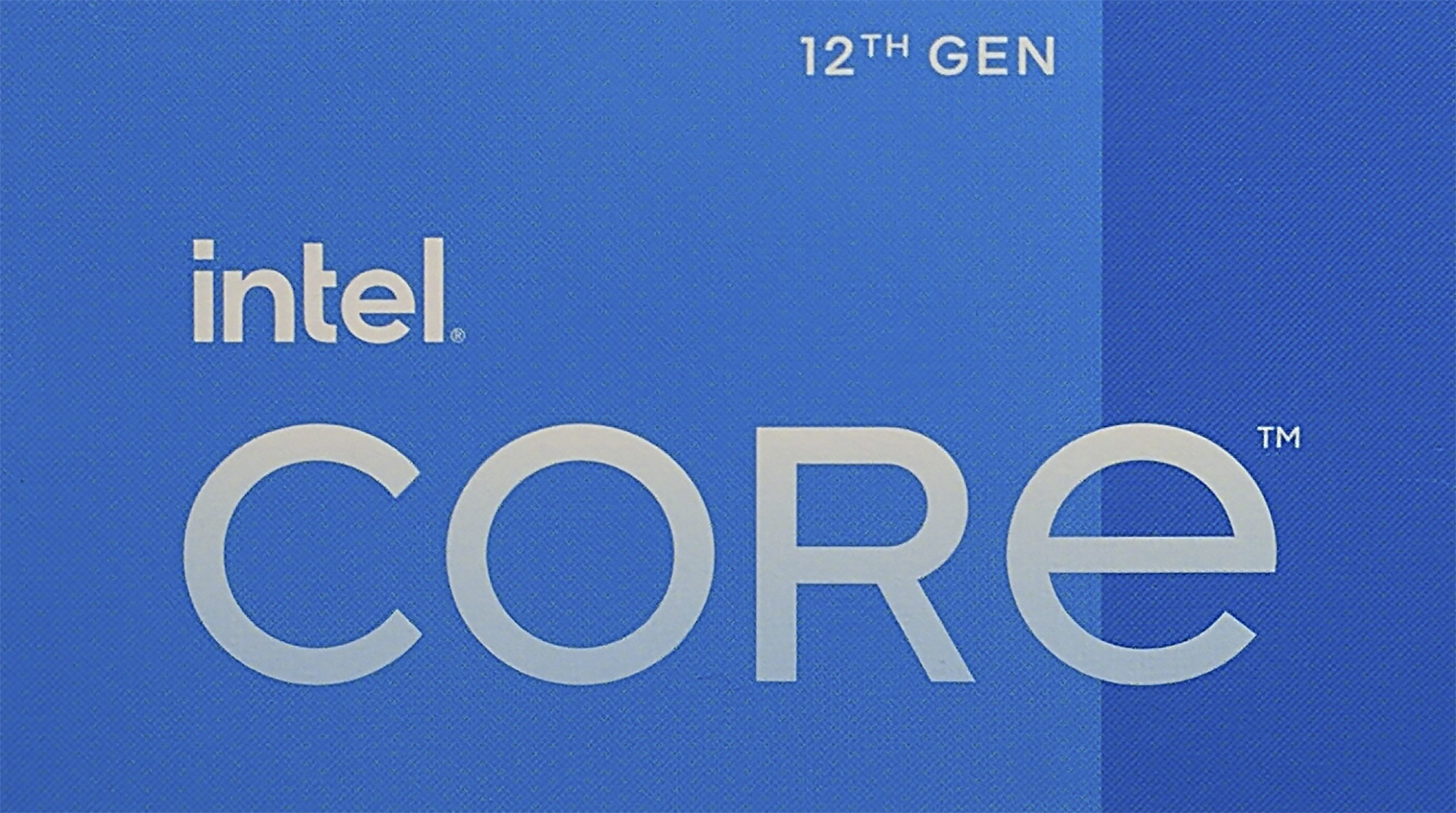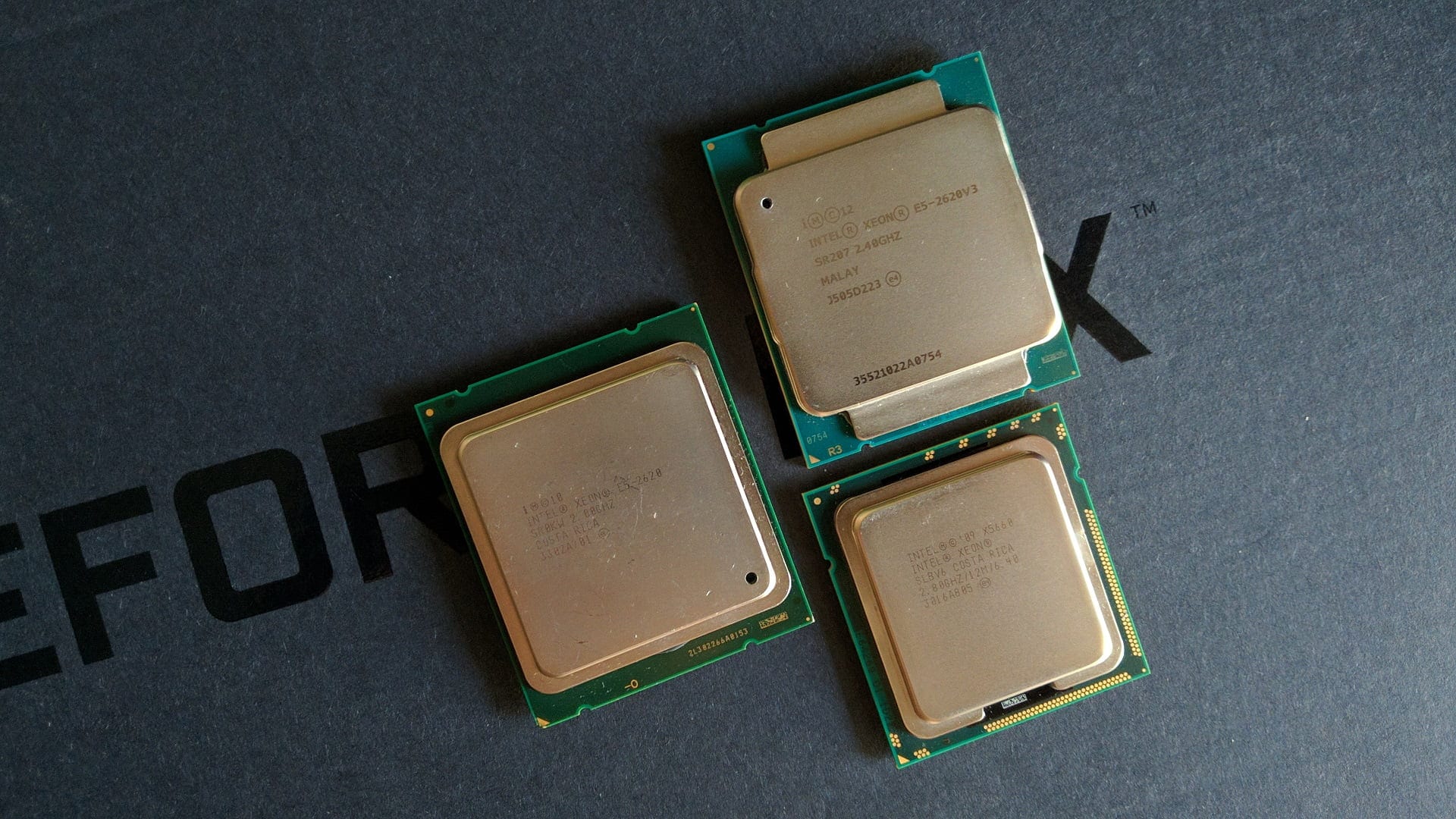
Frankly, we have long wanted to compare the budget six-core Intel Xeon processors of three generations – Westmere, Sandy Bridge, and Haswell. But unfortunately, a sufficiently powerful video card was absent in the laboratory for a long time, and with the AMD Radeon RX474 available at that time, testing could turn into a study of the potential of the graphics processor, but not the central one.
Now, a relatively powerful 8GB NVIDIA GeForce RTX 2060 SUPER graphics card has entered the test laboratory, and now, finally, it’s time to look at what budget 6-core, 12-thread processors are capable of in popular games, professional programs, and benchmarks.
Welcome to the first material from the September bench session!
The main test participants:
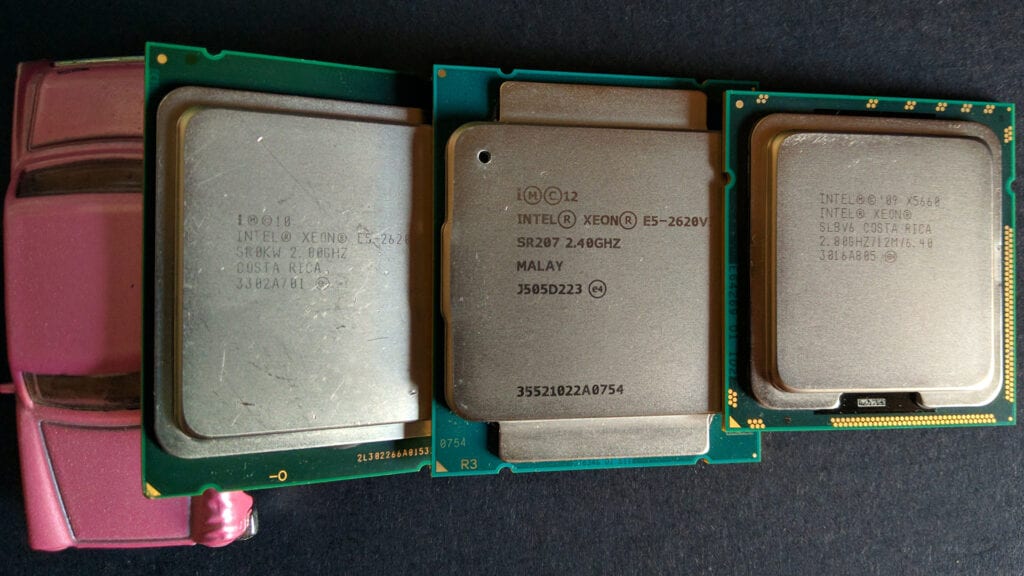
Xeon X5660
Xeon X5660 is designed for installation in an LGA 1366 processor socket. This CPU is based on a 32-nanometer Westmere-EP crystal revision B1 (in fact, a complete analog of such a Gulftown crystal). Each core of this 6-core, 12-thread “monster” from 2010 carries 256KB of L2 cache and also has access to a shared 12MB L3 cache.
The base frequency of the X5660 is only 2800MHz, however, thanks to Intel Turbo Boost technology, it can reach 3066MHz for all 6 cores, as well as 3200MHz for one core. The TDP of the chip cannot exceed 95 watts.
All the above information is confirmed by the CPU-z utility, adding to this the fact that the memory controller and L3 cache of the X5660 processor operate at a frequency of 2666MHz, and the maximum supported RAM frequency is 1333MHz.
Of the technologies required at the moment, the X5660 has only a set of SSE4.2 instructions in the arsenal, but Westmere-EP does not have a vital AVX extension, and from gaming tests, you can personally see how much this reduces the relevance of this CPU.
Xeon E5-2620 v1
The Xeon E5-2620 is designed to fit into the first-generation LGA 2011 processor socket. This chip is based on a 6-core, 12-thread Sandy Bridge-EP crystal, revision C2. Exactly as in Westmere-EP, each core of Sandy Bridge-EP has 256KB of L2 cache at its disposal, but the total cache of the third level of Sandy Bridge-EP is much larger and amounts to an impressive 15MB.
The base frequency of the Xeon E5-2620 is 2000 MHz, which is pitiful by today’s standards. Taking into account Intel Turbo Boost technology, of course, it can reach 2300 MHz for all six cores, but this looks completely unconvincing, especially when looking at the frequency characteristics of the rest of the test participants.
Unfortunately, the motherboard from the DELL T3610 workstation is not able to read the frequency of the memory controller built into the processor. Nevertheless, we are well aware that the MC frequency of the Sandy Bridge architecture is tightly tied to the frequency of the processor cores. Thus, in the case of the Xeon E5-2620, the MC speed is limited to 2300MHz, and the maximum RAM frequency is 1333MHz.
The Xeon E5-2620 boasts SSE4.2 and AVX expansion sets. The power consumption of the cheapest “six-core” for the LGA 2011 platform cannot exceed 95 watts, but in practice, it does not even reach 70 watts.
Xeon E5-2620 v3
So we got to the highlight of our review. Meet one of the most affordable, powerful, and demanded processors of 2020 – Xeon E5-2620 v3.
This CPU is based on the relatively recent Haswell architecture, which automatically informs us about support for the current and much-needed AVX, AVX2, and FMA3 instructions. In addition, the E5-2620 v3 is designed for installation in the LGA 2011 v3 socket, which means that it supports modern and affordable DDR4 RAM, which, together with a 4-channel memory controller, allows you to achieve memory bandwidth at the level of 50GB/s.
But this is not the main feature of the E5-2620 v3. The main reason for such a high popularity of this processor is the ability to “force” all 6 cores, 12 threads available to it, to operate at the maximum set frequency for one core at 3200 MHz: The so-called “Unlock Turbo Boost” is a modification of the original motherboard BIOS.
There are dozens if not hundreds of guides on unlocking the maximum frequency for Xeon chips of the Haswell generation on the net, therefore, we will not dwell on this in detail. Nevertheless, if you are interested in reading our guide, let us know in the comments. If there are enough requests, we will definitely compile this material.
Let’s move on to more detailed characteristics of the Xeon E5-2620 v3: The base frequency of the chip is 2400 MHz, but, as we said above, thanks to “Unlock Turbo Boost”, the final frequency for all cores is 3200 MHz.
Haswell-EP crystal again repeats the Westmere-EP and Sandy Bridge-EP formula; each CPU core has 256KB of L2 cache. The shared L3 cache is similar to the E5-2620 of the first version and is 15MB.
In the Haswell architecture, Intel engineers returned to the separation of the frequency of the integrated memory controller and the L3 cache with the core frequency: the speed of the Xeon E5-2620 v3 CP was fixed at around 2992 MHz. The maximum RAM frequency is limited to DDR4-1866MHz. The TDP of the E5-2620 v3 chip should not exceed 85 watts, and I would like to note that this is already a rather significant limitation. Indeed, in programs actively using AVX2, the chip frequency can be reduced to 2800 MHz:
It is quite obvious that in games and simpler programs/benchmarks such frequency reduction cannot be. Nevertheless, we simply could not keep silent about it. For this reason, for clarity, from this article, the graphs will contain exactly the actual fixed processor frequency when passing a particular test.
Table with technical characteristics of all tested CPUs:
| Processor | Xeon X5660 | Xeon E5-2620 | Xeon E5-2620 v3 | Xeon E5-2643 | Xeon X5570 |
| Connector | LGA 1366 | LGA 2011 | LGA 2011 v3 | LGA 2011 | LGA 1366 |
| Base frequency | 2800MHz | 2000MHz | 2400MHz | 3300MHz | 2933MHz |
| Max frequency | 3200MHz | 2500MHz | 3200MHz | 3500MHz | 3333MHz |
| Max frequency of all cores | 3066MHz | 2300MHz | 2600MHz | 3400MHz | 3200MHz |
| Frequency of all cores during testing | 3066MHz | 2300MHz | 3200MHz | 3400MHz | 3200MHz |
| Number of cores | 6 | 6 | 6 | 4 | 4 |
| Number of threades | 12 | 12 | 12 | 8 | 8 |
| Technical process | 32nm | 32nm | 22nm | 32nm | 45nm |
| L2 cache (per core) | 256KB | 256KB | 256KB | 256KB | 256KB |
| L3 cache (overall) | 12MB | 15MB | 15MB | 10MB | 8MB |
| L3 / MC frequency | 2666MHz | Related to core frequency | 3000MHz | Related to core frequency | 2666MHz |
| TDP | 95W | 95W | 85W | 130W | 95W |
| RAM controller | 3-channel | 4-channel | 4-channel | 4-channel | 3-channel |
| RAM support | DDR3-1333MHz | DDR3-1333MHz | DDR4-1866MHz | DDR3-1333MHz | DDR3-1333MHz |
Test setup:
- Processor — Xeon E5-2620, Xeon E5-2620 v3, Xeon E5-2643, Xeon X5570, and Xeon X5660;
- Cooling — Cooler Master Hyper 212 Black Edition (RR-212S-20PK-R1);
- RAM for LGA 1366 — 2 x 8GB HyperX Genesis Na’Vi Edition (KHX16C9C2K2/8) with total volume of 16GB;
- RAM for LGA 2011 — 2 x 8GB Micron MT36JSF1G72PZ-1G4M1HF with total volume of 16GB;
- RAM for LGA 2011 v3 — 4 x 4GB G.SKILL DDR4@1866MHz F4-2400C15S-4GNT with total volume of 16GB; (delays: 10-10-10-24);
- Motherboard LGA 2011 — DELL T3610 (09M8Y8);
- Motherboard LGA 2011 v3 – Kllisre X99-D8 (AD12) with a modified BIOS (Unlock Turbo Boost, as well as the ability to manage timings);
- Motherboard LGA 1366 — DELL T3500 (09KPNV);
- Video card — KFA2 GeForce RTX 2060 SUPER 8GB (Power Limit 115%);
- SSD — KINGSTON 120GB SA400S37120G (Windows 10 1903/Apps);
- Hardware — Seagate 2TB ST2000DM008-2FR102 (Games);
- Power supply — Chieftec GPS-1250C.
Software
- Windows 10 Pro v1909 x64;
- CPU-z v1.93.0 x64;
- AIDA64 v6.10.5200;
- NVIDIA Driver v. 452.06;
- Cinebench R15.38;
- Cinebench R20.060;
- xNormal 3.19.3.39669 x64 (NM Map anti-aliasing x4, AO Map anti-aliasing x1);
- Blender 2.90.0;
- HWBot x265 Benchmark v2.0.0;
- WinRar v5.91 x64;
- 7-Zip v20.02 alpha x64.
Games and graphics settings:
All of the games below have been updated to the latest or stable version.
Assassin’s Creed Odyssey:
- API — DirectX 11;
- Display mode – Full screen;
- Screen resolution – 1280 × 720;
- Resolution modifier – 100%;
- Vertical sync – Off;
- Graphics Preset – Maximum;
- Adaptive Quality – Off;
- Anti-aliasing – Off;
- Shadows – The Highest;
- Surroundings – Highest;
- Texture Detail – High;
- Relief – High;
- Small Object Density – Highest;
- Fog – High;
- Water – Highest;
- Fullscreen reflections – High;
- Volumetric Clouds – Highest;
- Detail of character textures – High;
- Character – High;
- Volumetric Lighting – Highest;
- Depth of Field – High.
Battlefield V:
- API _ DirectX 12;
- Display mode – Full screen;
- Full screen resolution – 1280×720;
- Chromatic aberration – Yes;
- Image grain – Yes;
- Vignette – Yes;
- Optical distortion – Yes;
- DXR Enabled – Yes;
- RTX DLSS – Yes;
- Frame rate limitation – 200;
- Rendering of Subsequent Frames – No;
- Vertical sync – No;
- GPU Memory Limits – None;
- Graphics quality – Ultra;
- Texture quality – Ultra;
- Lighting quality – Ultra;
- Effects quality – Ultra;
- Post-processing quality – Ultra;
- Mesh quality – Ultra;
- Relief quality – Ultra;
- Grass quality – Ultra;
- Global shading – HBAO;
- Ray Tracing Reflection Quality – Ultra;
- Number of high quality objects – Ultra;
Control Ultimate Edition:
- API — DirectX 12;
- Display mode – Full screen;
- Resolution – 1280 × 720;
- Render resolution – 853 × 480;
- NVIDIA DLSS — On;
- Vertical sync – Off;
- Graphics Preset – High;
- Detail of the remote environment – High;
- Texture quality – High;
- Texture filtering quality – High;
- Shadow Resolution – High;
- Shadow Filtering – Medium;
- Volumetric Lighting – High;
- Landscape Quality – Medium;
- SSAO — On;
- Fullscreen reflection quality – Medium (this option is unavailable with active RTX technology);
- Global Reflection Quality – High;
- Antialiasing quality MSAA – 2X;
- Granularity – On;
- Blur – On;
- Ray Tracing – On;
- Ray tracing quality preset – High (if this option is disabled, then all parameters included in it are also disabled);
- Reflected ray tracing – On;
- Tracing transparent reflections – On;
- Indirect scattered lighting tracing – On;
- Contact Shadow Ray Tracing – On;
- Wreck Trace – On;
Counter-Strike: Global Offensive:
- API — DirectX 9;
- Resolution – 1280 × 720;
- Display mode – Full screen;
- Overall Shadow Quality – High;
- Detail of models and textures – High;
- Texture streaming – On;
- Effects Detail – High;
- Shader Detail – Very High;
- Increased Player Contrast – Off;
- Multicore Processing – On;
- Multi-sample anti-aliasing mode – 8X MSAA;
- Anti-aliasing with FXAA – On;
- Texture filtering mode – Anisotropic 16X;
- Vertical sync – Off;
- Motion Blur – Off;
- Tri-Monitor Mode – Off
Destiny 2:
- API — DirectX 11;
- Display mode – Full screen;
- Resolution – 1280 × 720;
- Vertical sync – Off;
- Frame Rate Limitations – Off;
- Field of view – 105 degrees;
- Graphics Preset – Highest;
- Anti-aliasing – SMAA;
- SSAO — 3D;
- Anisotropic texture filtering – 16X;
- Texture Quality – Highest;
- Shadow Quality – Highest;
- Depth of Field – High;
- Environment detail range – High;
- Character detail range – High;
- Foliage detail range – High;
- Foliage Shadow Display Range – Highest;
- Light rays – High;
- Motion Blur – On;
- Wind gusts – On;
- Render resolution – 100%
- Chromatic aberration – On;
- Grainy Film Effect – On
Far Cry 5:
- API — DirectX 11;
- Display mode – Full screen;
- Resolution – 1280 × 720;
- Graphics quality – Maximum;
- Texture Filtering – Maximum;
- Shadows – Maximum;
- World Geometry and Vegetation – Maximum;
- Water – High;
- Landscape — High;
- Volumetric Fog – High;
- HD Textures – Off;
- Anti-aliasing – TAA;
- Motion Blur – Off;
- Vertical sync – Off;
- Field of view scale – 75 degrees;
- Dynamic Resolution – Off;
- Scale of the resolution – 1 (100%).
For Honor:
- API — DirectX — 11;
- Display mode – Full screen;
- Resolution – 1280 × 720;
- Vertical sync – Off;
- Field of view – 70 degrees;
- Image quality – Very high;
- Texture Filtering – Anisotropic 16X;
- Anti-aliasing – TAA;
- Image scaling – 100%;
- Detail – Very High;
- Texture quality – High;
- Dynamic Shadows – Very High;
- Relief drawing – High;
- Volumetric lighting – MHBAO;
- Dynamic Reflection – High;
- Blur effect – On;
- Oversampling Smoothing – Off.
Horizon Zero Dawn:
- API — DirectX 12;
- Display mode – Full screen;
- Resolution – 1280 × 720;
- Viewing angle – 70 degrees;
- Adaptive Frame Rate – Off;
- Frame limit – Unlimited;
- Frame scale – 100%;
- Vertical sync – Off;
- Configuration – Top quality;
- Textures – Maximum;
- Model quality – Maximum;
- Anisotropic Filtering – Maximum;
- Shadows – Maximum;
- Reflections – High;
- Clouds – Maximum;
- Anti-aliasing – TAA;
- Speed Effect – On;
- Background Light Shading – Maximum.
Red Dead Redemption 2:
- API — Vulkan;
- Resolution – 1280 × 720;
- Display mode – Full screen;
- Vertical sync – Off;
- Texture quality – Ultra;
- Anisotropic filtering – X8;
- Lighting Quality – Medium;
- Global Illumination Quality – High;
- Shadow quality – High;
- Distant Shadow Quality – High;
- Shading SSAO – High;
- Reflection quality – Low;
- The quality of the mirrors is High;
- Water quality – High;
- Volumetric Effects Quality – Medium;
- Particle Quality – Medium;
- Tessellation quality – High;
- Anti-aliasing TAA – Off;
- Anti-aliasing FXАА – On;
- Anti-aliasing MSАА — Выкл;
- Near Volumetric Effects Resolution – Medium;
- Long Range Volumetric Effects Resolution – Medium;
- Volumetric Effects Lighting Quality – Medium;
- High detail light rays – Off;
- Particle Lighting Quality – Medium;
- The quality of soft shadows – Ultra;
- Grass Shadow Quality – Medium;
- Long Shadows – On;
- Shading SSAO (full screen mode) – On;
- Water refraction quality – High;
- Quality of reflections in water – High;
- Water physics quality – High;
- Resolution Scaling – Off;
- Anti-aliasing sharpness TAA – Low;
- Motion Blur – On;
- Anti-aliasing MSАА for reflections – Off;
- Geometry Detail Levels – Ultra;
- Grass Detail – Medium;
- The quality of the trees is Medium;
- Bump texture quality – Ultra;
- Decal quality – High;
- Fur quality – Medium;
- Tree Tessellation – Off
Remnant: From the Ashes:
- API — DirectX 11;
- Screen mode – Full screen;
- Resolution – 1280 × 720;
- Motion Blur – On;
- Vertical sync – Off;
- Distance of shadows – 100;
- Shadow quality – Ultra;
- Anti-Aliasing – Ultra;
- View range – Ultra;
- Textures – Ultra;
- Post-processing – Ultra;
- Effects – Ultra;
- Vegetation quality – Ultra;
- Limiting frames per second – 0;
- Minimize Input Lag – On;
- Field of vision – 1.
Shadow of the Tomb Raider:
- API – DirectX 12
- Resolution – 1280 × 720;
- NVIDIA RTX DLSS – On;
- Screen Mode – Full Screen;
- Exclusive Full Screen – On;
- Vertical sync – Off;
- Graphics quality – Ultra;
- Texture quality – Ultra;
- Ray-traced shadow quality – Ultra;
- Background shading – HBAO+;
- Depth of Field – High;
- World Detail Quality – Ultra;
- Tessellation – On;
- Bloom – On;
- Motion Blur – On;
- Full Screen Reflections – On;
- Full Screen Contact Shadows – High;
- Pure Hair – Medium;
- Volumetric lighting – On;
- Glare – On;
- Full Screen Effects – On
Tom Clancy’s The Division 2:
- API — DirectX 12;
- Screen Mode – Full Screen;
- Resolution – 1280 × 720;
- Reduced input delays – On (slightly reduces the imputlag at the cost of a slight decrease in performance);
- Graphics quality – Custom (in this game, disabling Vertical Sync switches any graphics mode to “Custom” without changing the rest of the settings);v
- Vertical sync – Off;
- Frame Limit – Off;
- Shadow quality – High;
- Local Shadows – High;
- Local Shadow Resolution – High;
- Contact Shadows Sun: High;
- Scalable Resolution – 100%;
- Sharpness effect – 70%;
- Particle quality – Maximum;
- Volumetric Fog – Maximum;
- Reflection Quality – Medium;
- Local reflection quality – High;
- Vegetation quality – Medium;
- Internal dispersion – On;
- Anisotropic filtering – 16X;
- Parallax Maps – On;
- Background Shading – High;
- Depth of Field – On;
- The quality of objects – 100;
- Increasing the broadcast range – 10;
- Neutral lighting – Off;
- Lens Flare – On;
- Vignetting – On
- Water quality – High;
- Chromatic aberration – On;
- Resolution of projected textures – 512;
- High Resolution Sky – On
- Landscape quality – High;
- Anti-aliasing – Maximum;
Watch_Dogs 2:
- Window mode – Full screen;
- Resolution – 1280×720;
- Frame Sync – Off;
- Fps limit – 125;
- Field of view – 70;
- Pixel density – 1;
- Graphics quality – Ultra;
- Geometry – Ultra;
- Additionally – 0%;
- Relief – Ultra;
- Vegetation – Ultra;
- Texture resolution – Ultra;
- Texture Filtering – Ultra;
- Shadows – Ultra;
- Object shadows in headlights – 2 cars;
- Water – High;
- Reflections – High;
- SSLR – Ultra;
- Dynamic particles – On;
- San Francisco Fog – On;
- Depth of Field – On;
- Blur – On;
- Glow – On;
- Volumetric light – HMSSAO;
- Temporary filtering – Off;
- MSAA – Off;
- Post-processing and anti-aliasing – SMAA.
For more visual settings for the quality of graphics in games, you can familiarize yourself with the test video of the Xeon X5660, E5-2620, and E5-2620v3 processors, which is located at the end of this article.
Testing in benchmarks and applications
First, let’s take a look at the metrics of the most basic test suites, and then move on to real-world tasks and software suites.
Overall performance:
CPU-z Benchmark
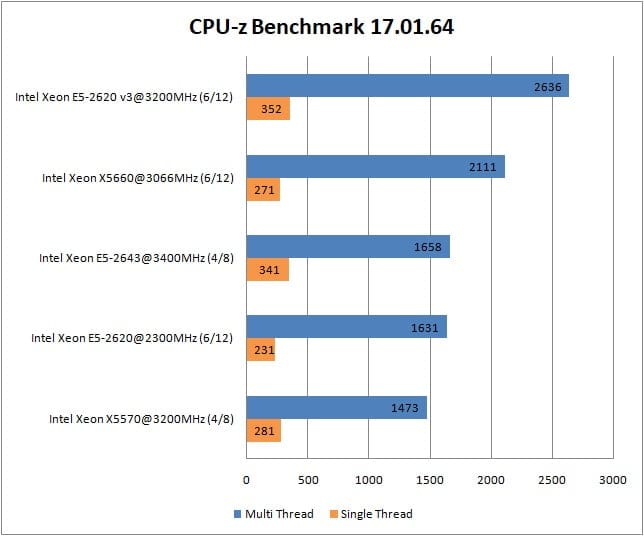
In the benchmark built into the CPU-z utility, the E5-2620v3 chip does not show anything extraordinary. It quite predictably occupies the first line, but it is impossible to call the 25% gap from the closest pursuer significant: in terms of technology, the results obtained are quite consistent with the five-year gap between the X5660 and E5-2620v3. As for the E5-2620 processor, it is still more natural here: the low frequency of 2300 MHz did not allow it to compete even with the 4-core, 8-thread E5-2643.
Rendering, benchmarks:
Cinebench R15
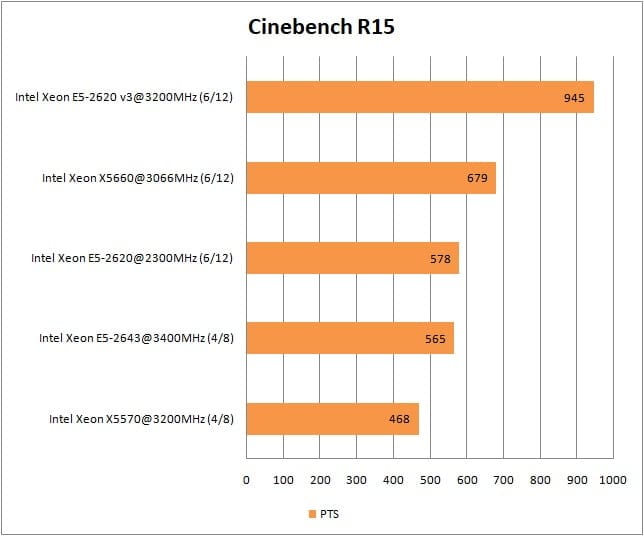
However, in the first more or less realistic and representative load in the form of Cinebench R15, the situation is completely different. The E5-2620v3 chip is ahead of the closest opponent X5660 by an impressive 40%! Even the E5-2620 of the first version was able to demonstrate quite a good result, overtaking its higher-frequency younger brother E5-2643.
Cinebench R20
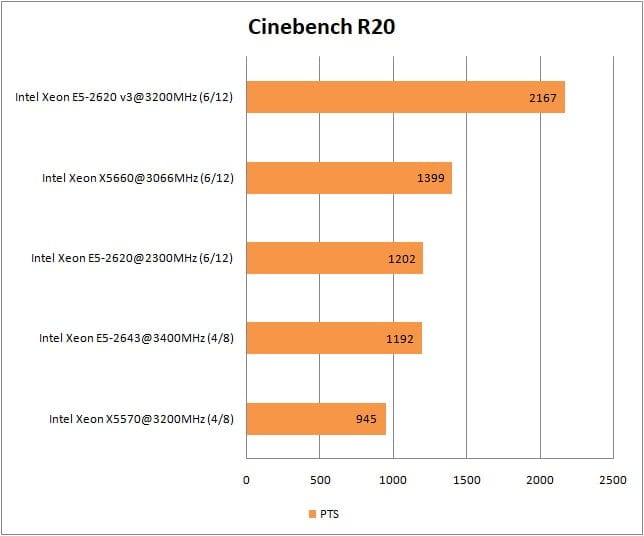
In the current version of Cinebench R20, the gap between the E5-2620v3 and the X5660 has increased to an astonishing 55%!
Corona Render 1.3
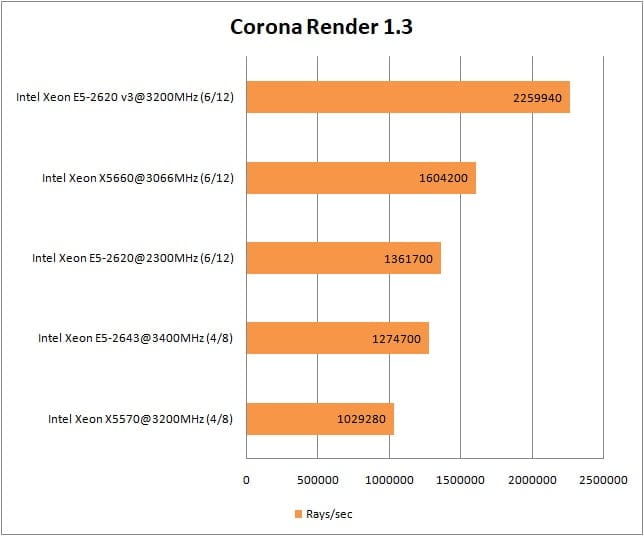
An old Corona 1.3 slightly lowered the 2620v3 to the ground. Here Haswell was able to bypass Westmere “only” by 40%.
V-Ray Render Benchmark
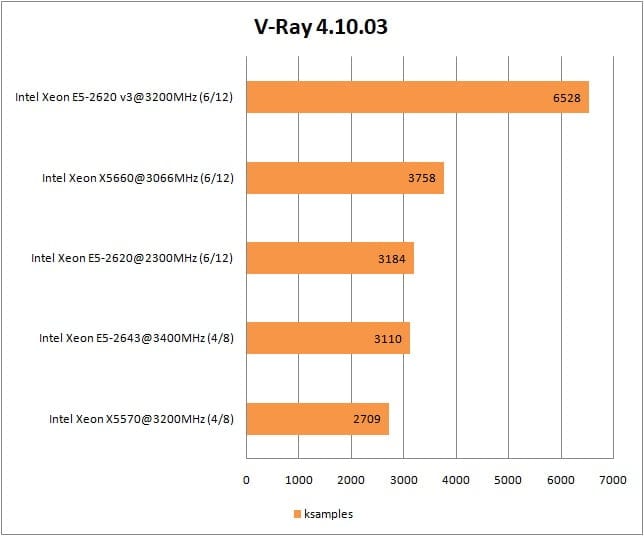
In the V-Ray render test suite, the advantage of the E5-2620v3 over the X5660 turned out to be frighteningly large – as much as 74%! Expansion AVX2 and other architectural improvements Haswell leave no chance for either the 6-core Westmere-EP and Sandy Bridge-EP, or the rest of the test participants.
Rendering, real tasks:
Blender
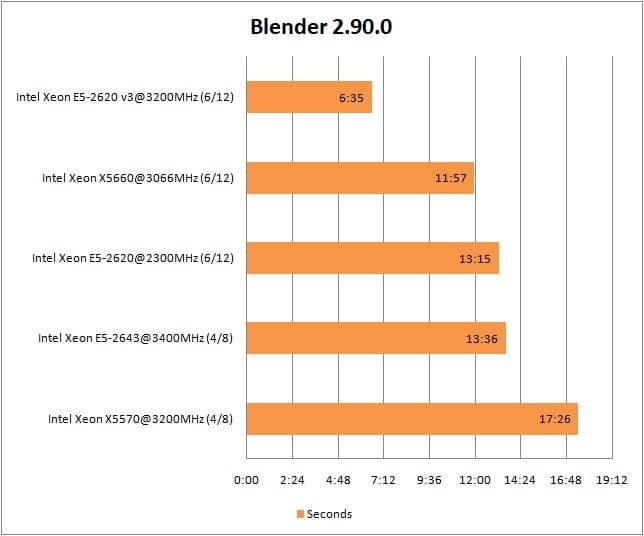
The final render in Blender using the Cycles engine demonstrates in fact a twofold superiority of the E5-2620v3 chip over the X5660. In general, in this program the results of both representatives of the Nehalem architecture look very uncertain: the X5660 does not have a particular advantage over the E5-2620v1, and the X5570 looks extremely dull against the background of the E5-2643.
xNormal
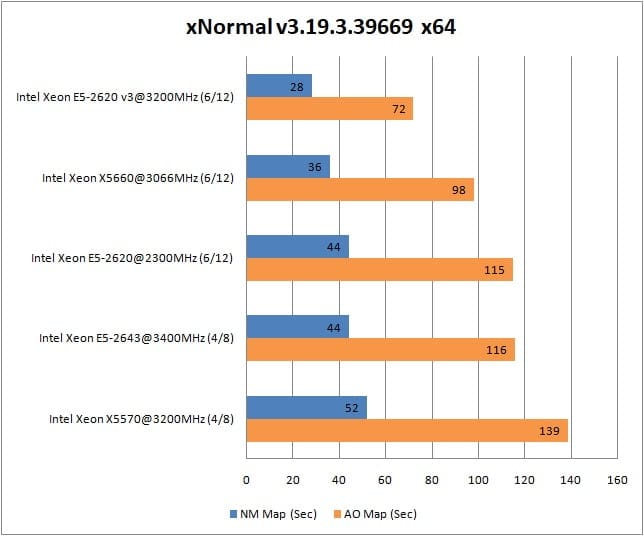
In baking textures using the most popular program xNormal, the E5-2620v3 also demonstrates the best results. This is especially noticeable in the rendering of the AO Map, where the Xeon E5-2620v3 literally crushed all its rivals. And if we compare it with the weakest CPU presented in this test, then the E5-2620v3 is actually 2 times faster than the X5570.
Video encoding
HWBot x265 Benchmark, 1080P
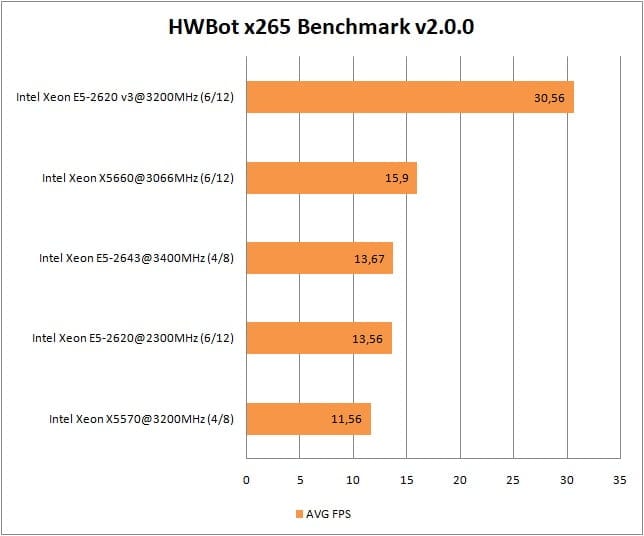
In converting video to x265 format, the E5-2620v3 chip is 92% faster than the X5660 and 125% better than the E5-2620v1!
Archiving
7-Zip
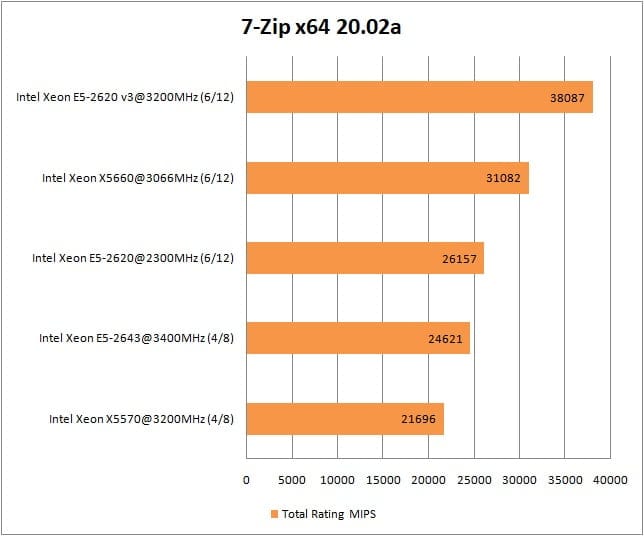
In 7-zip, the gap between E5-2620v3 and X5660 has significantly decreased (only 22%), and this despite the fact that the 6-core representative of the LGA 1366 platform has only dual-channel DDR3 memory with a frequency of 1333 MHz, while a pair of 2620v3 is Quad-channel DDR4 1866MHz.
WinRar
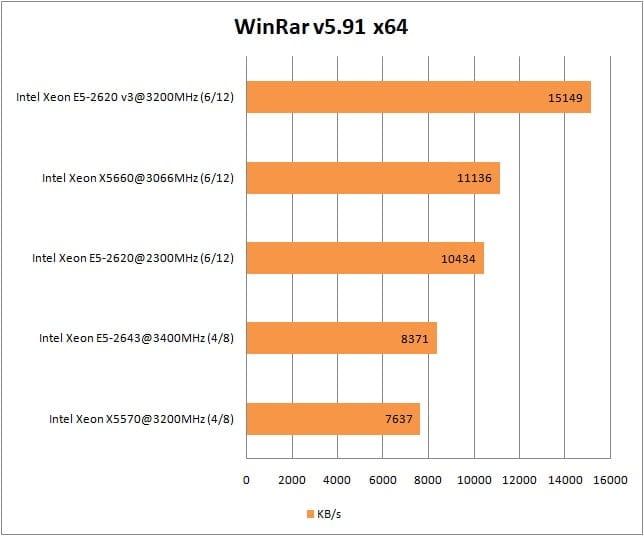
But the situation in WinRar is radically different. This archiver has always had a love for high-frequency, multi-channel RAM, so the 36% superiority of the E5-2620v3 over its closest pursuer is not too surprising.
Well, we’re done with the software tests. Let’s move on to gaming testing of three six-core processors.
Testing in games
Assassin’s Creed Odyssey

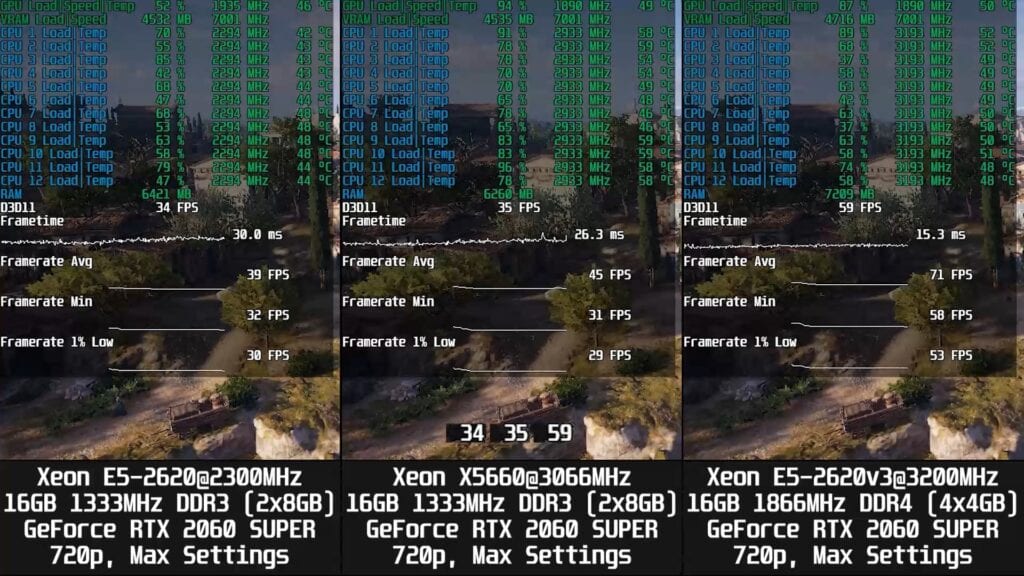
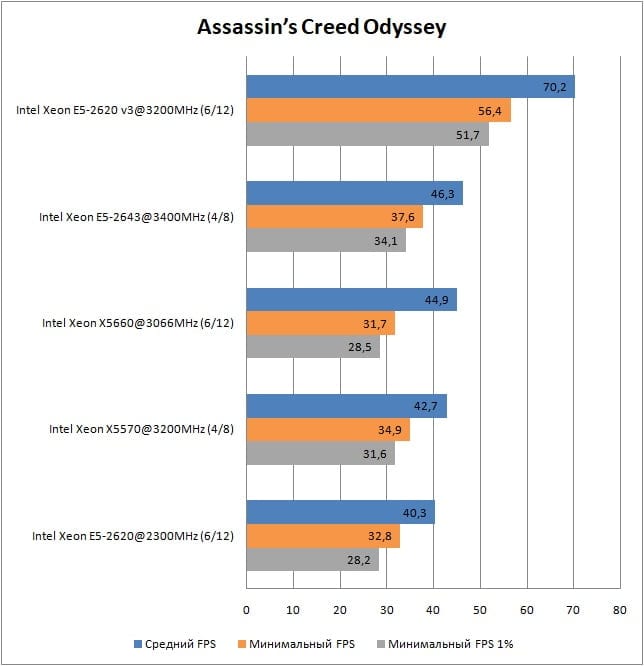
In the first game – the current part of the Assassin’s Creed franchise, the results of the Xeon E5-2620v3 are simply stunning! First: the 6-core Haswell easily achieves over 70 frames per second at maximum graphics settings. Second: Rare events on E5-2620v3 significantly exceed the average FPS of the closest rival Xeon X5660! And thirdly: the superiority of the third version of the 2620 chip over the first is an impressive 75%!
Battlefield V

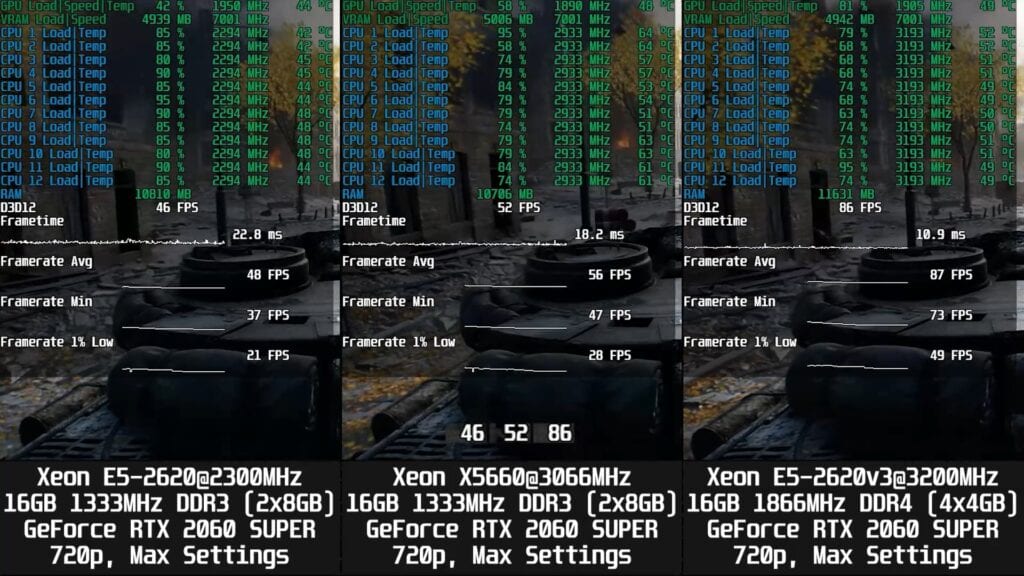
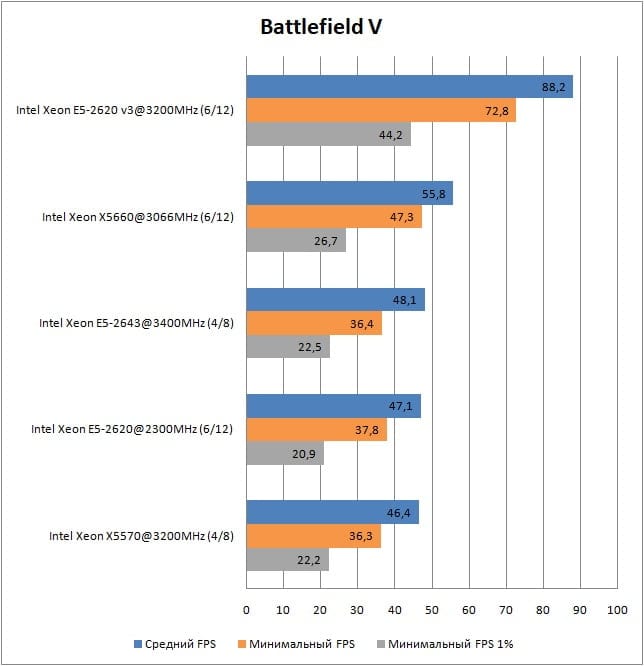
In Battlefield 5, the situation is about the same as in Assassin’s Creed Odyssey: Among all the tested, the E5-2620v3 chip demonstrates the ultimate performance, outperforming the X5600 by 60% and the E5-2520v1 by 87%.
Control Ultimate Edition

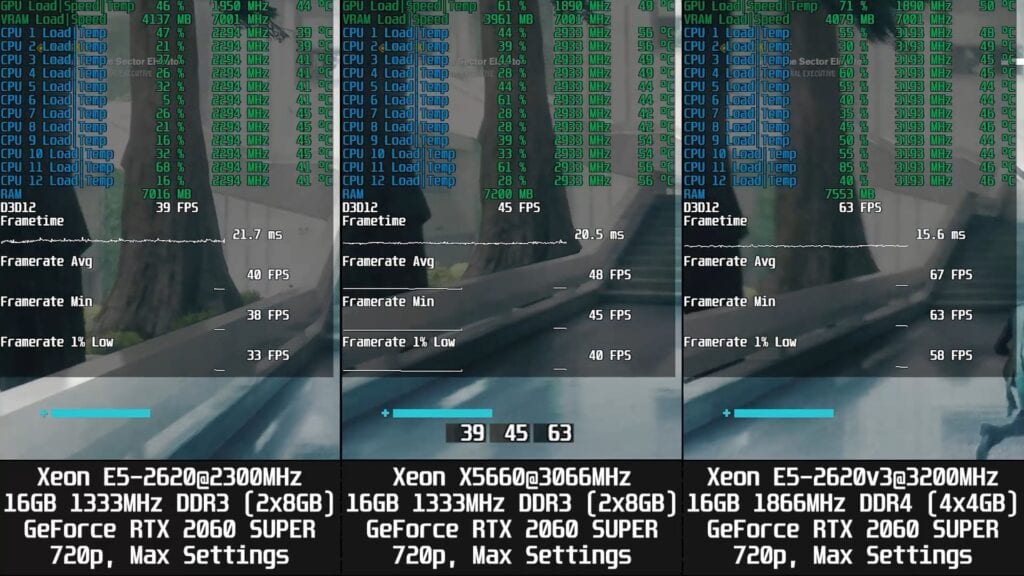
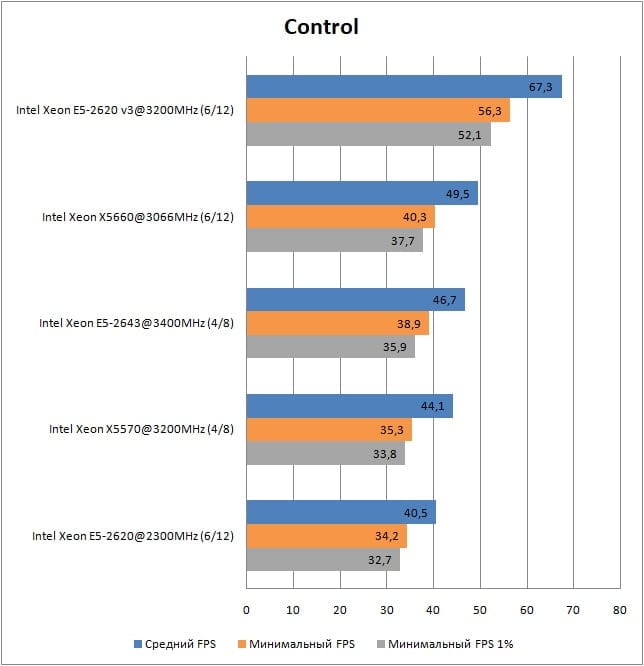
The Control “Northlight” engine is quite well optimized, and in general, you can play Sam Lake’s creation on any of the tested CPUs. However, the E5-2620v3 does the job best. However, it should be noted that its superiority over the X5660 does not exceed 36%.
Counter-Strike: Global Offensive

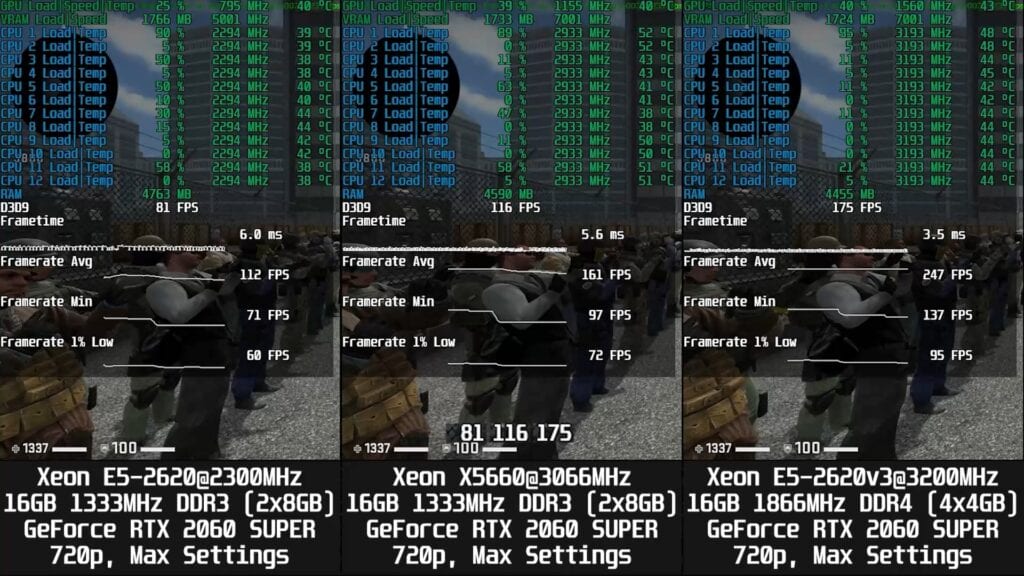
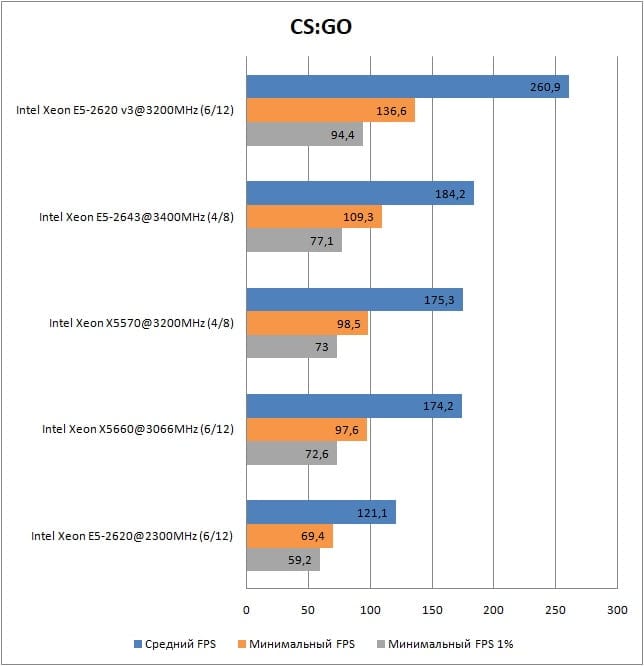
In CS:GO, the 6-core Haswell demonstrates an average of 260 FPS, a minimum of 136 FPS, and rarely 94 FPS. Thus, in this game, the E5-2620v3 chip will be able to provide a 144Hz monitor with the number of frames it needs. However, in CS:GO, weaker chips like E5-2643 and X5570 show quite acceptable performance. The explanation for this is very trivial: Source is a 4-thread engine, which means that specific performance per core is more important for it than the number of cores.
Destiny 2

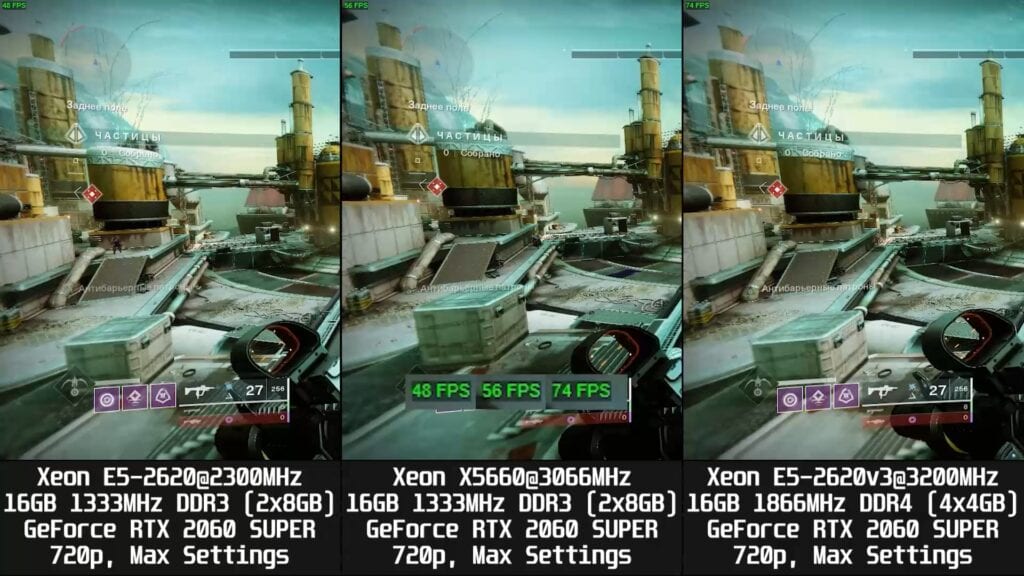
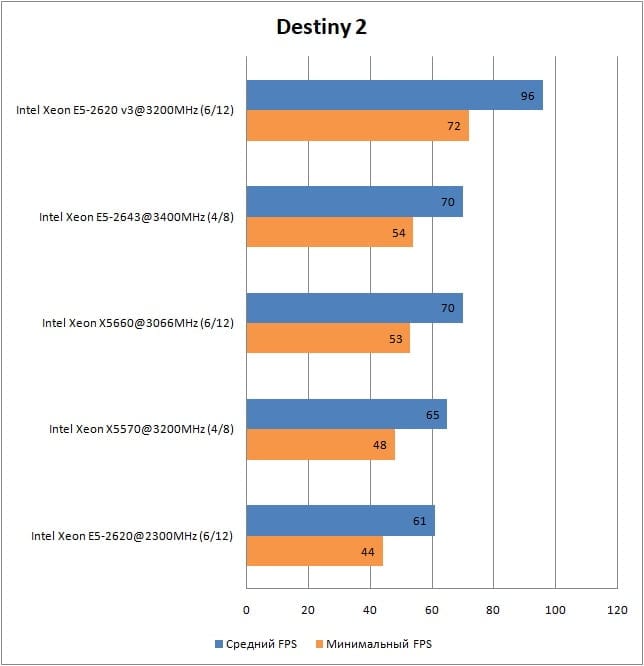
Much like Destiny 2, multi-core processors fail to reach their full potential in this game. Nevertheless, thanks to its high clock speed and support for modern instructions, the E5-2620v3 chip is once again at the top of the chart, outperforming both the E5-2643 and the X5660 by 37%.
In addition, I would like to note that in geometrically saturated locations (planets) such as “EMZ”, “Titan” and “Dream City”, the E5-2620v3 chip does not allow the frame rate to drop below 60 frames per second. And this is at the maximum graphics quality settings.
Far Cry 5

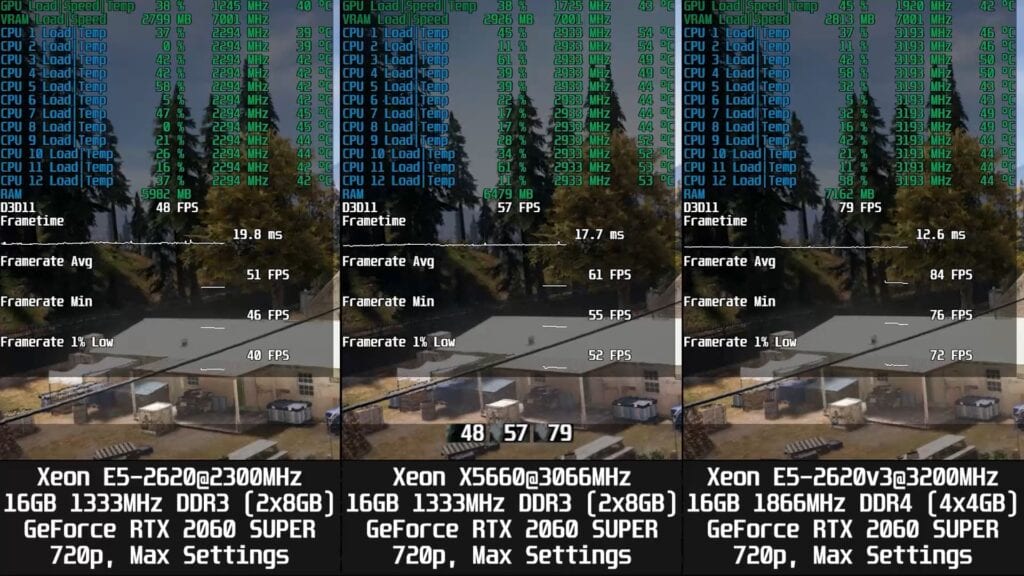
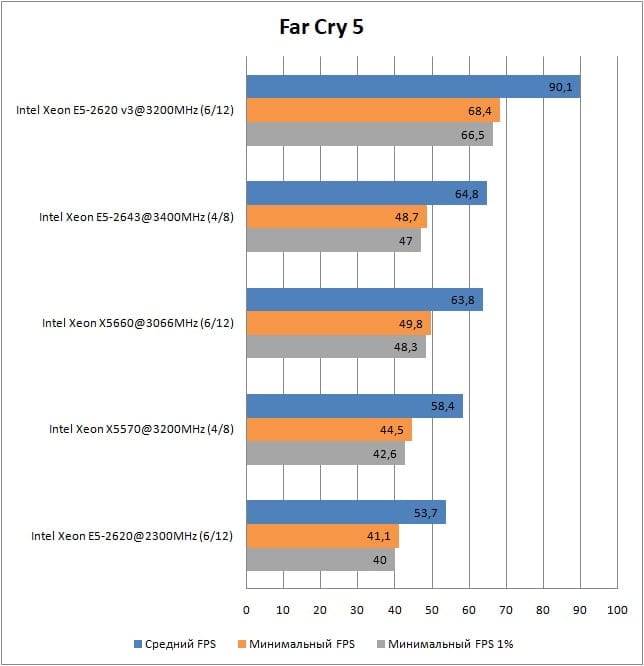
Almost all subjects do a good job with Far Cry 5, showing a similar frame rate of about 53-64. Only the 6-core, 12-thread Haswell is again playing in its league: E5-2620v3 is 38% faster than the X5660, and the superiority over the E5-2620v1 reaches 66%.
For Honor

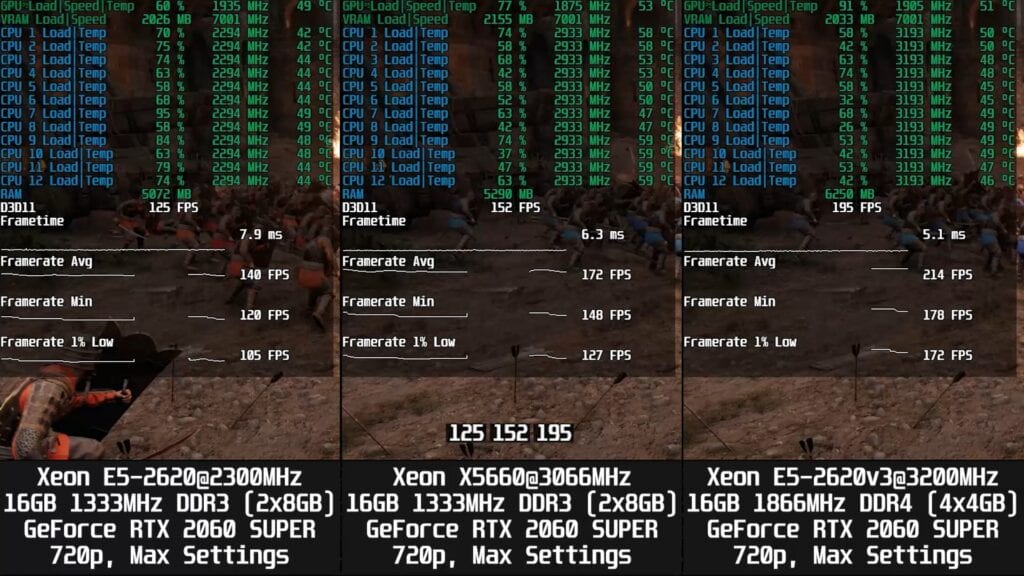
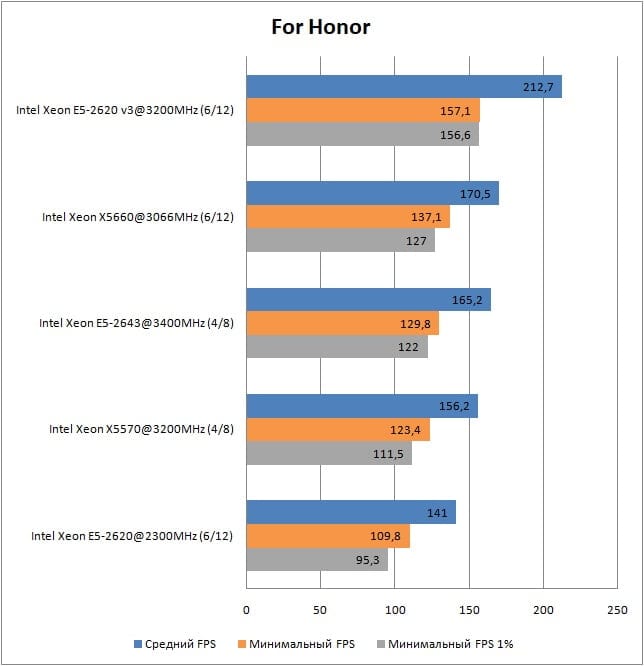
For Honor, as always, meets us with excellent optimization: On the E5-2620v3, on average, we get 212 FPS, which is 24% more than the 170 frames per second that the X5660 gives. But as you probably already noticed from the graphics, you can comfortably play For Honor on any processor: both the X5570 and the E5-2620v1.
Horizon Zero Dawn

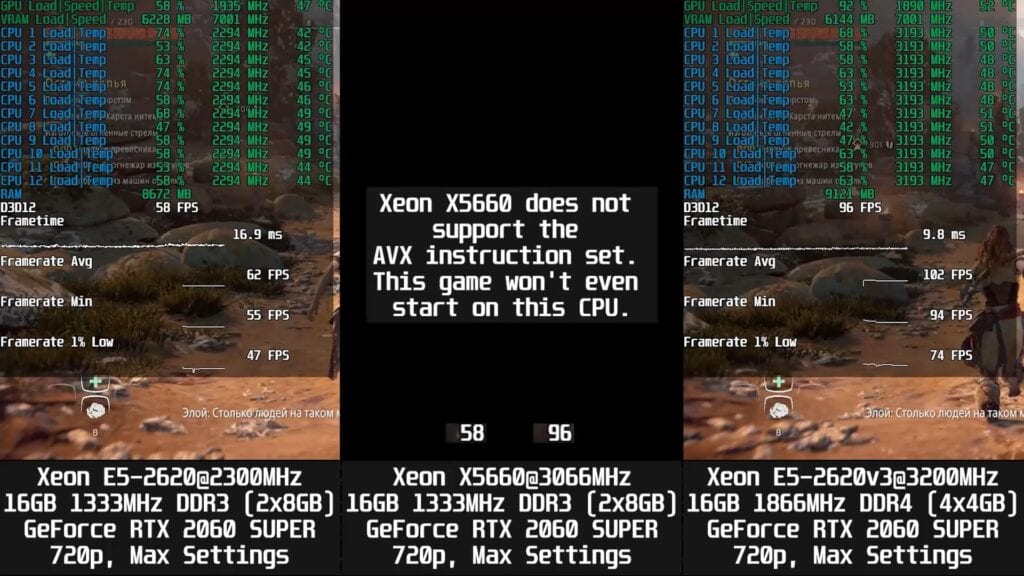
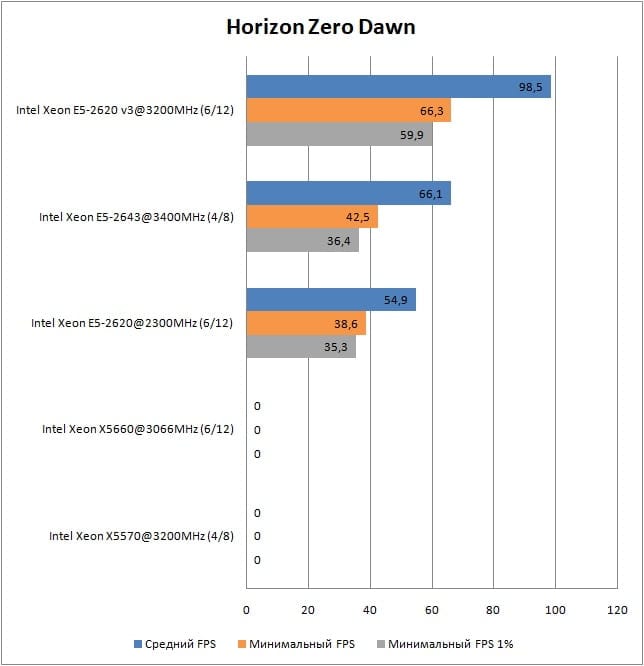
Remember what I told you in the Xeon X5660 processor specs section? There is no error on the graphs, both representatives of the Nehalem architecture – X5570 and X5660 do not support the AVX extension necessary for Horizon Zero Dawn, and simply cannot even launch this project. Thus, the previously unremarkable E5-2620v1 chip “played with new colors”, because on it, albeit not with the highest, to some extent, even the console frame rate, you can play the former exclusive PlayStation 4.
As for the E5-2620v3, this CPU will provide its potential owner with an average of almost 100 frames per second without any problems, which should be noted, just an excellent result!
Red Dead Redemption 2

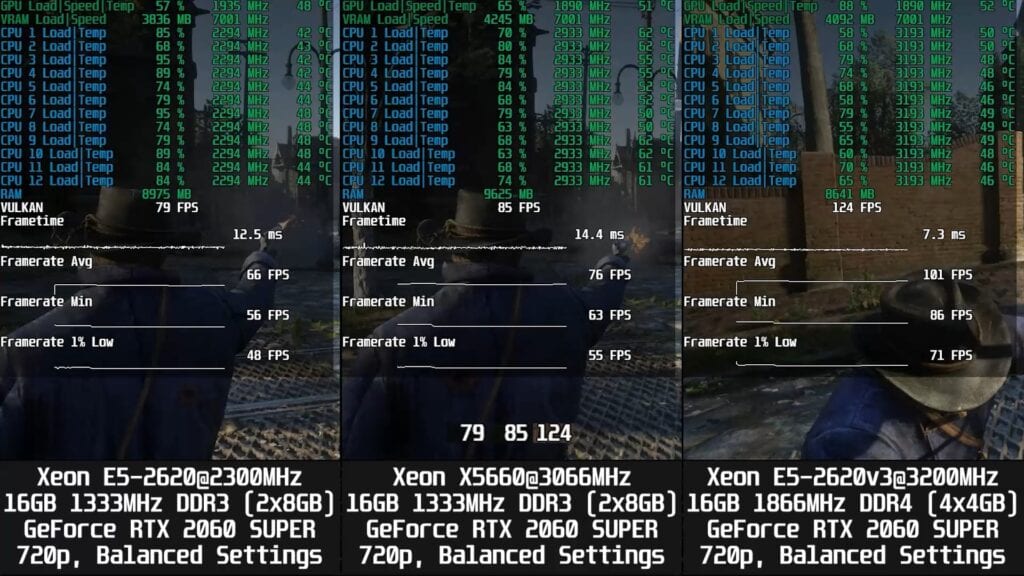
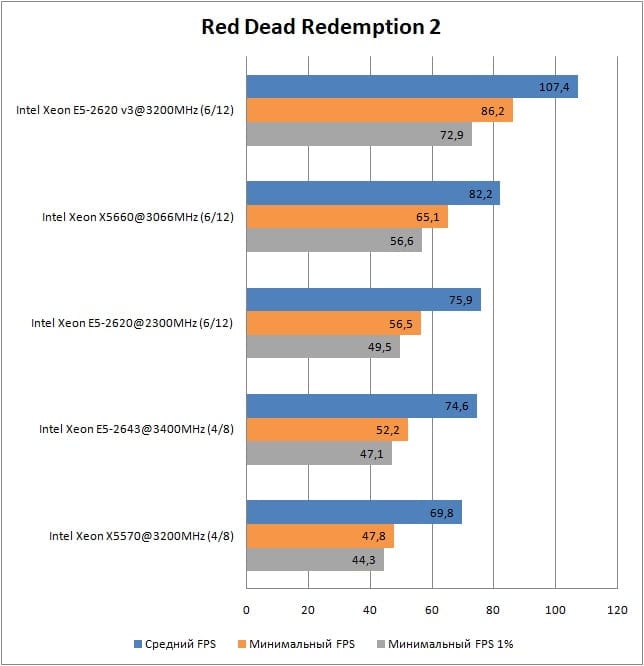
In the latest creation of the Rockstar studio – Red Dead Redemption 2, all processors, without exception, coped with the game with the selected graphics quality settings. Even E5-2620v3 cannot be distinguished here. The 6-core Haswell demonstrates quite natural results, but they cannot be called outstanding.
Remnant: From the Ashes
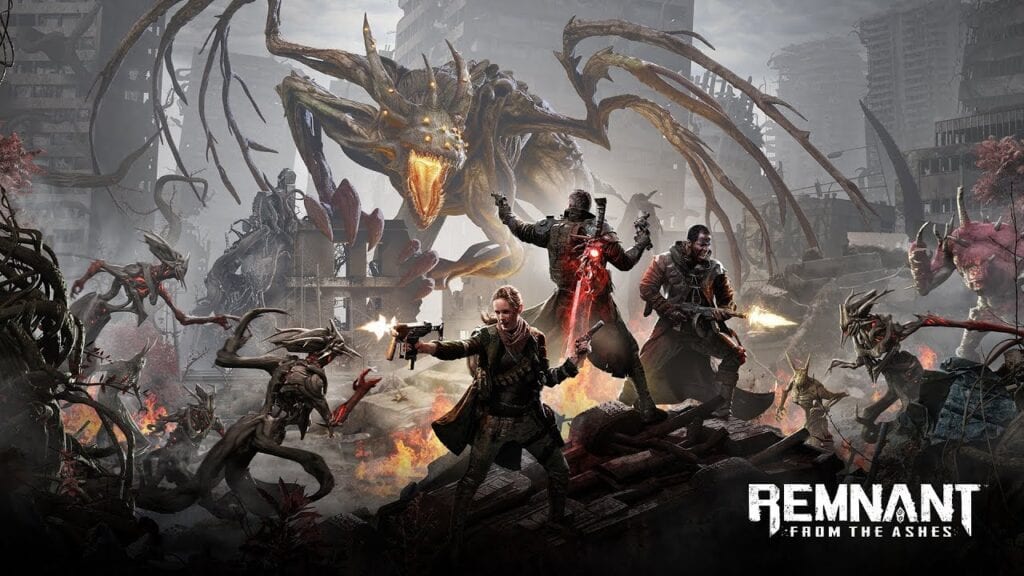
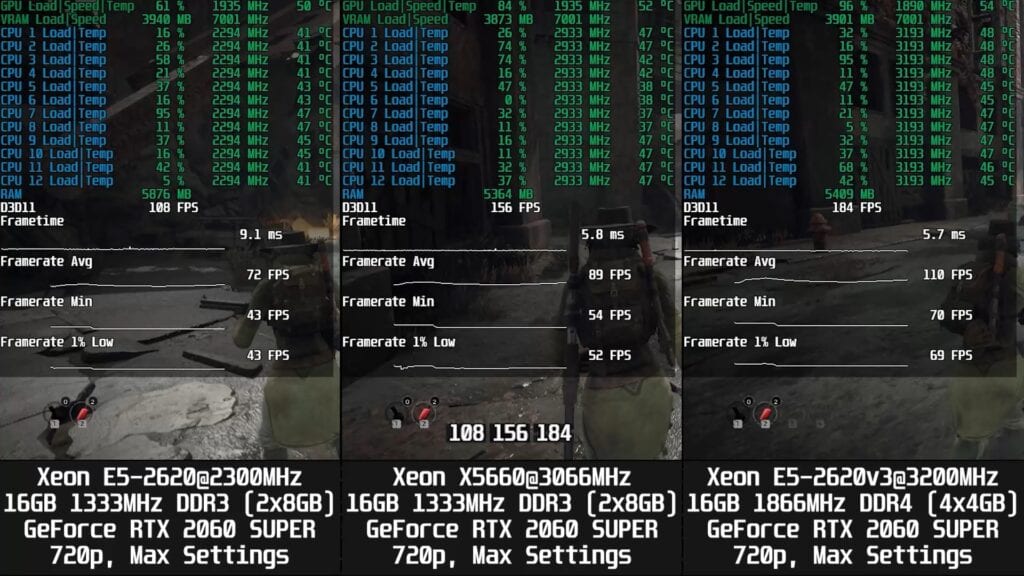
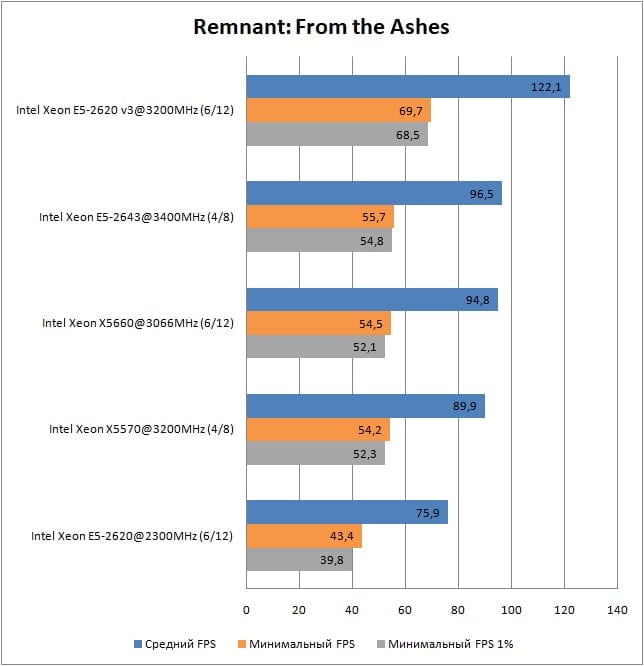
The same goes for the only Unreal Engine 4 project in our test suite of games: Remnant: From the Ashes was extremely cold about E5-2620v3. The superiority of the 12-thread Haswell over the closest rival E5-2643 did not exceed 27%.
Shadow of the Tomb Raider

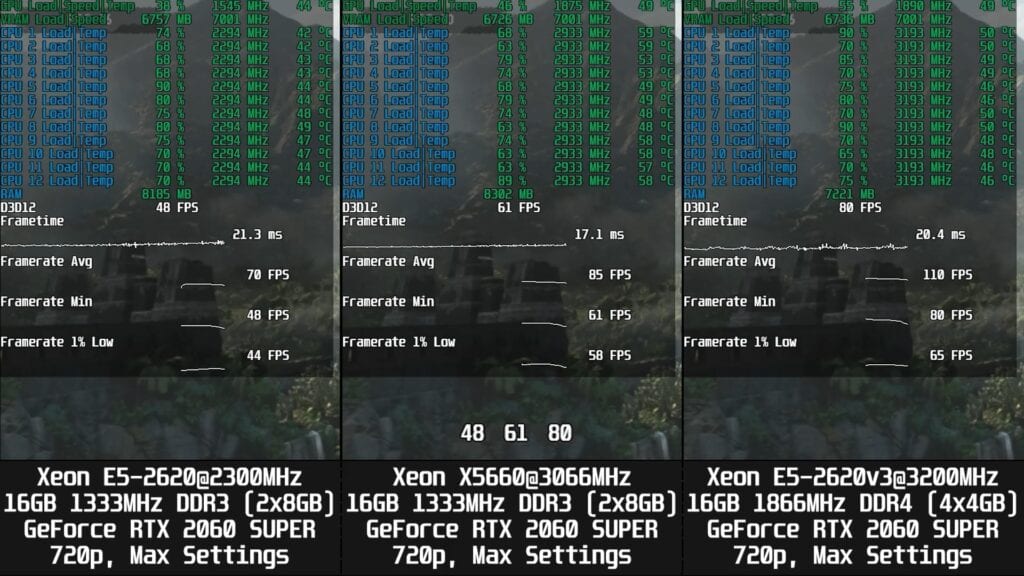
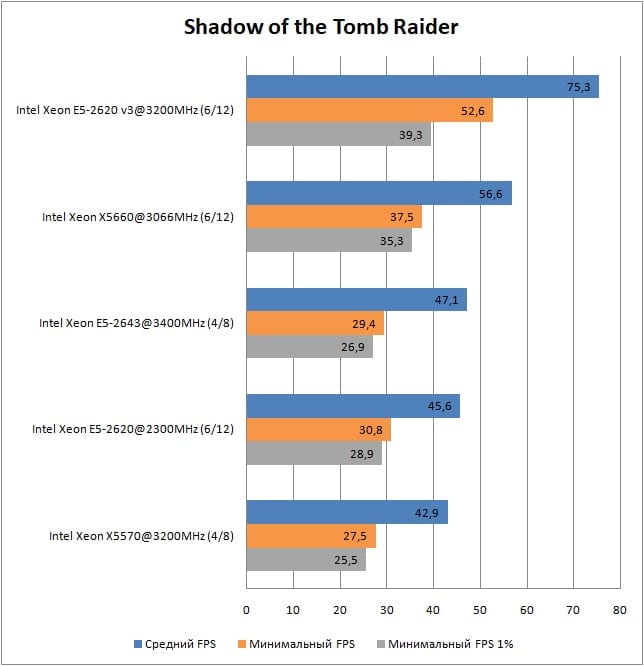
But the E5-2620v3 chip was able to recoup in the actual part of Tomb Raider. The advantage over the X5660 reaches a significant 34%, and over the 2620v1 a whopping 66%.
Tom Clancy’s The Division 2

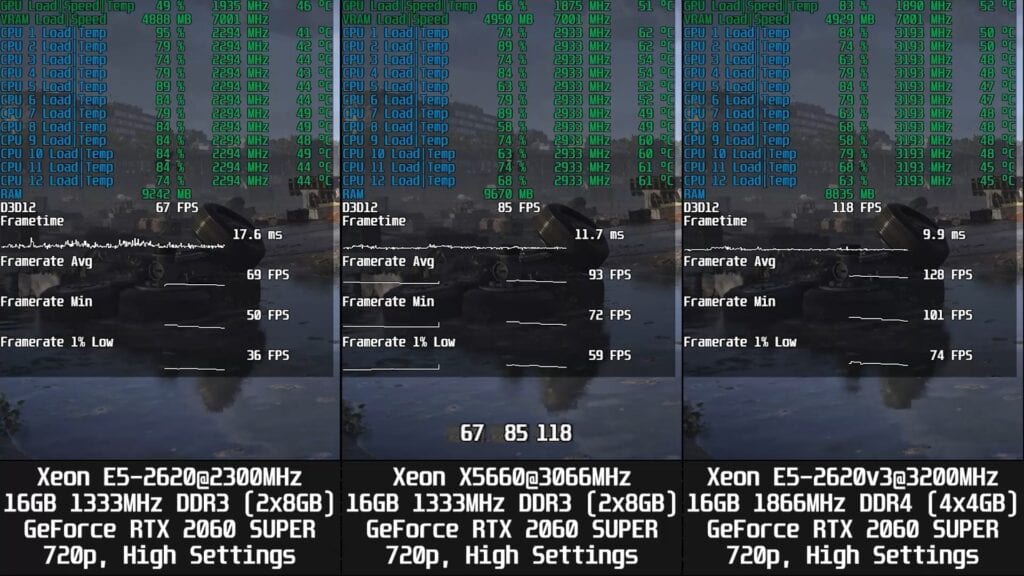
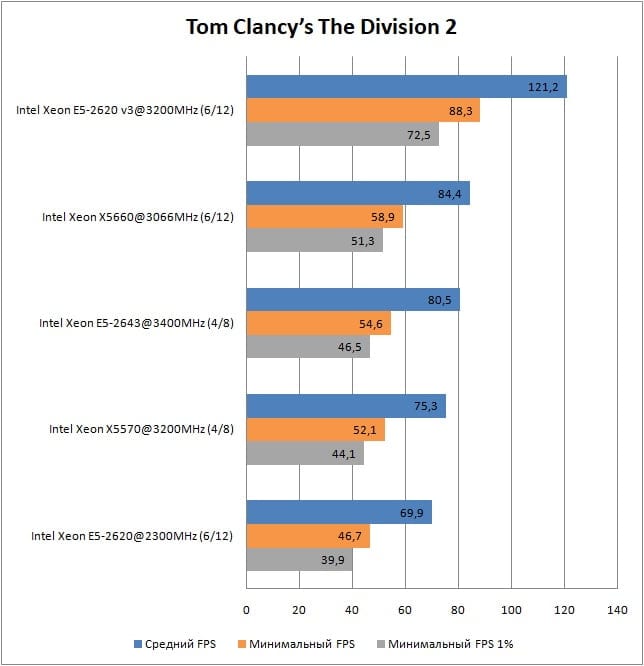
It will be possible to play comfortably at maximum settings in Tom Clancy’s The Division 2 only on the E5-2620v3, E5-2643 and X5660. The X5570 and E5-2620v1 processors show not quite satisfactory results for multiplayer games. However, you can’t call them bad either. Nevertheless, the PVE content of the project can be evaluated with a lower FPS.
Watch_Dogs 2

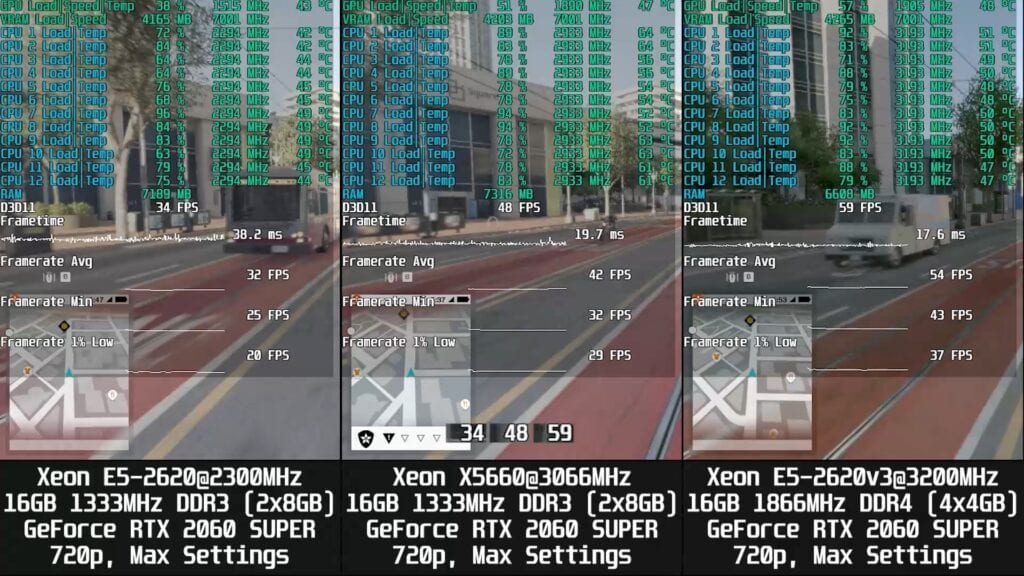
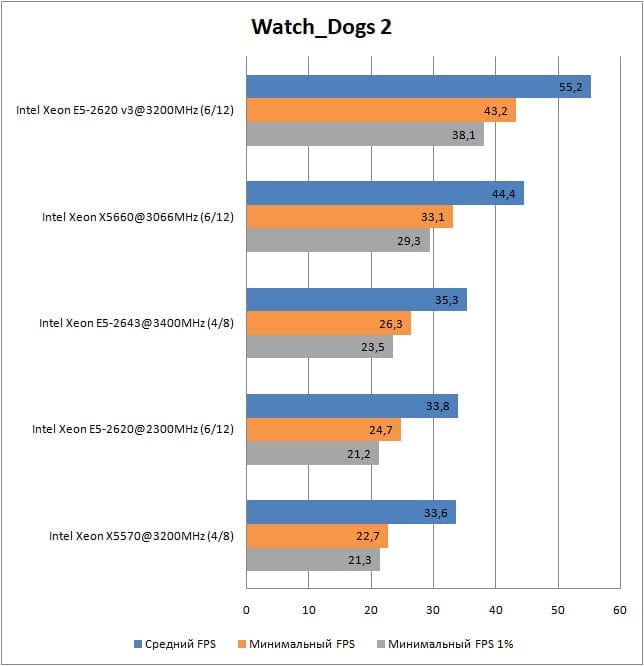
In the last game of our test suite, the situation is perhaps the most ambiguous and difficult. Watch_Dogs 2 is famous for its gluttony in relation to the central processor, and for this reason, it is extremely difficult to get the desired 60 frames per second at the maximum graphics quality settings (here we are talking about budget CPUs).
Unfortunately, the E5-2620v3 is no exception. The 12-thread Haswell averaged 55 fps, which is 25% more than the 44 FPS of the X5660 and 66% more than the 33 FPS of the E5-2620v1.
Below is a video of testing three “six-cores” in games. Please note that for the above graphs, the FPS indicators were taken without “eating” some video recording performance. Therefore, in the video, the frame rate values are slightly lower than in the graphs.
Conclusion
Of all the processors presented in this test, quite predictably, it was Intel Xeon E5-2620v3 that turned out to be the fastest, and in fact, even the ultimate solution. But in the second place, no matter how strange it may look, we would have put the Xeon E5-2620. Why not the faster Xeon X5660? The answer to this question is rather prosaic: the AVX extension.
As the “great” said: “Where is this AVX? Show it, point it!”. And it looks like the time to “show” has come. Horizon Zero Dawn is only the first sign of the need for processor support for AVX instructions, and further games will increasingly require this expansion. It’s possible that the hotly anticipated Cyberpunk 2077 will also refuse to run on chips without AVX. And therefore, in our opinion, it is better to protect yourself and choose a relatively up-to-date chip, so that when your favorite game comes out in a panic, you do not upgrade to the minimum necessary hardware.
If this article was useful to you and you would like to see more similar articles on this resource, then support our site on Patreon! The main goal of fundraising is to expand the component park and improve the quality of testing: replacing the HDD with a voluminous SSD, buying a capture card to reduce the impact of gameplay recording using ShadowPlay on the final results, and so on).
